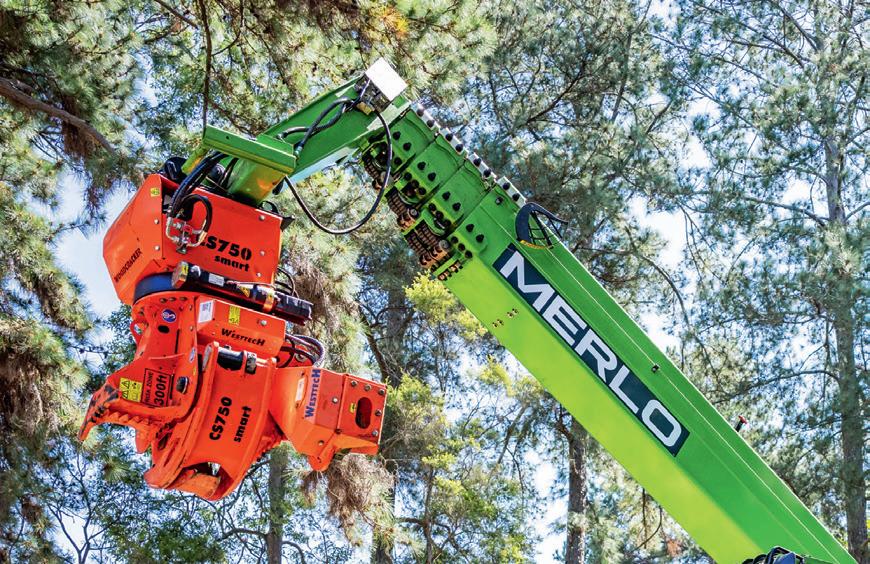

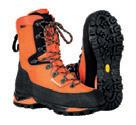
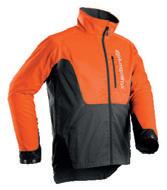
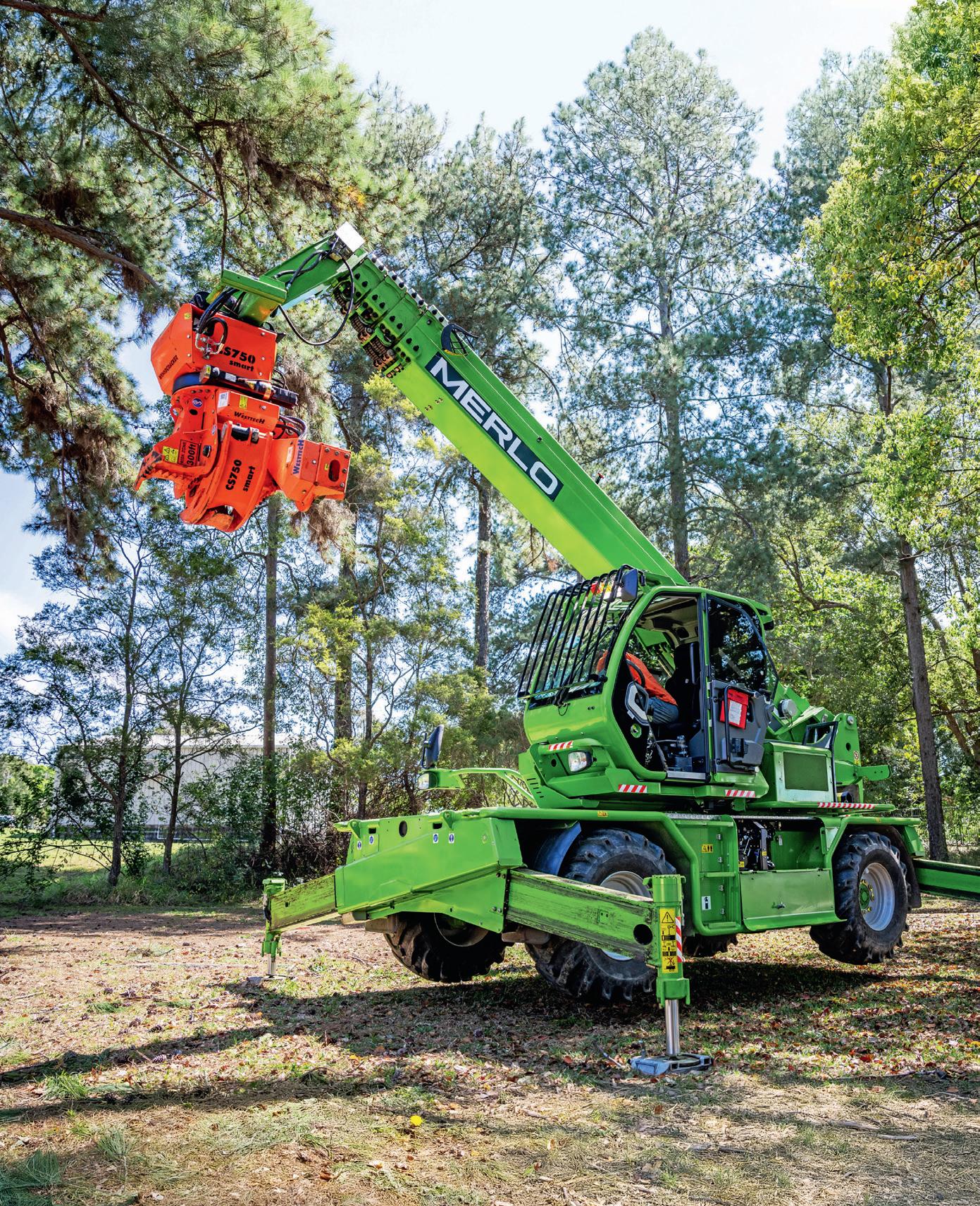
The Merlo Roto 50.26S and Westtech Woodcracker CS750
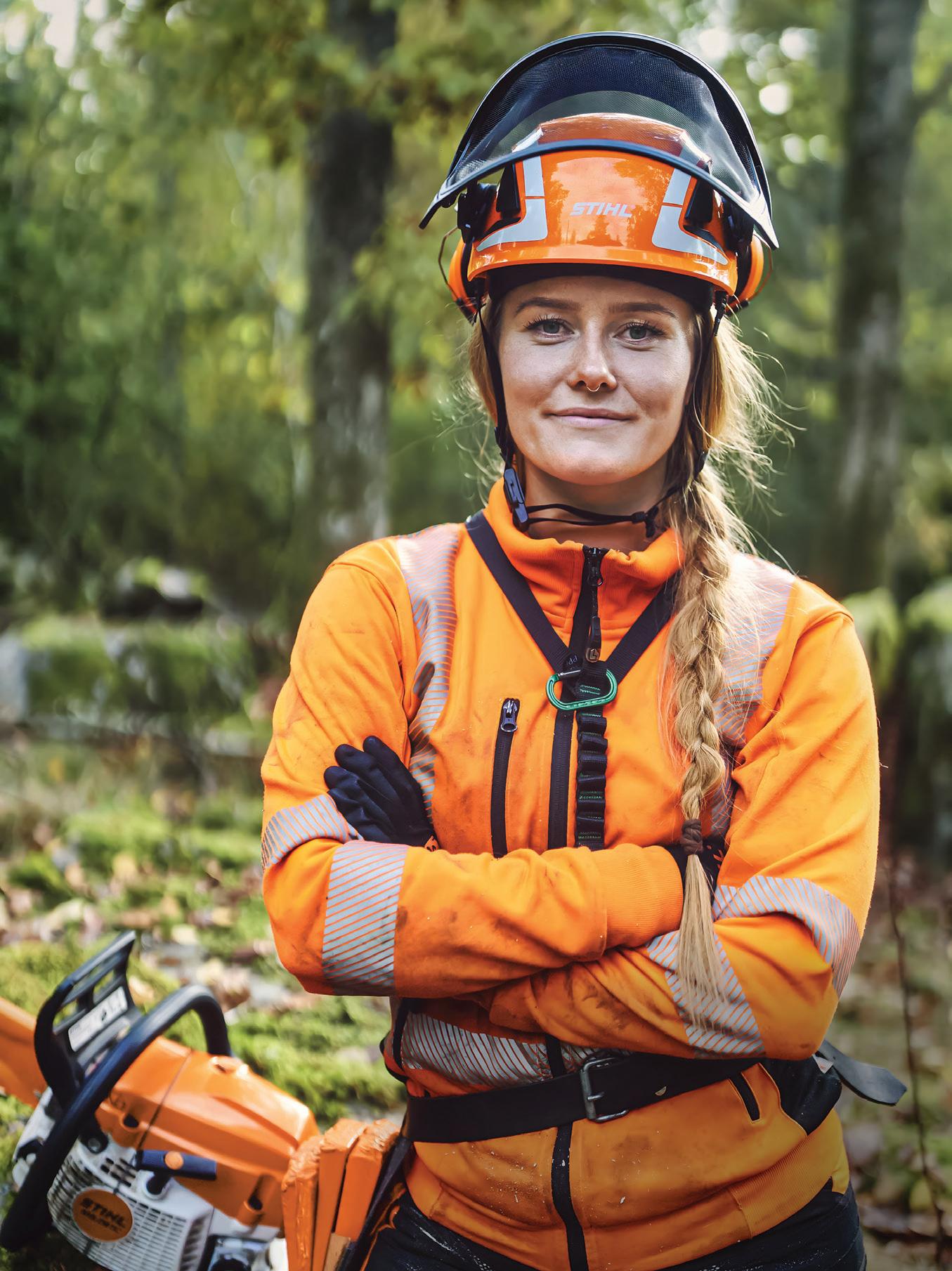





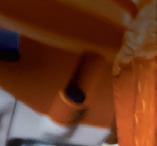
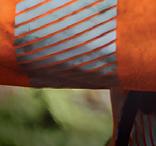












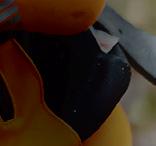

TIME IS MONEY.
Buy STIHL Tools online 24/7 and harness your most valuable resource: your time.
Shop online, collect in-store, and keep working without downtime 24/7 quick collection ready to work
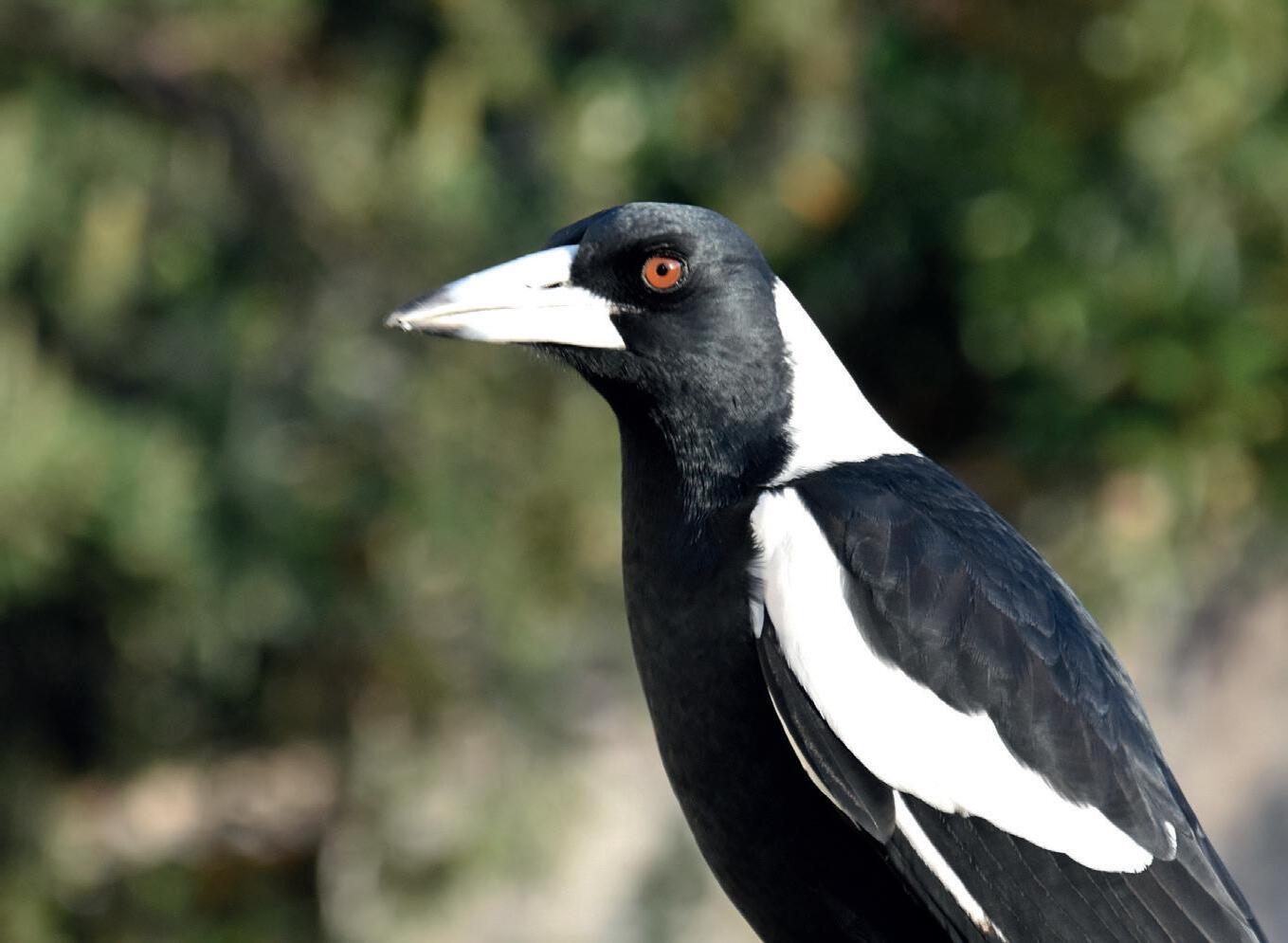






The Merlo Roto 50.26S and Westtech Woodcracker CS750






















Buy STIHL Tools online 24/7 and harness your most valuable resource: your time.
Shop online, collect in-store, and keep working without downtime 24/7 quick collection ready to work

In general, we all place a lot of emphasis on history. If something has happened one way or at one time consistently in the past, we tend to expect it will happen again. Storm season is a good example. In Australia it’s understood to run from roughly November to April.
That’s fair enough, especially in Australia’s north, where what’s called the monsoon in Asian countries has an effect. In Queensland it’s called cyclone season, and it creates a great deal of work for the arbor sector.
Unfortunately, the work usually comes in a tsunami of destruction that leaves families in distress and arborists unable to cope with all the dangerous and difficult situations in need of professional attention.
It’s heartening on these occasions to see a huge volunteer response, not just from individual arborists but from large companies as well. The destruction of Cyclone Alfred last year was a great example. The number of companies and individuals who made themselves, their
knowledge and equipment available to help stricken Australians was truly breathtaking.
Just as an interesting aside, I’ve seen that community feeling more in the arbor world than anywhere else. Go to any climbing competition and you’ll see how competitors, even in the tightest pointscore struggles, will drop everything to help each other with equipment. The same competitors will jump around in glee, cheering for an opponent on a good run. Look around and see how small arbor outfits will club together to help each other tackle large contracts or share machinery.
It’s uplifting to see.
But getting back to history and planning for the future, over the past decade or so nature has made a mockery of ‘storm season’. It’s rained cats and dogs at all times of the year and all over the country, even in the outback, where history says it never rains.
What’s the lesson from this observation?
History does repeat, there’s no doubt
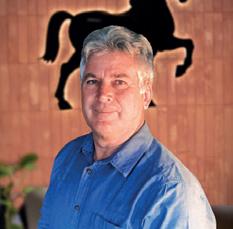
about that, and we all need to be ready to learn from past experience. But we need to remember ‘history’ is a very broad category. For sure the past decade has been wet, but look back to the 1990s and Australia suffered through a terrible drought. Midway through the 20th century weather patterns were similar to those we’re seeing now. The further back through history we look, the less defined Australia’s storm season becomes.
It may not be an exact science, but it’s still relevant. No matter how advanced the weather mapping and modelling become, no matter how convenient access to them is, nothing’s ever guaranteed with Australian weather. Storm season is kicking off as you read this. Be ready for the worst, make sure equipment and personnel are ready for emergency call-outs, and keep fingers crossed the most frightening thing we have to deal with for the next few weeks is an over-protective magpie or two.
Tom Foster Editor
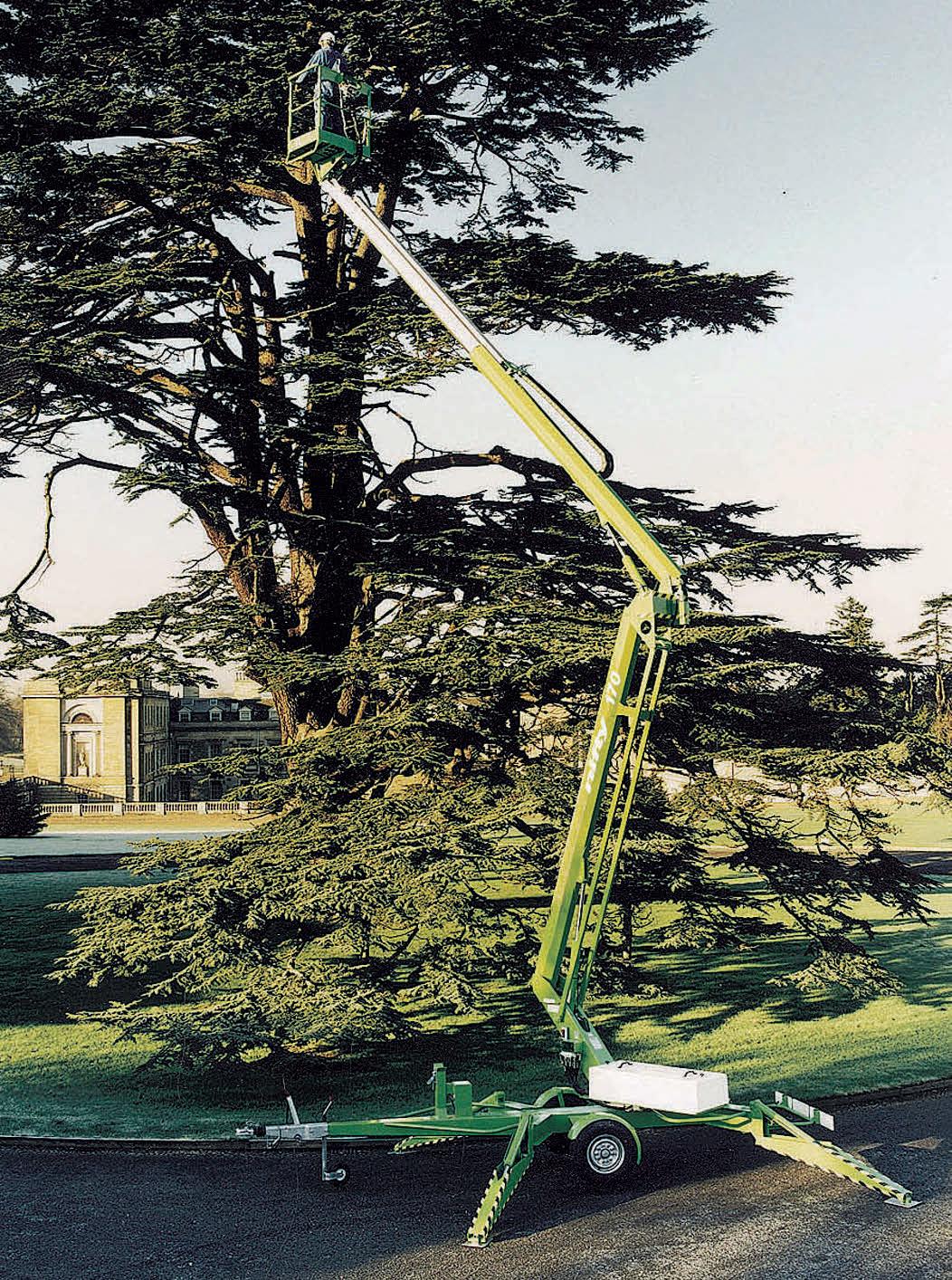

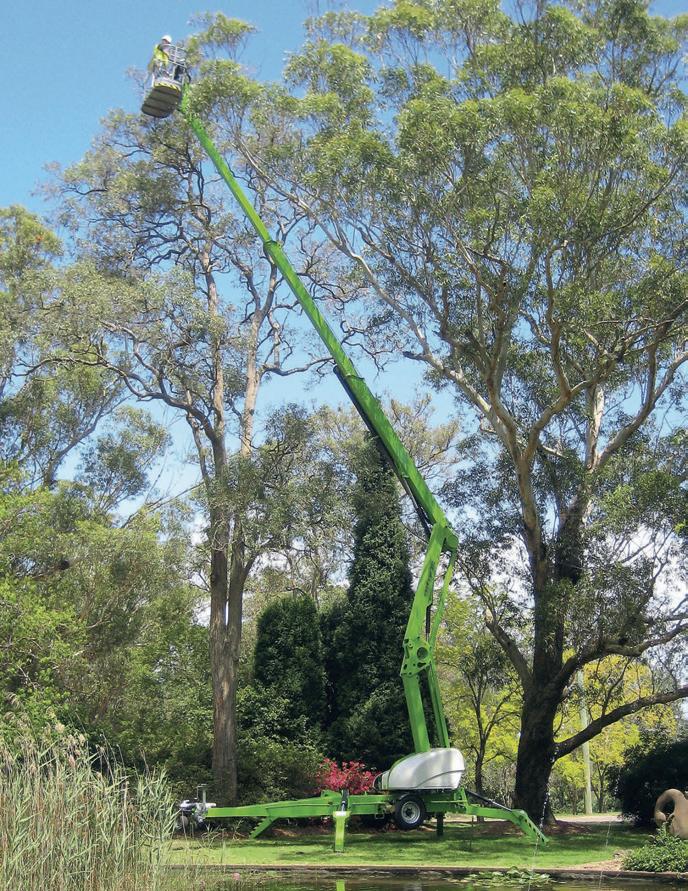
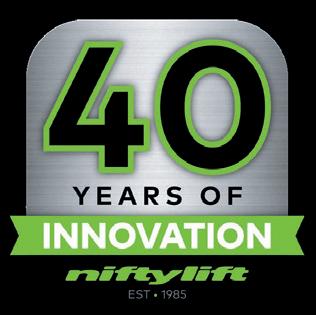

The Australian Arbor Age is published bimonthly by Prime Creative Media Pty Ltd.
Chairman
John Murphy
CEO
Christine Clancy
Head of Sales
Andrew Morrison
Editor
Tom Foster
tom.foster@primecreative.com.au
Client Success Manager
Arianna Lucini
arianna.lucini@primecreative.com.au
Design
Caterina Zappia
Subscriptions
P. +61 3 9690 8766
subscriptions@primecreative.com.au
Website arborage.com.au
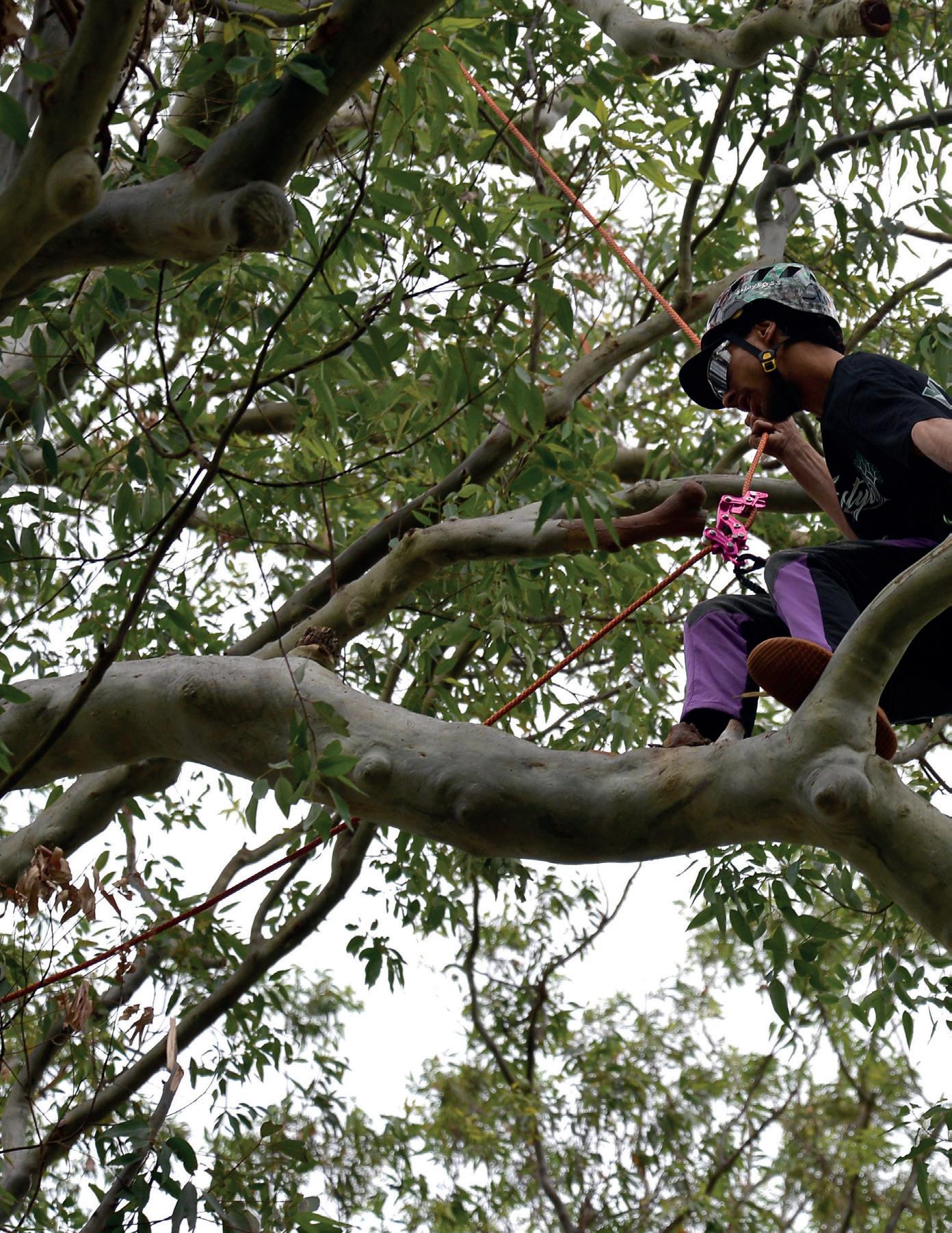
Copyright
The Australian Arbor Age magazine is owned by Prime Creative Media and published by John Murphy. All material in The Australian Arbor Age magazine is copyright and no part may be reproduced or copied in any form or by any means (graphic, electronic or mechanical, including information and retrieval systems) without written permission of the publisher. The editor welcomes contributions but reserves the right to accept or reject any material. While every effort has been made to ensure the accuracy of information, Prime Creative Media will not accept responsibility for errors or omissions, or for any consequences arising from reliance on information published.
The opinions expressed in The Australian Arbor Age magazine are not necessarily the opinions of, or endorsed by, the publisher unless otherwise stated.
© Copyright Prime Creative Media, 2025
Articles
All articles submitted for publication become the property of the publisher. The editor reserves the right to adjust any article to conform with the magazine format.
Head Office
379 Docklands Dr, Docklands VIC 3008
P: +61 3 9690 8766
info@primecreative.com.au www.primecreative.com.au
Sydney Office
Suite 11.01, 201 Miller Street North Sydney, NSW. 2060. Australia
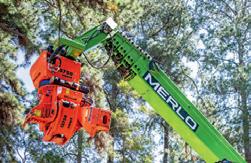



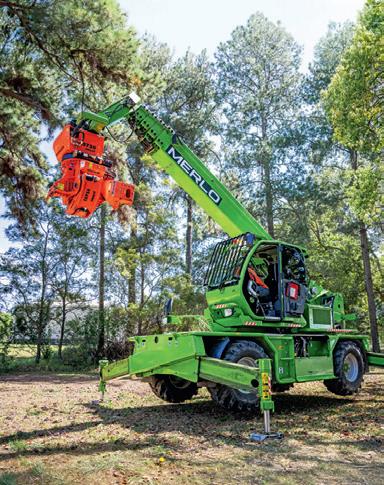
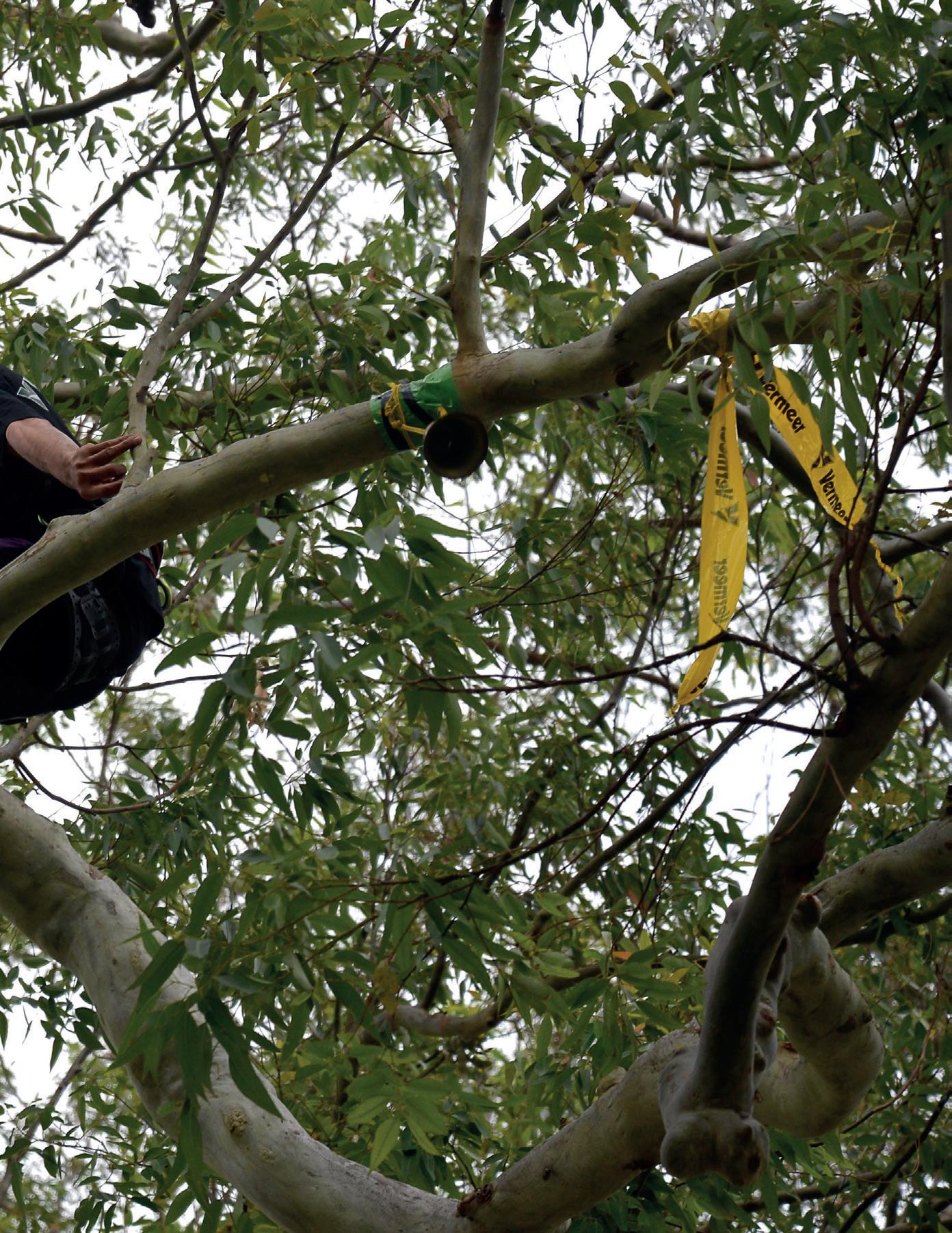
The Merlo Roto 50.26S telehandler and Westtech Woodcracker CS750.

Jim McArdle
B.Ed. Sc (Sydney), Dip. Arb. (Ryde), VTRA@QTRA qualifications. Director at McArdle Arboricultural Consultancy and TCAA President, Jim’s career spans across almost 40 years and focuses on consulting and reporting in tree risk
Beautiful – at a distance.
Steam Cone Story/stock.adobe.com
The Floss Silk Tree (Ceiba speciosa) is native to South America. It’s known by several colloquial names depending on its location, but strangely, we’re the only ones we can find who call it ‘Flossy’.
It’s deciduous, a relative of the baobab and kapok, and one of its most notable features is a trunk covered in nasty, sharp protrusions thought to discourage animals from inhabiting the branches.
Flossy grows fast and can reach heights of 25 metres. Its trunk is often green due to a high chlorophyll content, which allows photosynthesis and contributes to the plant’s health.
The Spanish call it a ‘drunken stick’ tree, and while there’s no reason given as to why that is, it may be because it looks so attractive at a distance.But up close…well…let’s just say it puts the ‘sting’ in ‘distinguishing feature’.
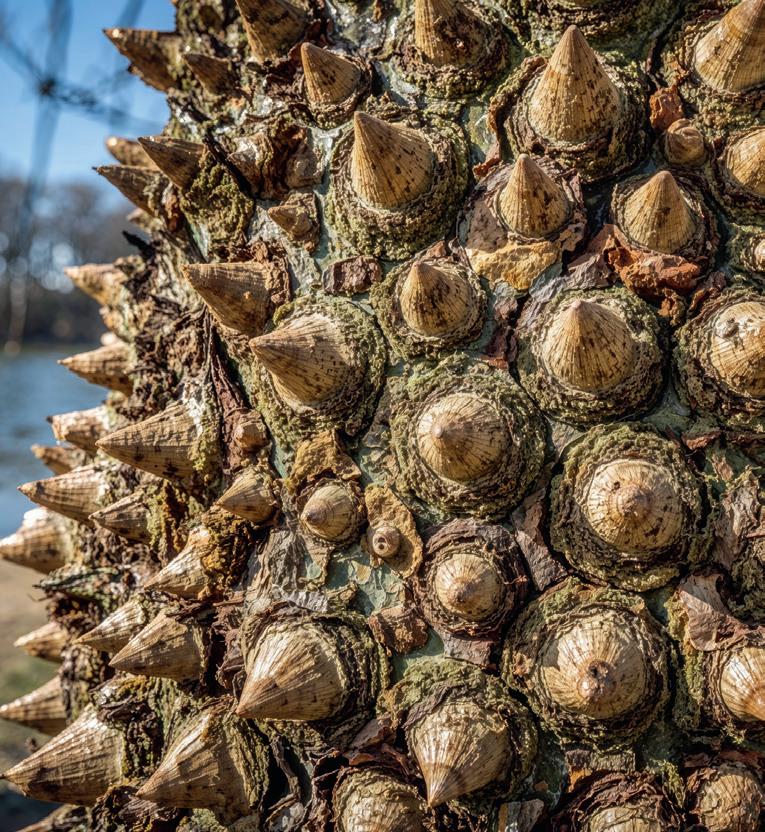
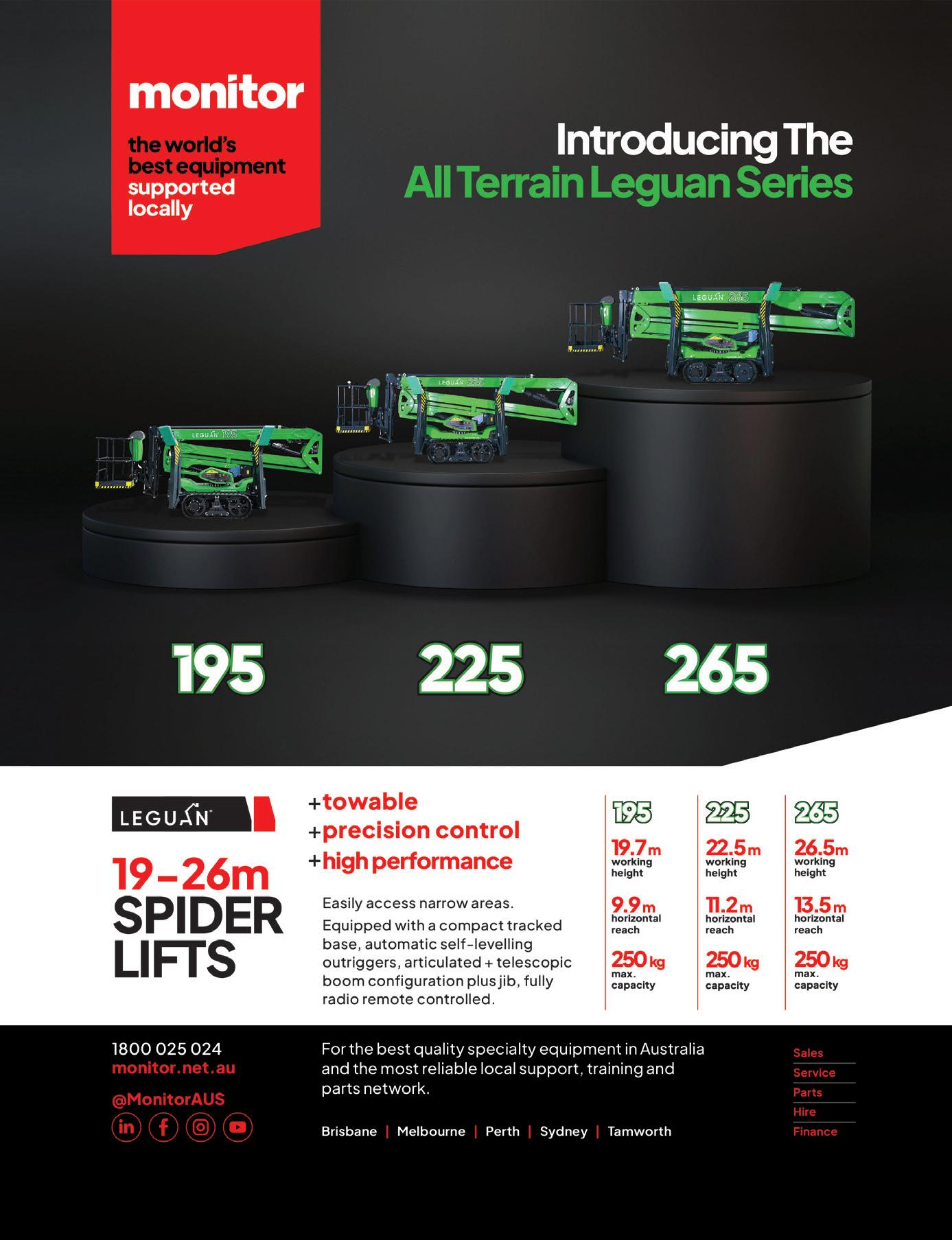


For generations, Husqvarna has set the standard in chainsaw technology, continually evolving to meet the needs of professionals and enthusiasts alike. Central to this enduring legacy is the Husqvarna X-Cut® saw chain, a product synonymous with proven reliability and high performance in the field.
Husqvarna’s decision to manufacture its own saw chain stems from a longstanding philosophy to prioritise the chainsaw user’s productivity and results above all. Decades of research and refinement have shaped the X-Cut® chain, reflecting Husqvarna’s unwavering dedication to customer satisfaction and efficient output.
This commitment is deeply ingrained in the brand’s identity, securing its position as one of the world’s most respected names in chainsaws.
The dream of creating an original Husqvarna saw chain has guided the company’s direction for years. With meticulous planning, advanced research, and a strategic approach, Husqvarna has established the X-Cut® chain as a trusted companion for demanding users. The launch of any Husqvarna product is never left to
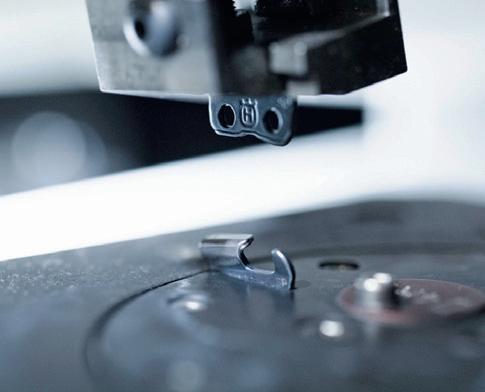
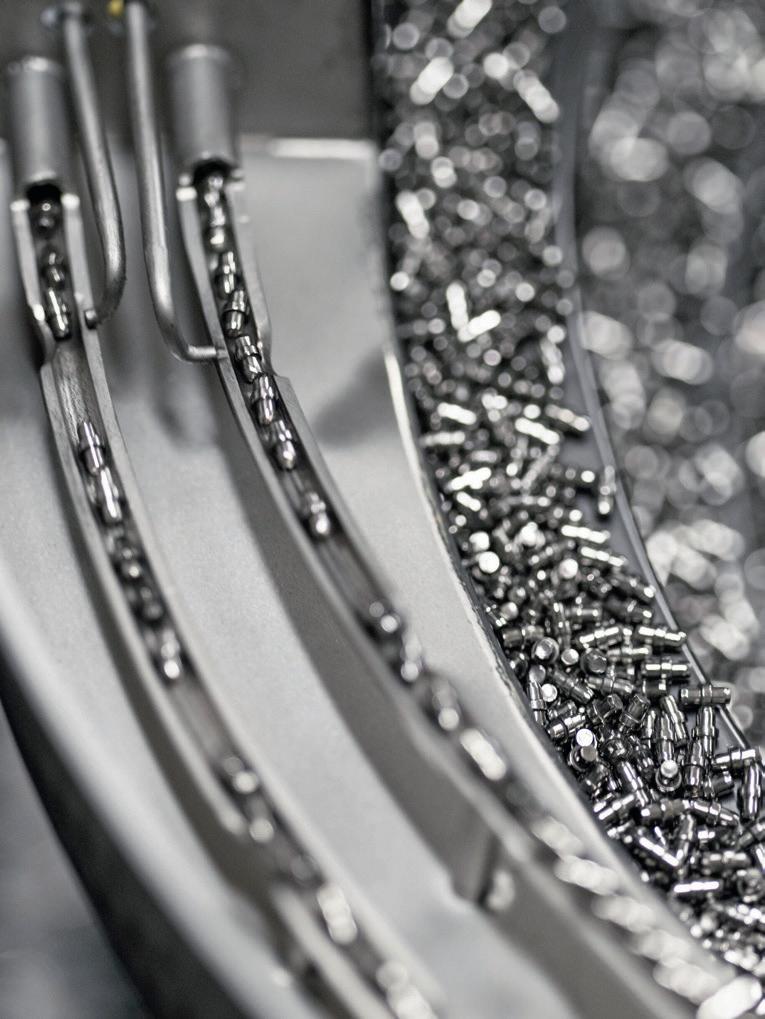
The dream of creating an original Husqvarna saw chain has guided the company’s direction for years “
chance. Each innovation is built on decades of accumulated expertise and insight. Users have come to rely on Husqvarna’s reputation for efficiency and outstanding results, knowing every product is a testament to the brand’s rigorous standards and dedication.
The X-Cut® chain is crafted at Husqvarna’s state-of-the-art chain factory in Huskvarna, Sweden, neighbouring the original chainsaw factory and standing as a symbol of the brand’s heritage. Advanced manufacturing technology and winding production lines underpin every stage of the process. From raw steel to the finished chain, each step occurs within Husqvarna’s own facility. Rigorous testing, including on-site sawmill trials, ensures every chain meets the exacting demands of professionals worldwide.
Husqvarna’s approach to chain design is rooted in a deep understanding of arboriculture and forestry work. By focusing on maximising cubicmetre output, the X-Cut® chain was developed with the essential features, optimal manufacturing techniques, and superior materials required by industry experts. Every detail, from heat treatment to material selection,
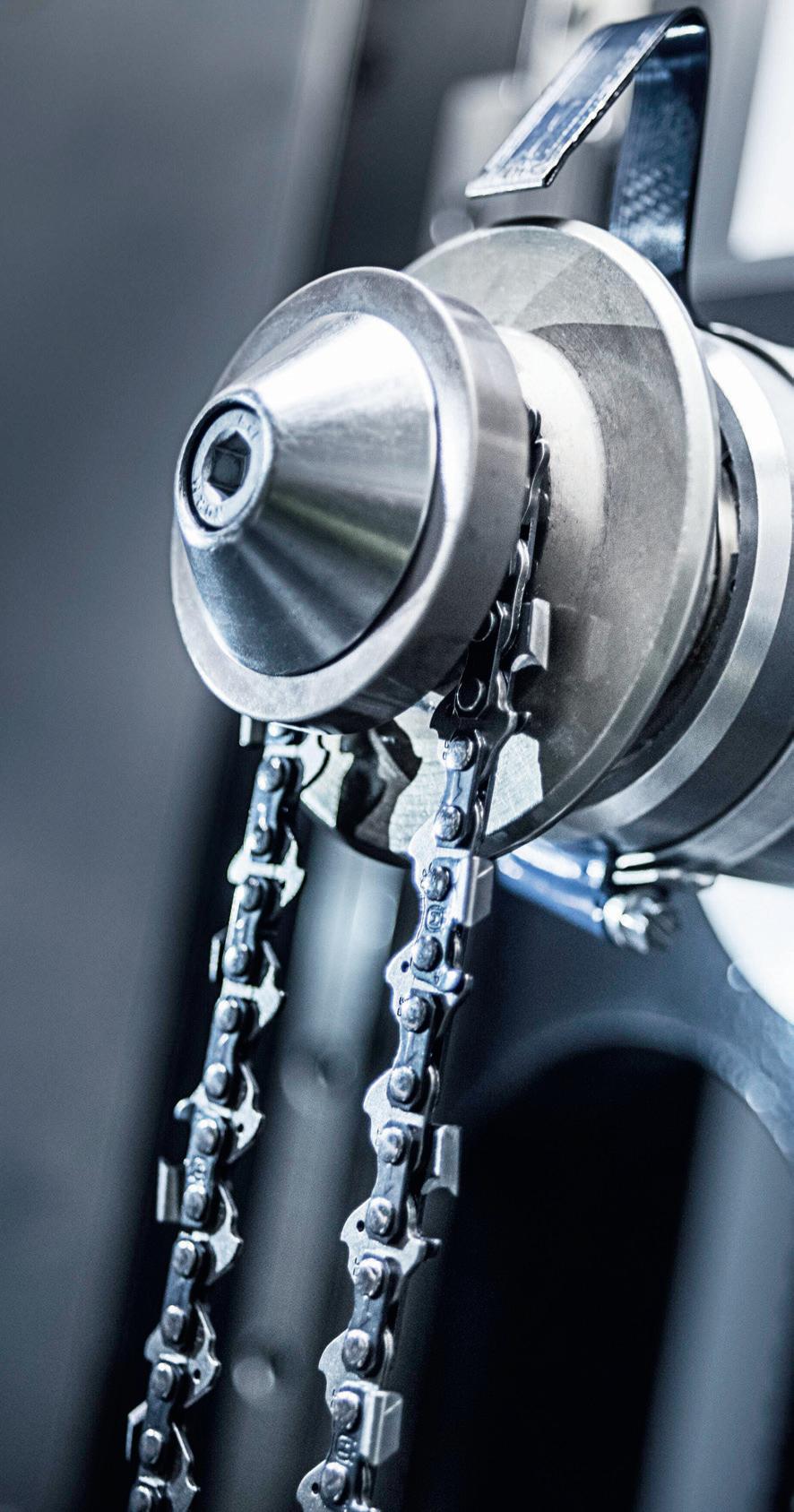
Husqvarna’s approach to saw-chain design is rooted in a deep understanding of arboriculture and forestry work.
reflects Husqvarna’s commitment to long-term performance and reliability.
The X-Cut® chain undergoes extensive laboratory and field testing across diverse environments, upholding Husqvarna’s rigorous quality standards. Years of fine-tuning and professional collaboration have established the X-Cut® chain as a mainstay for
continuous cutting in challenging conditions. Its enduring design delivers consistent power and efficiency, making it the clear choice for those who demand excellence.
Today, the Husqvarna X-Cut® chain stands as an integral part of Husqvarna’s storied tradition. Established through persistent
innovation and attention to detail, it’s ready for the toughest tasks and trusted by professionals worldwide.
The X-Cut® chain exemplifies Husqvarna’s ongoing commitment to quality, reliability, and user satisfaction. It’s a benchmark that endures, season after season.
Log on to husqvarna.com/au/ to learn more.
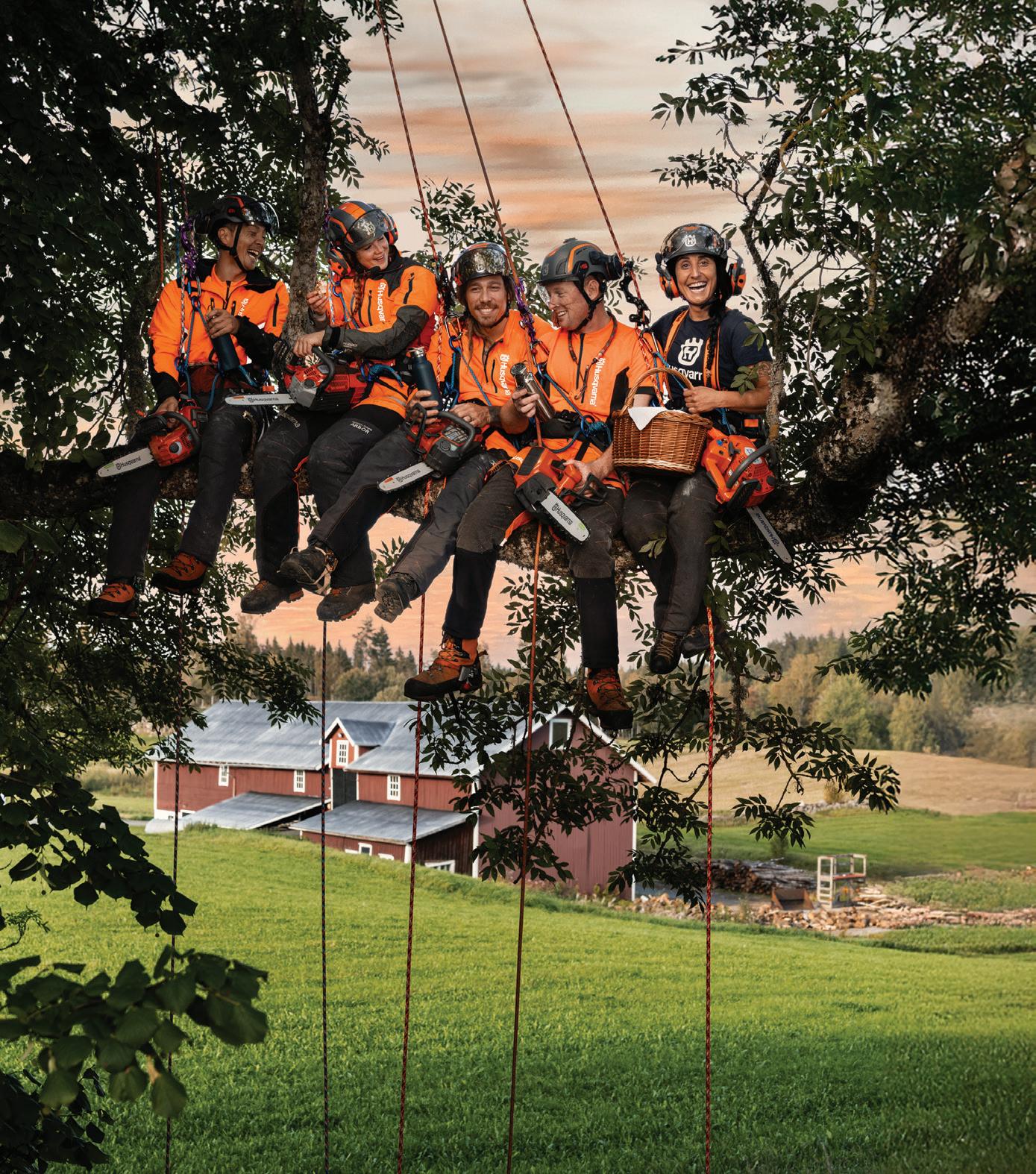
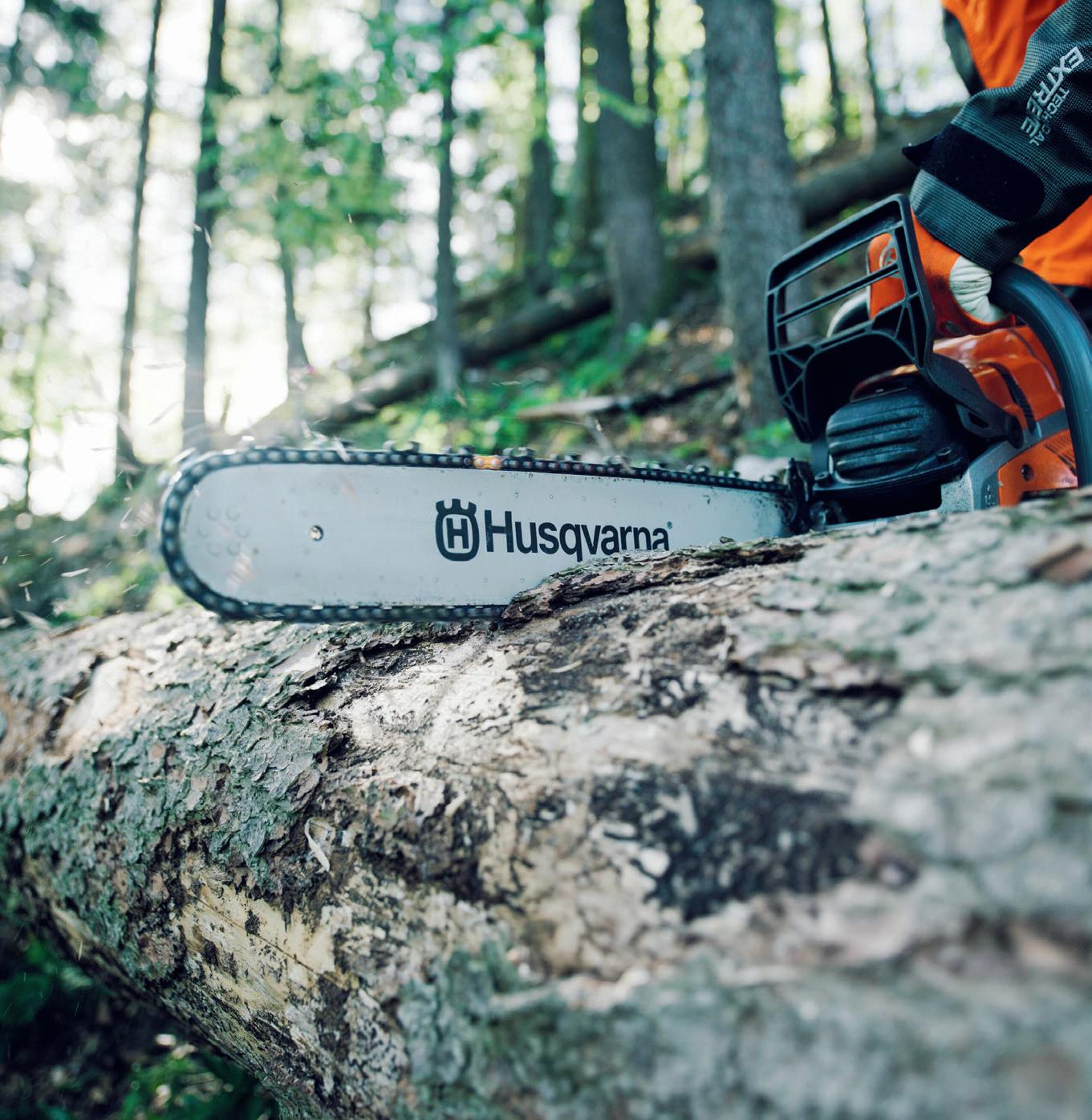



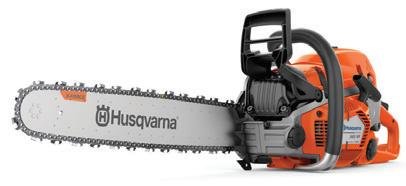
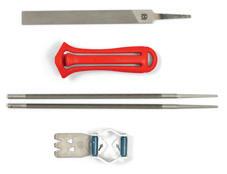












All the trade fairs one of the world’s leading EWP brands will be attending until the end of 2025.
he fourth quarter of 2025 promises to be full of international events for Italian specialist EWP manufacturer CMC. The company will cover every corner of the globe and every key sector, from lifting to construction and from landscaping to electrical infrastructure
CMC’s constant presence at trade fairs is not only an opportunity to showcase its products, but to strengthen direct dialogue with customers, partners and all operators in the sector at a global level. Here is the complete and updated list of trade fairs in which CMC will be participating from October to December 2025. Each one represents a strategic opportunity for the company to showcase the quality and the innovation of its aerial platforms, consolidate its presence on the global market, and to gain isight for the
Whether it’s construction, green maintenance, industrial cleaning, infrastructure or digital technologies, CMC is always present, just like its commitment to ensuring safety, versatility and reliability in every
To see CMC’s range of MEWPs, log on to
he Utility Expo – October 7-9 –
This is the largest event in North America dedicated to public services, infrastructure and electrical safety. The training program is packed with a focus on innovation, safety and reliability. CMC and CMC NORTH AMERICA will be there to meet end users of facility management in the United States. These are the customers who choose the CMC brand to reach new heights every day, making it the market leader in the segment of tracked aerial platforms in the US.
3rd Assodimi National Congress –October 16-17 – Martina Franca (TA),
Organised by ASSODIMI/Assonolo, this national professional rental event has a
2025 promises to be another year full of international events for Italian specialist EWP manufacturer CMC. Images: CMC
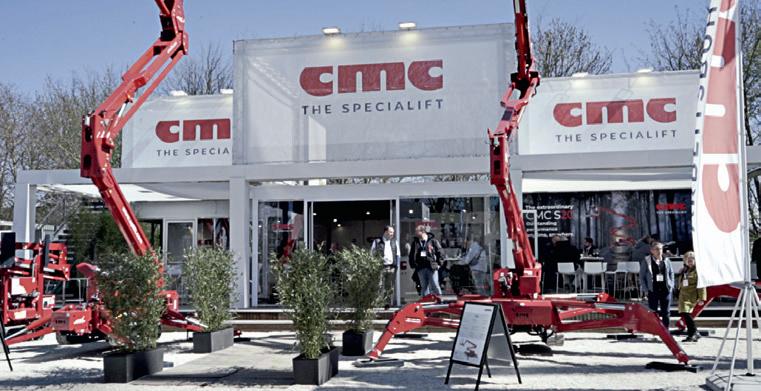
central theme of promoting innovation in rental to generate value.
CMC, with its Italian sales network, will be present in the dual role of exhibitor (with the CMC S23 and CMC S20) and as the main sponsor of the event. CMC believes in ASSODIMI and has been an active member of this important organisation in the Italian MEWP rental sector for over 10 years.
• APEX Asia – October 28-31 – Shanghai, China.
CMC and its Asian dealers will be present at Asia’s most important trade fair for the aerial-access sector.
• Access + Handling Confex – October 29 – Dubai, UAE.
CMC will showcase its S32 spider for ‘large operations’. With a working height of 32m and a lateral outreach of 16m, the S32 is well-suited to the big projects with which the Gulf countries are redefining their infrastructure. CMC is also a Silver Sponsor, with live demos and a focus on access and handling solutions.
This event also serves as an international hub for manufacturers, experts and suppliers in the Middle East.
• TCI Expo – November 6-8 – St. Louis, USA. CMC stand: 921-1, 1303.
The world’s leading event for professional arboriculture, with exhibitors and visitors from all over the world, the TCI Expo is an unmissable event for those involved
in tree care and green-maintenance equipment and safety.
CMC will be present as a market leader in the arboriculture industry in North America.
• Excon 2025 – December 9-13 –Bengaluru, India.
South Asia’s largest exhibition for construction machinery and industrial technologies, Excon 2025 is organised by the Confederation of Indian Industry (CII), with a growing international participation.
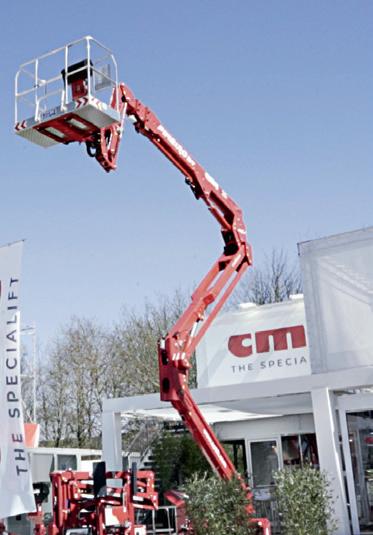
CMC’s presence at trade fairs is not only an opportunity to showcase its products, but to strengthen dialogue with customers, partners and operators.
With multiple units available across Australia, our cutting-edge Sennebogens are a game-changer, delivering up to 5x times greater efficiency compared to traditional methods. By removing the need for manual handling and simplifying even the most complex clearing tasks, these Sennebogens are setting a new standard for safety, speed and precision in vegetation management.
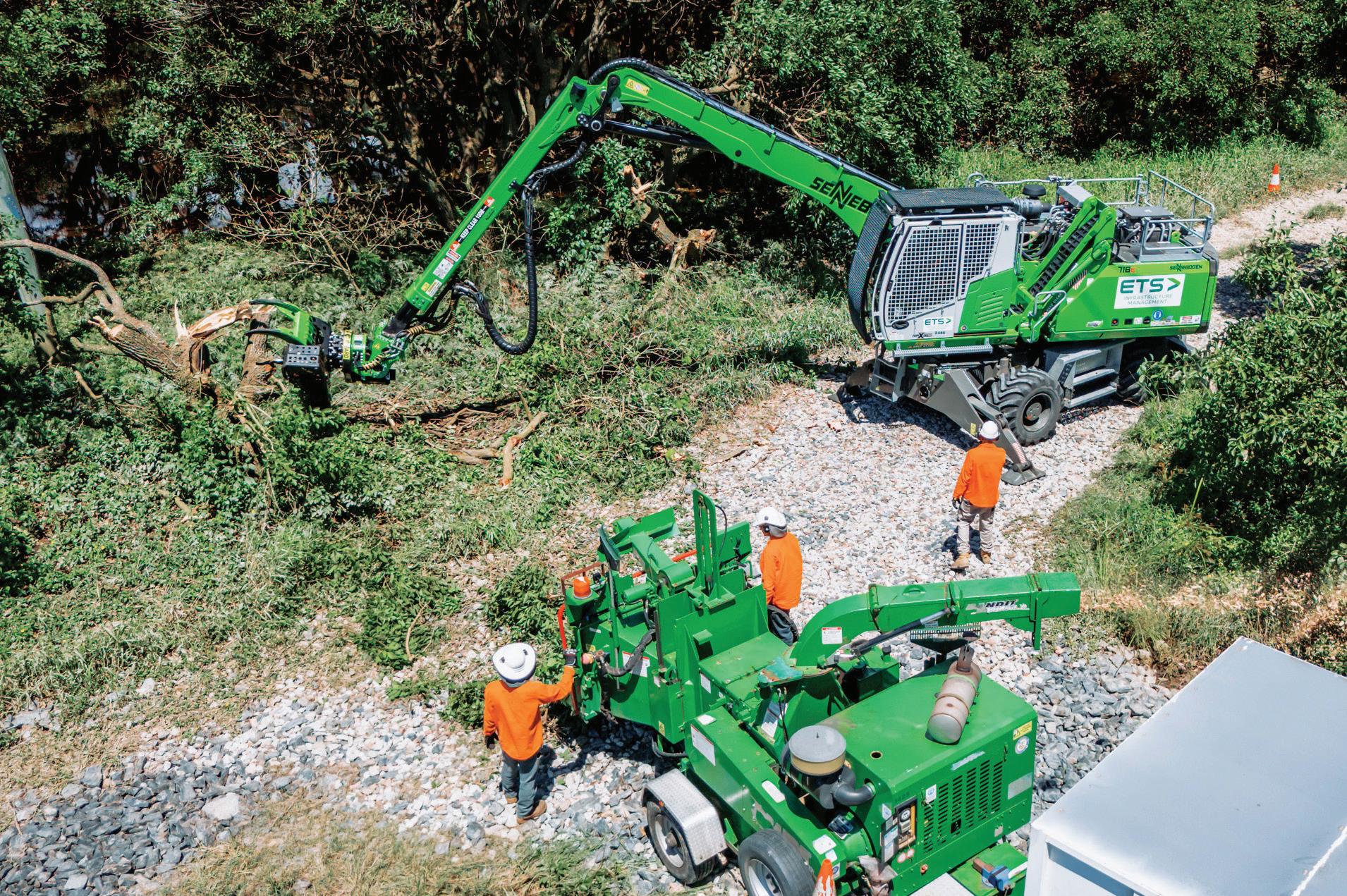
With over four decades of experience, we stand as Australia’s foremost infrastructure partner, proudly Australian-owned and operating across 45 strategically located depots. We deploy the most comprehensive, in-house maintained fleet in the country, offering integrated vegetation management for grounds maintenance, arborist services, vegetation management and mechanical clearing across Road, Rail, Power & Water Utilities, as well as Local Government and Defence environments.
Reach out to Russell Warner on 0420 402 011 for all enquiries or simply scan the QR code to discover how our mechanical clearing expertise is shaping the future of vegetation management.

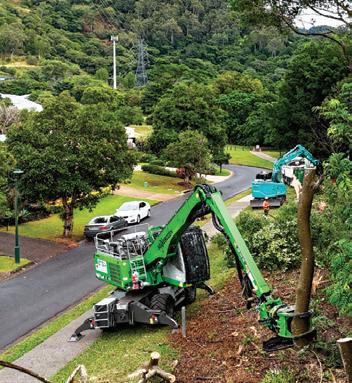


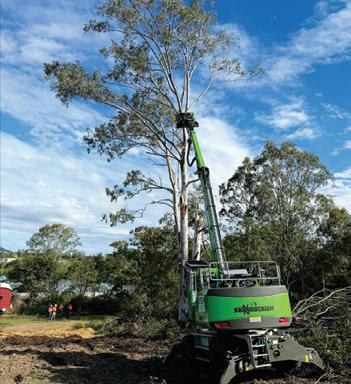

Scared and injured koalas rush to the top of trees, and this one had a major scare and climbed high.
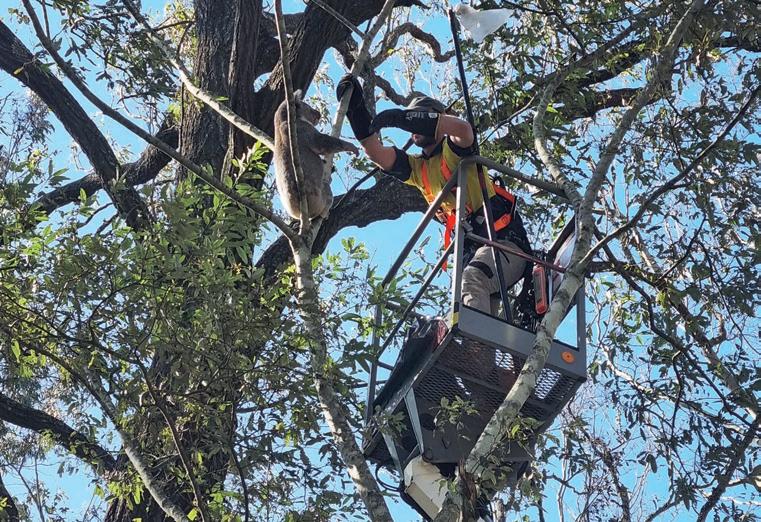
Once a frightened koala is up at the highest point of a tree, it’s difficult to recover. They’re certainly not keen to give up what they believe to be a lofty point of safety.
After an attack by dogs at Brandy Hill, an area close to Newcastle in NSW, one injured marsupial sought refuge in the nearest, tallest canopy.
The frightened creature was injured
and needed attention, so Aaron and Ben from nearby Port Stephens Koala Hospital used a Nifty 120T EWP to effect a rescue. The Niftylift, a generous donation from Niftylift Australia, does service in rescues and cutting leaves for the animals in the sanctuary’s care
Koalas at the hospital are usually named after their rescuers, so this little feller became ‘Aaron’ and joined many
other koalas being cared for at the establishment, including staff favourite ‘Nifty’.
Ron Land from the sanctuary said, “It was a difficult and stressful rescue of a badly injured koala in which we deployed the EWP donated by Niftylift.”
“We’re all engaged in one of the toughest commitments anyone can make, wildlife care. We’re lucky to have a great team as we tackle life-and-death issues for the priceless wildlife that comes into our care. Aaron suffered terrible injuries in the dog attack, but we’ll pull him through.”
Soon after treatment, Aaron was eating food supplement and his injured arm and mouth looked set for recovery.
If you’d like to support Port Stephens koalas and assist with the costs of medical treatment, food and lodging for Aaron, Nifty and other rescued animals, please visit portstephenskoalas.com.au.
For information on the Niftylift range of elevating work platforms, go to niftylift.com.au



Nifty elevating work platforms are safe, environmentally conscious, high-performing and reliable.
Leguan’s new range of elevating work platforms is designed and built to deliver reliability, advanced technology, and selfpropelled off-road capability. Just what an arborist needs.
Leguan EWPs are made in Finland, and given the climate in that country, it’s no surprise Leguan machinery has a reputation for durability. It’s also well known to be user-friendly and capable of handling very tough terrain.
Now the new Terrain range of Leguans has just been unveiled in Australia, and all three include the best of these features to an outstanding degree.
Engineered for speed and built for safety and efficiency, the Leguan 195 excels in even the toughest environments, thanks to its robust track platform and exceptional driving capabilities. It’s the fastest lift to set up on the market, with unrivalled boom speeds that take the operator to maximum working height in just 55 seconds.
An advanced boom design ensures impressive side reach, even at greater heights, while the intuitive joystick control offers seamless, precise movements, allowing for easy operation in any situation.
A shielded boom structure protects the spider lift’s key components from external damage, making it an ideal choice for arboriculture. For navigating tight spaces or tackling complex tasks at height, the Leguan 195 offers performance, reliability, and safety.
• 19.7m maximum working height
• 9.9m maximum side reach
• 250kg maximum lift capacity.
A high-profile track platform and fast driving speeds make the nextgeneration Leguan 225 a first-rate choice for even the most challenging situations. The boom is designed to maximise side reach even at high working heights, while an intuitive user interface guarantees quick and smooth movements.
Thanks to user-friendly joystick controls, boom operation remains steady, and simultaneous movements become second nature. The Leguan 225’s intelligent features minimise
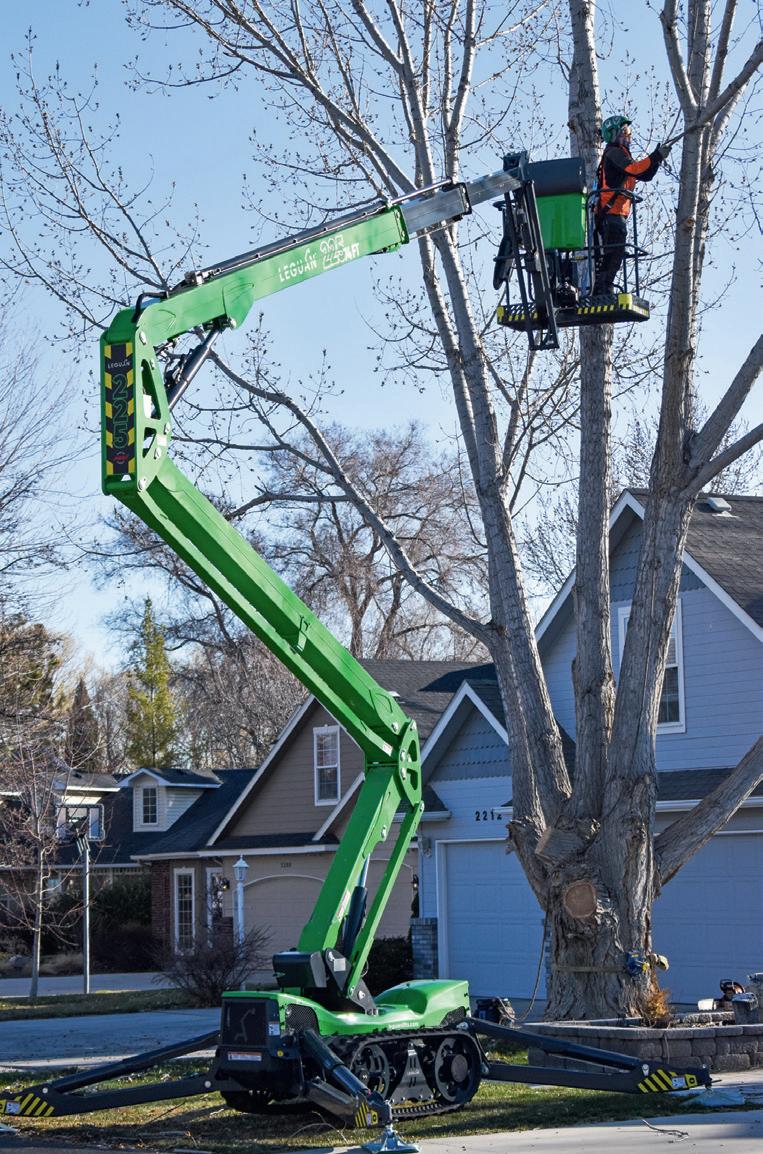
malfunctions and boost efficiency, allowing the operator to focus on the task at hand. Additionally, the boom is protected from external impacts, falling branches, and sawdust, making the 225
an excellent choice for arborists and tree-care professionals.
• 22.5m maximum working height
• 11.2m maximum side reach
• 250kg maximum lift capacity.

As the fastest 27-metre spider lift in the world, the Leguan 265 takes just one minute and 35 seconds to reach maximum working height. Its rugged track system, unrivalled ground clearance, and the market’s lowest centre of gravity provide exceptional stability and mobility, even in the most demanding conditions.
Engineered for versatility, the 265 features a lightweight design and a compact length, ensuring effortless manoeuvrability in confined spaces. Speed and efficiency are at the heart of the machine’s design, allowing operators to complete more projects in less time, driving greater productivity and profitability.
As the fastest 27-metre spider lift in the world, the Leguan 265 takes just one minute and 35 seconds to reach maximum working height.
• 26.5m maximum working height
• 13.6m maximum side reach
• 250kg maximum lift capacity.
Leguan is available in Australia through Monitor Group. See the entire Leguan range and Monitor’s extensive range of arbor and tree-care machinery at monitor.net.au.

Engineered for speed, built for safety and efficiency, the
195 excels in even the toughest environments. Images: Monitor
For backyard tree removal, tightaccess pruning, off-road terrain, or uneven ground, spider boom lifts are a game-changer.
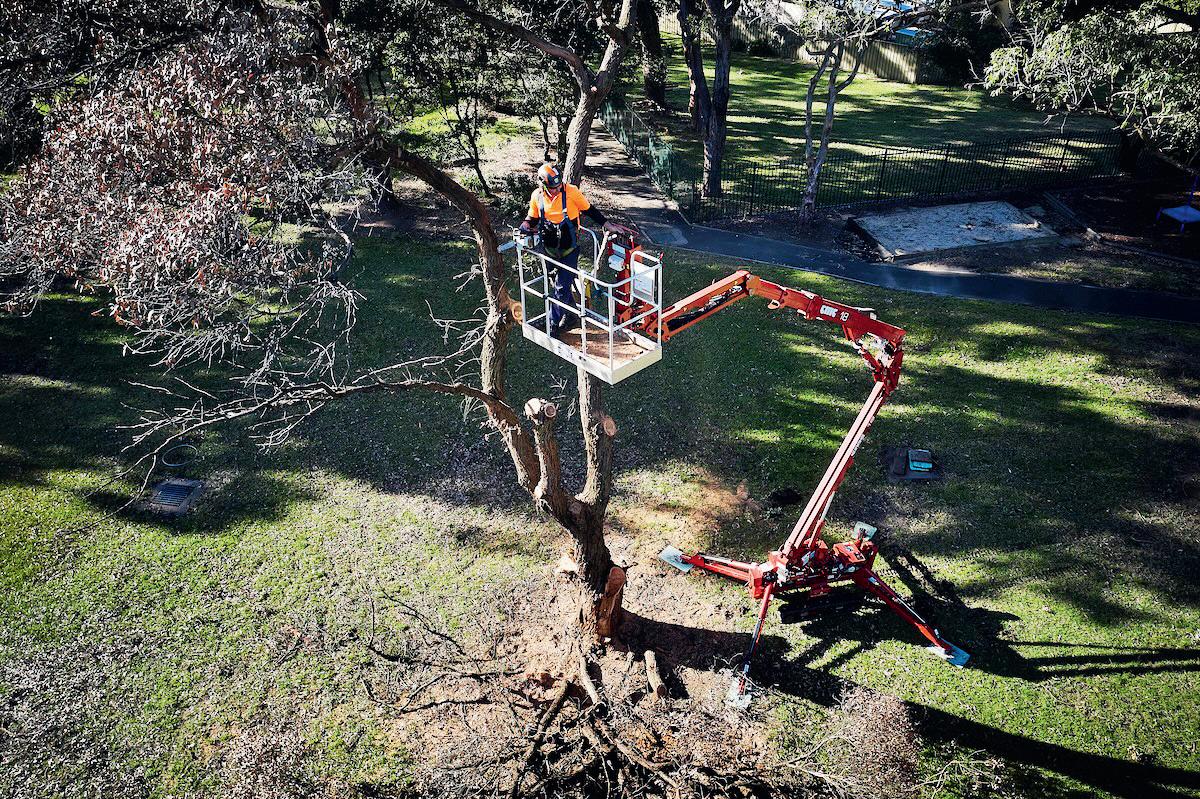
When it comes to working at height in arboriculture, selecting the right elevated work platform (EWP) is critical for productivity, site access, and crew safety. For professional arborists, the two most popular access solutions are spider lifts and truck-mounted EWPs. But depending on the job type, location, and access requirements, one may outperform the other.
Whether you’re an arborist, contractor, or EWP hire buyer, here are some important considerations when comparing spider lifts and truckmounted lifts for tree work.
If the work involves backyard tree removal, tight-access pruning, offroad terrain, or uneven ground, spider boom lifts are a game-changer. These compact, tracked EWPs are built for narrow access, low ground pressure, and difficult terrain, making them a favourite among tree-care professionals.
Some of the main reasons arborists choose spider lifts include:
• quick setup – usually less than 10 minutes, with Leguan offering the world’s fastest spider-lift set up at between two and five minutes

• lightweight design – as low as 1.8T, reducing damage to lawns, gardens and pavers
• access –can generally pass through standard 900mm gates, with some models packing down to 780mm wide.
• handling slopes – can operate on gradients up to 25°
• flexible power options – diesel, electric, and hybrid models available,
suitable for residential tree jobs.
• impressive reach – working heights from 12m to 54m.
• premium features – auto-leveling outriggers, non-marking tracks and radio remote controls.
Spider lifts improve safety and ergonomics compared to climbing, reducing strain and fatigue during tree pruning, removals, and elevated chainsaw work.
For council contractors, line-clearing crews, or anyone doing multiple stops in a day, truck-mounted EWPs are the go-to choice. They’re fast, efficient, and ideal for roadside tree work.
Road-registered truck-mounted EWPs provide excellent mobility and efficiency when jumping between street trees, verge pruning, and utility work.
Top benefits of truck-mounted lifts include:
• fast setup – usually between two and five minutes
• good reach – 13m to 36m working heights
• versatile – well suited to powerline clearance, roadside pruning, council maintenance, and utility work
• drive-on convenience – no trailer needed, just drive to the site
• diesel-powered
• ute-mounted 14-20m EWP option – no truck license is required, making it ideal situation for small arbor teams and businesses.
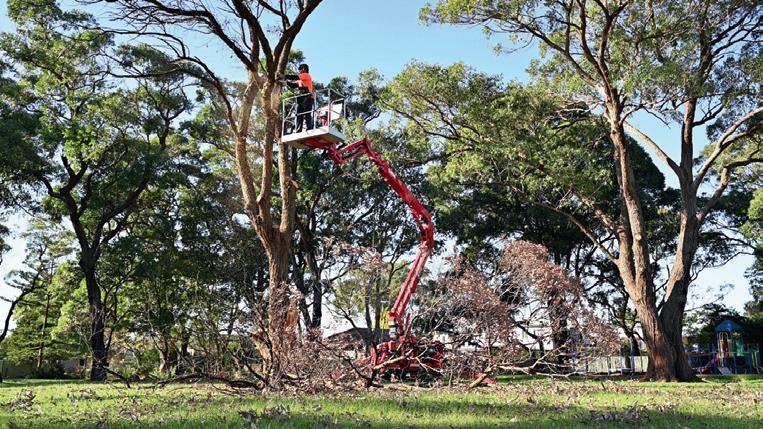
The downside? Truck-mounted EWPs require solid ground and good access, so they’re less effective in tight residential spaces, sloped backyards, or soft-ground conditions.
Choosing between a spider lift and truckmounted EWP depends on the worksite conditions, job frequency, and access requirements.
If you’re focused on residential tree pruning, confined-space removals, or soft-ground sites, a spider lift offers unmatched access and control, making it
the most versatile EWP option.
However, for high-volume roadside tree maintenance, council contracts or multisite work, a truck-mounted lift provides the speed and ease to make the work safe and efficient.
For anyone looking to buy, hire, or compare spider or truck-mounted EWPs in Australia, Monitor Industries has the expertise and range to match the operator with the right solution – fast.
Log on to monitor.net.au to see Monitor’s range, or call 1800 025 024 for advice from an industry expert.
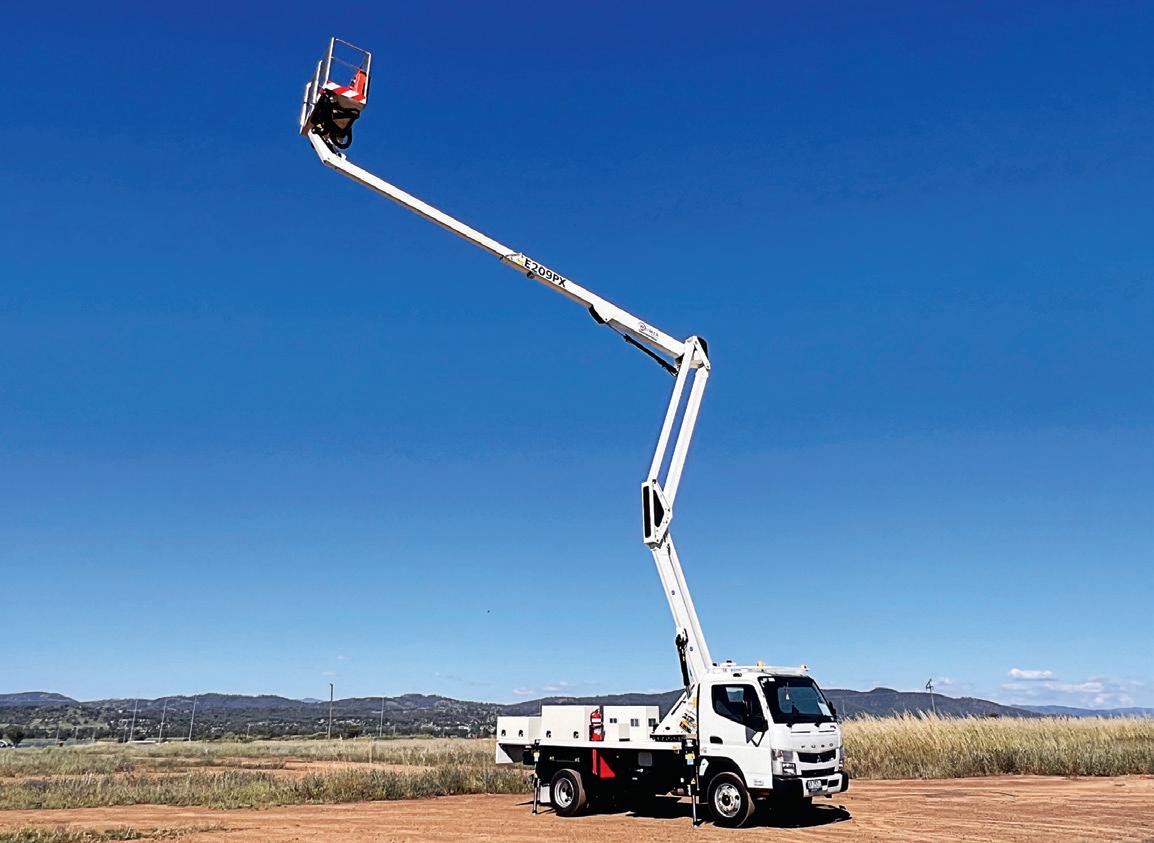
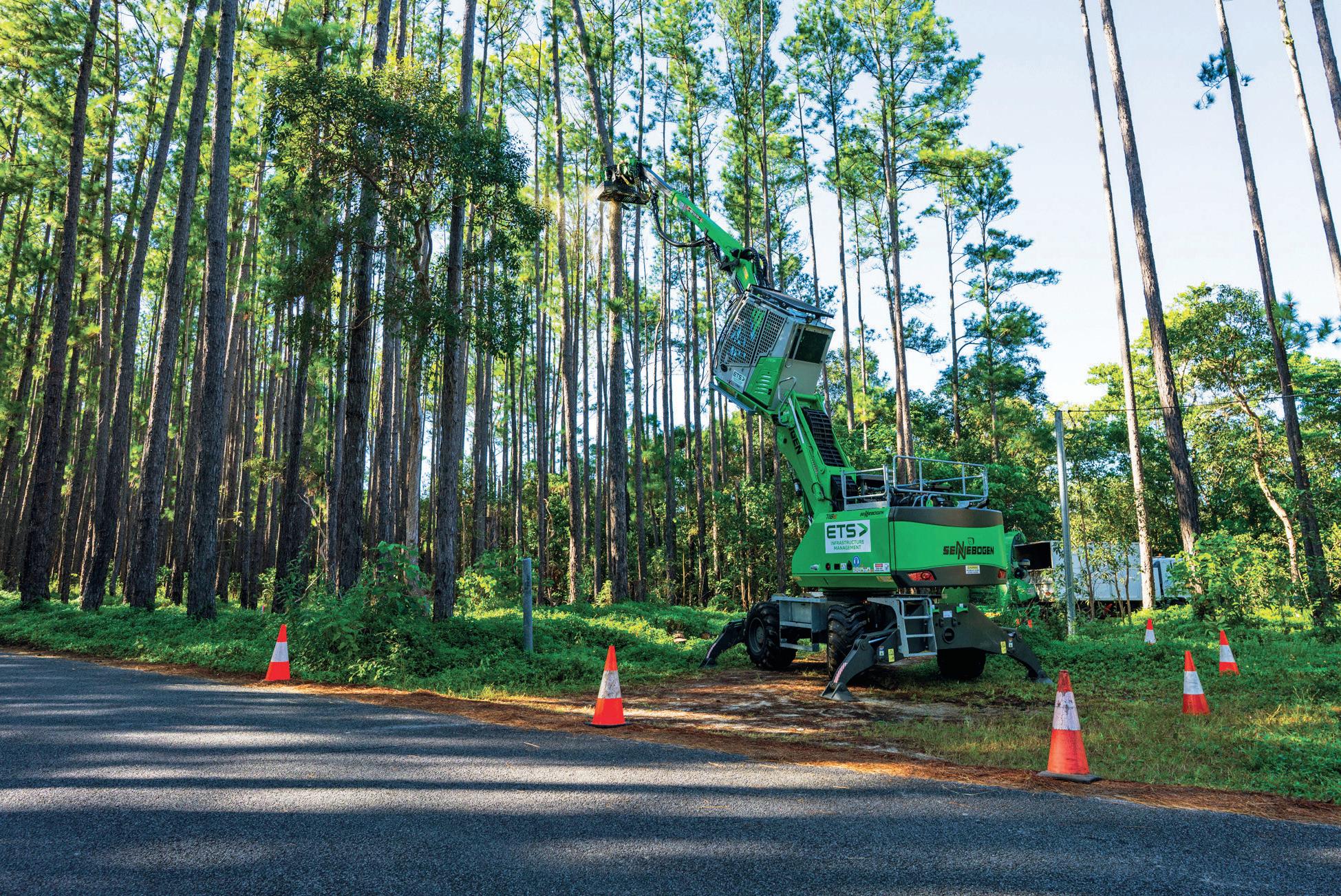
The machine’s design makes it suited for clearing projects in rail corridors, roadsides, utility easements and storm-recovery works.
Images: ETS Infrastructure Management
ETS Infrastructure Management (ETS) has supported Australia’s essential infrastructure with safe, efficient and reliable services for more than four decades. Today, the company’s strength lies in the size and capability of its specialised fleet, enabling the safe delivery of large-scale vegetation management, arborist services and mechanical clearing with precision.
Akey component of ETS’s success is its fleet, one of the largest privately owned in Australia. With more than 1500 road-registered vehicles and machines, including insulated and electrically tested elevating work platforms, tippers, chippers, mulchers and tree handlers, the company is equipped to tackle the nation’s toughest jobs.
This fleet is supported by a network of more than 40 in-house workshops and technicians who provide maintenance, servicing and complete rebuilds. This ensures every vehicle and machine is kept in peak operating condition, ready for rapid deployment. It’s a capability that allows ETS not just to respond, but to lead in delivering high standards of safety, reliability, and performance for clients across Australia.
Within its fleet, ETS operates a range of specialised machinery designed for challenging vegetation management

situations. The Energreen ILF Alpha Hedger, with its four-wheel steering, multiple traction modes and frontmounted mulcher for debris disposal and other mulching tasks, provides safe and consistent clearing on uneven or off-road terrain. Complementing this are Jarraffs, Mega Mulchers, whole-tree chippers and Hi-Rail equipment. Together, these
assets enable crews to deliver efficient vegetation management across complex environments.
Among the most powerful assets in the specialised fleet are the Sennebogen 718 E Tree Handlers, machines transforming
how large-scale vegetation works are delivered across Australia.
Compact yet powerful, these handlers combine reach, strength and precision, enabling crews to manage complex clearing tasks safely and efficiently. With multiple units available, they’re strategically located to support clients nationwide.
With a telescopic stick that extends up to 15 metres and an operating weight of 22 tonnes, the Sennebogen is built for heavy-duty performance. Its hydraulic cab elevation gives operators a superior vantage point, while the grapple-saw attachment enables trees to be grasped, cut, and placed in a single controlled motion. This machine can also attach grooming and stump-grinding heads for a multitude of tasks. The result is faster, safer clearing with reduced manual handling, a key advantage in today’s challenging operating environments.
The machine’s design makes it suited for clearing projects in rail corridors, roadsides, utility easements and stormrecovery works where speed, precision and safety are paramount. Earlier this year, during cyclone recovery operations in Queensland, the Sennebogen was deployed to safely remove collapsed trees from powerlines. Its extended reach and remote cutting ability allowed crews to restore access and protect the surrounding network without compromising operator or community safety.
The machine’s capability extends beyond emergency response. In urban and rural roadside settings, the Sennebogen
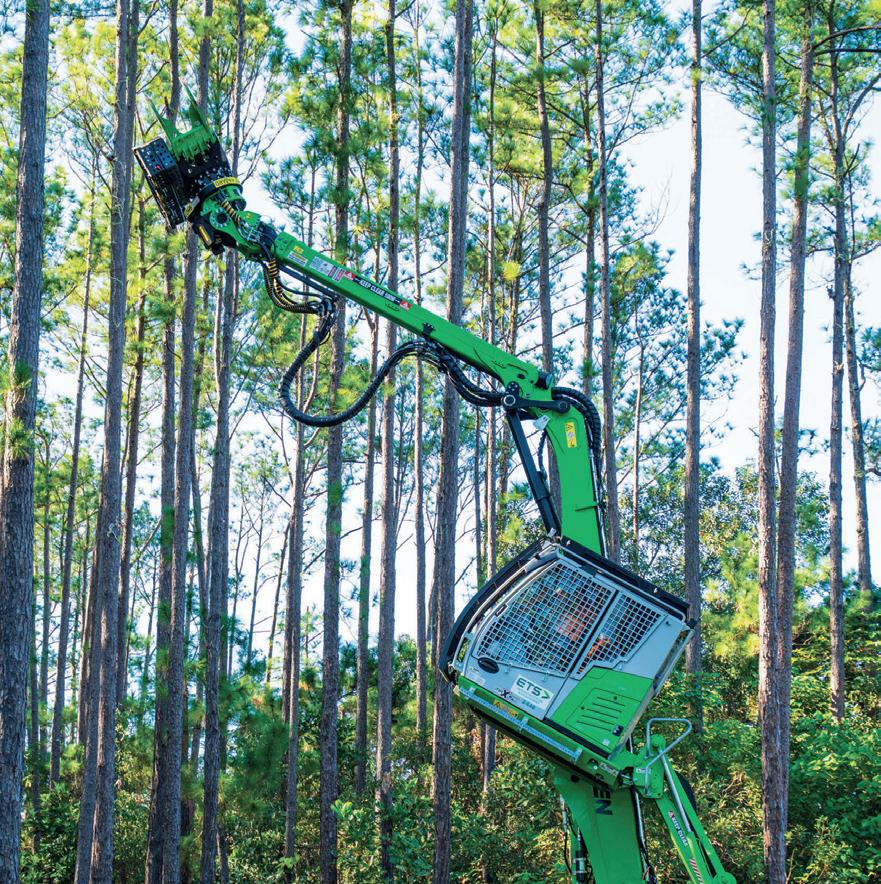
delivers high-volume vegetation clearing while maintaining strict safety controls around traffic and infrastructure. From maintaining visibility for road users to supporting asset protection, it ensures consistent outcomes while minimising disruption.
When working around sensitive environments, including areas with native wildlife, the Sennebogen can pair with qualified Fauna Spotters to ensure habitats are respected and protected.
Russell Warner, Manager Strategic Partnerships, highlighted the machine’s value: “The Sennebogen increases both safety and productivity, enabling us to handle complex, large-scale jobs efficiently. Both our Sennebogens are in high demand for major clearing projects,” he said.
Backed by the expertise of trained operators and supported by a national network, the Sennebogen is a prime example of how the right equipment, combined with planning and environmental focus, can deliver safe, efficient and responsible outcomes in even the most complex situations.
ETS’s specialised fleet and skilled
operators enable safe, efficient and reliable outcomes. Supported by in-house maintenance and a strong national presence, every project is approached with safety, precision and environmental responsibility. From vegetation management and mechanical clearing to emergency response, ETS works alongside clients and communities to provide tailored solutions that protect essential networks. Above all, ETS is guided by its purpose of ‘Working together to make communities safer’ and setting the benchmark for infrastructure and vegetation management across Australia.
For further information contact Russell Warner on 0420 402 011 or email russell. warner@ets.com.au
To learn more about ETS, visit ets.com.au or scan the QR Code.


Posting performance metrics for employees ignites their competitive spirit and enables them to see their improvements.
We all want to maximise the time we spend on activities we like and limit time we spend on tasks we don’t. The best way to do this is to improve efficiency.
Take grocery shopping, for example. If you plan your route through the store in advance (minimisng the back and forth between aisles), your travel time is streamlined, resulting in a reduced ‘cycle time’. The time you save can then be spent on the things you like to do.
A logging operation is no different. The key to improving your bottom
line is efficiency – reducing cycle times and streamlining tasks that are necessary but don’t add to profit. For example, with a feller buncher, the value-added task is cutting trees, while maintenance, fuelling and travel times are costs, not value-added functions.
Here’s how to get a handle on the efficiency of your operation:
• document your typical day and time your tasks (e.g. leave house, stop
at fuelling station, arrive on site, start machine, fill machine, grease machine, travel, cut, etc)
• group each task into a handful of categories (e.g. commute, daily maintenance, harvesting, skidding, loading, etc)
• write down how long it takes to perform the tasks in each bucket. Let’s say you find that daily maintenance on your loader takes
an average 45 minutes: 15 to grease, 10 to clean windows, 10 to blow out radiator, five minutes to check oil levels and five minutes for a general inspection
• look at areas for improvement. Maybe you find that if you added a power grease gun, kept it in the cab and greased just after lunch when the grease and the machine were warm, you could save five minutes a day. And you bring spares of high-risk hoses to the woods, and that saves you 15 minutes a week. These incremental changes can make a considerable difference by the end of the year. Just saving five minutes a day over 50 five-day work weeks
equals about 21 hours of increased production time. Now add in the time saved by having spare hoses (12.5 hours) and you’ve got 33.5 hours of increased production.
You don’t think of five minutes as significant until you look at a whole year and see you’re adding almost a week of production.
The same goes for the harvesting process. Once you’ve broken down the cycle times for bunching, skidding and loading, analyse them and look for ways to reduce them.
Here are some tips to consider for improving machine cycle times.
• Look at travel times for harvesting equipment, especially machines on tracks. Unnecessary travel time is very expensive due to undercarriage replacement costs and lost production time.
• Plan your cut ahead of time. Take a few minutes to walk the plot. You can assess the ground conditions and terrain much better on foot.
• Avoid unnecessary trips for fuelling. If you’re cutting close to the landing and have half a tank, fill up. If you don’t, you’ll need fuel when you’re cutting further away, and you’ll have to track all the way back to refuel and then return to where you were cutting.
• The harvesting machine should be
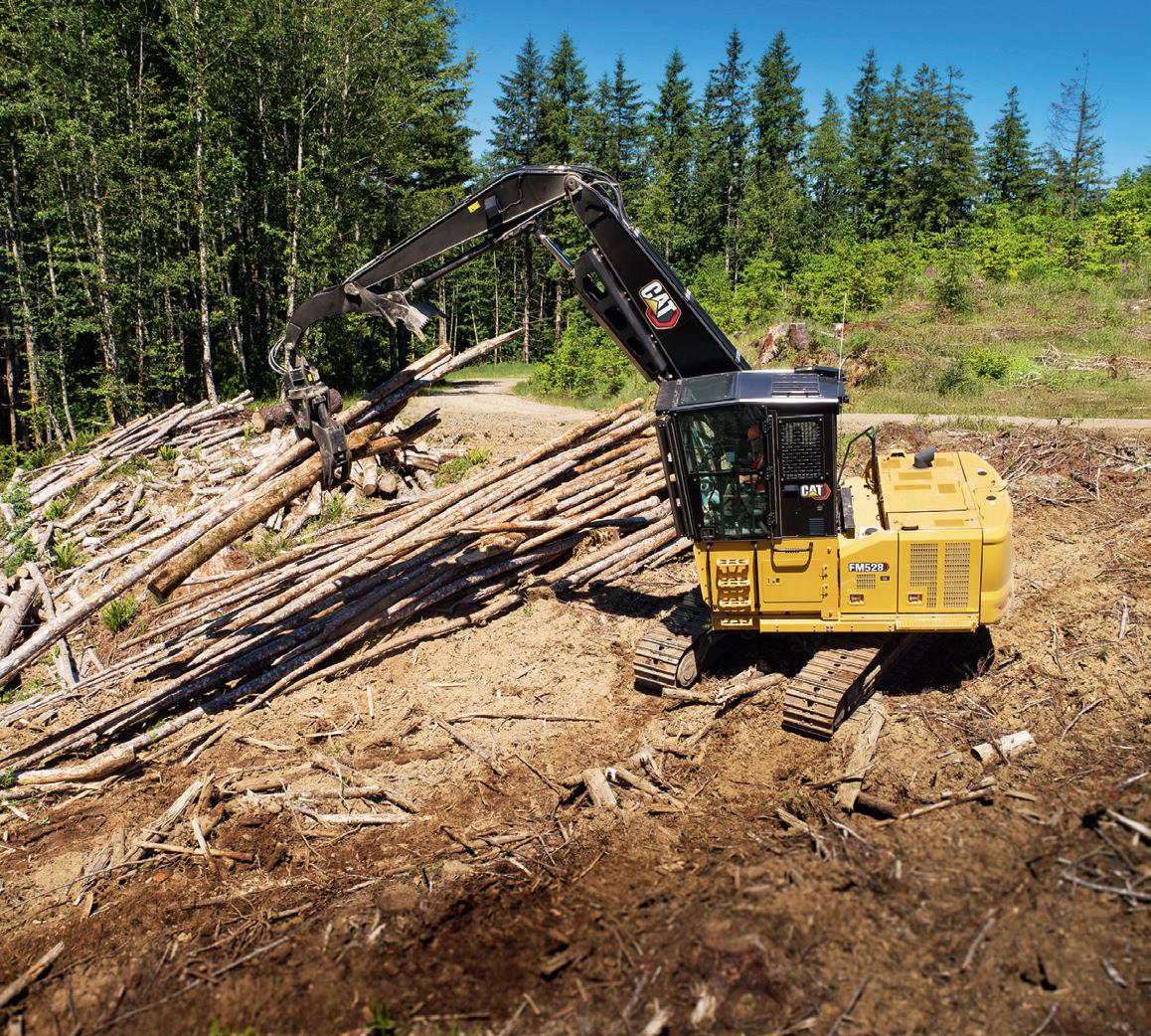
Affordable


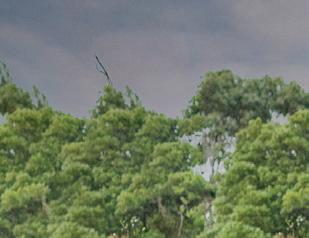
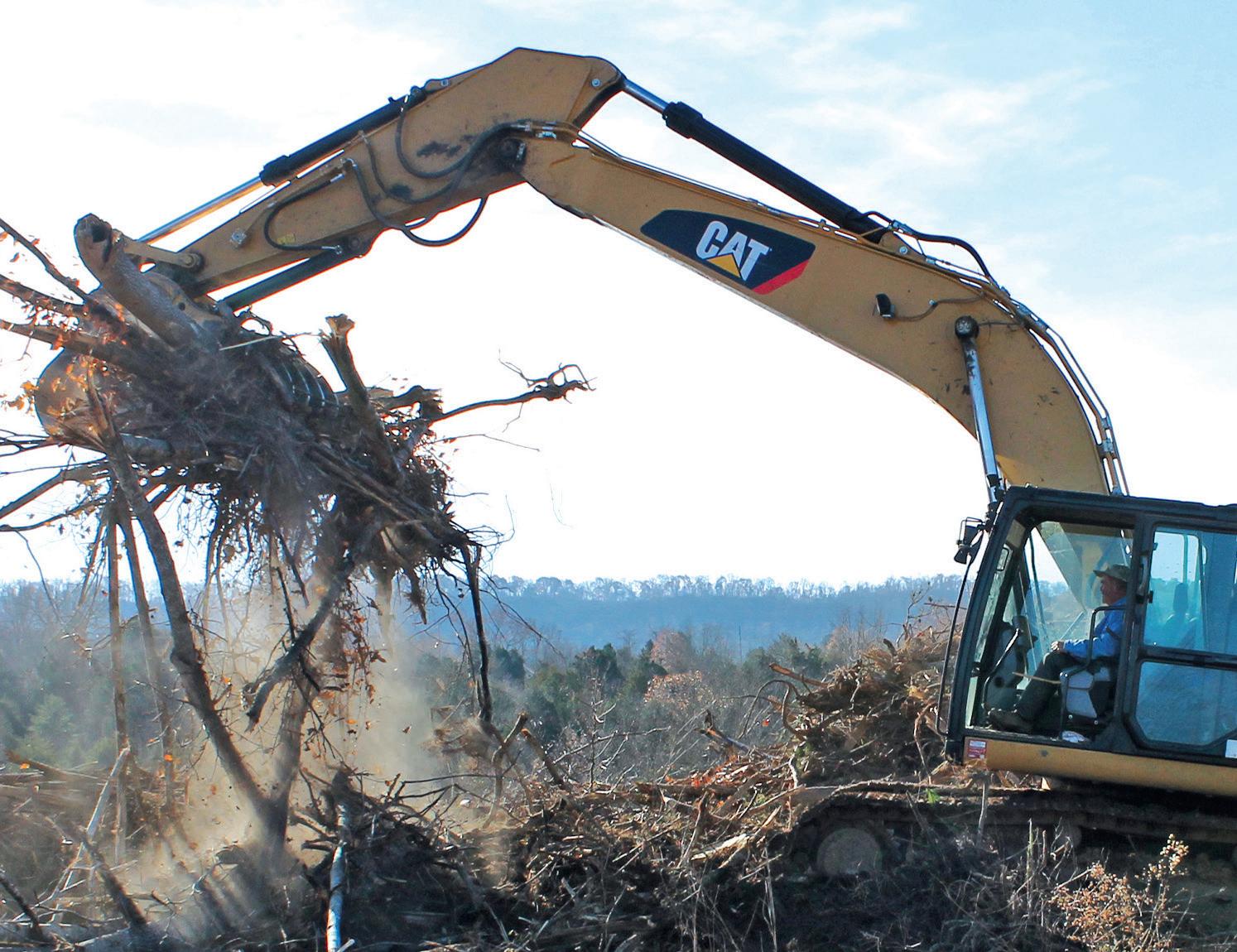
working about a day ahead of the skidders in order to keep the wood flowing out steadily and everyone working productively. If there’s no wood on the ground and the skidders ‘catch up’ with the harvesting machine, you lose efficiency. For example, if you’re cutting in a mixed stand, there may not be enough of a particular species to fill a truck. With the truck driver waiting, the harvester operator has to find and cut more of the same species to finish the load instead of harvesting trees systematically.
• Always keep cutting tools sharp. Dull cutting tools prolong cut cycle times, can damage saw discs and increase fuel consumption. A dull saw disc on a feller buncher can increase fuel consumption as much as 15 per cent.
• Invest in appropriate equipment. For example, tyre chains can help reduce skidder and feller-buncher cycle times. Chains increase traction and
reduce the need for the feller buncher to move trees to a place accessible to a skidder without chains.
• The quickest way to the landing is not always a straight line. The fastest way is likely the path of least resistance. For example, you’re the skidder operator on the front face of a really steep hill, and the landing is at the top. You could claw and grab your way to the top, or you could go down the hill and around to an area less steep, traveling further but getting to the landing quicker.
• Optimise skid distances to eliminate unnecessary loader moves and road building, but know at what point a move is more efficient. Know your cycle times. When skid distances reach a certain point, you’ll know you can make up the time lost by moving the landing because skidder cycle times will be faster.
• Post performance metrics for employees. Keep score. This ignites their competitive spirit and enables thems to see their improvements.
• Use technology. In the past, cycle times, machine down time and production levels were measured manually with stop watches, weigh scales and tape measures. Today there are affordable telemetric systems that can provide most of this information through onboard computer systems. Having this information at your fingertips is worth the investment.
Contact your local Cat dealer for more information
NSW/ACT WesTrac 1300 881 064
VIC/TAS William Adams 1300 923 267
Western Australia WesTrac 1300 881 064
QLD/NT Hastings Deering 131 228
South Australia Cavpower 08 8343 1600
• Have appropriate maintenance tools on site, as well as replacement fluids and parts for components more likely to fail (hoses and seal kits).
NZ TERRA 0800 93 39 39
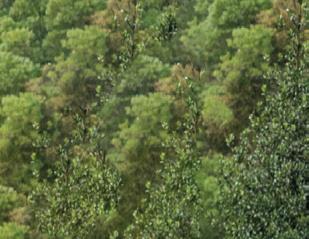
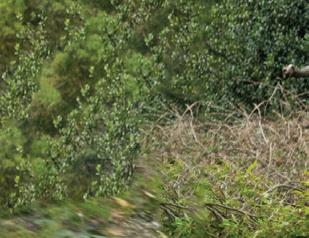
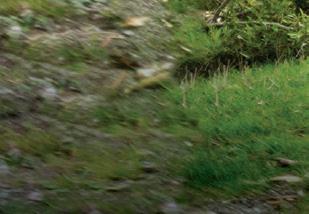
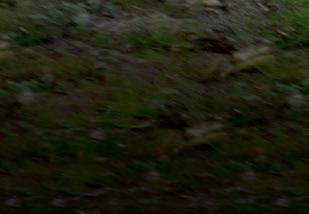








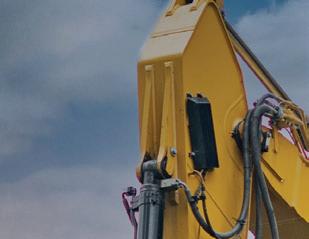
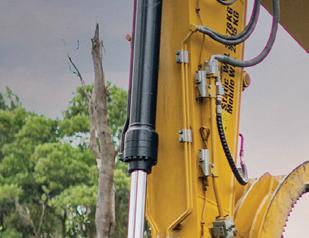
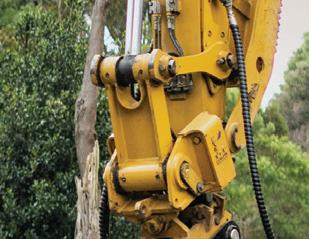
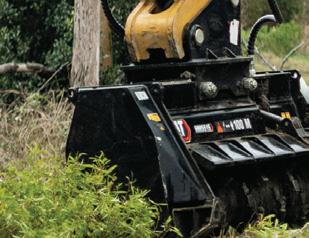
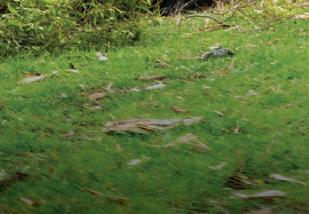


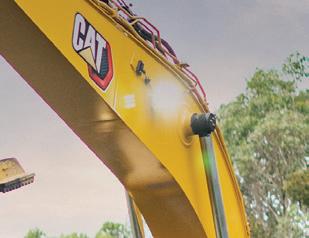

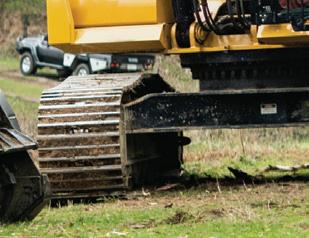


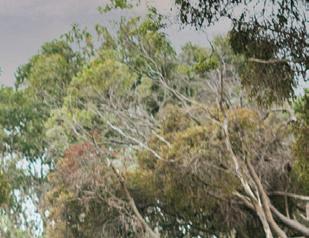
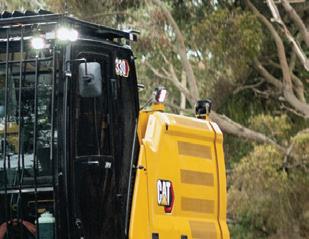
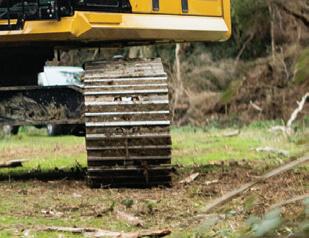





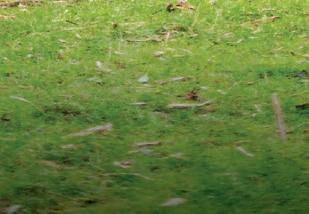

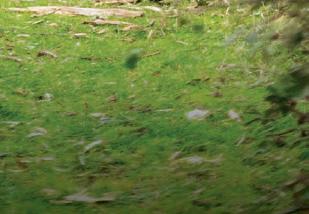



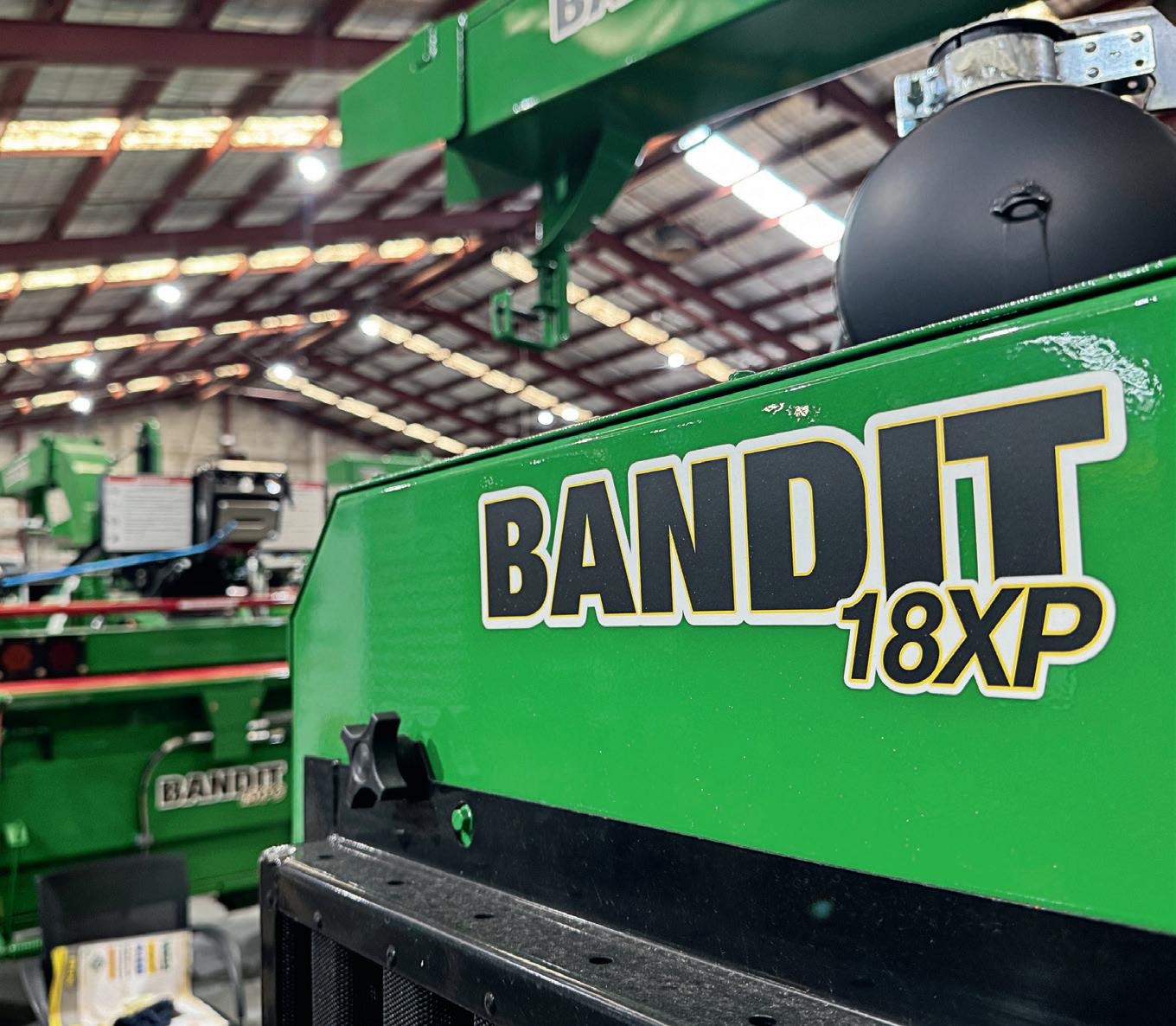
TCM’s new work bays have been equipped to ensure machinery continues to receive the servicing and attention it needs.
The Sydney branch of one of Australia’s most respected and longserving suppliers of arbor machinery has moved. The service and expertise are still there though, same as always.
Tree Care Machinery Pty. Ltd. (TCM) began servicing the South Australian tree-care industry over 30 years ago, providing a range of machinery and arborist equipment to make the care of trees more efficient and profitable.
Joining the EEA Group in 2023 allowed Tree Care Machinery, the home of Bandit chippers and stump grinders, Hansa chippers and Cast
loaders, to expand its range of products and service all Australian states and territories.
After a few years in Glendenning on Sydney’s western edge, the Sydney office of TCM now has a new home in Seven Hills. On September 01, the new headquarters opened its doors at 15 Stanton Road, Seven Hills.
All other TCM branches are still up and running, including Melbourne, Adelaide, Brisbane, Newcastle and Perth.
The TCM parts team has worked tirelessly to make the relocation as seamless as possible. The new office and warehouse are set up and ready to go for anyone needing parts for
chippers. The work bays have also been equipped to ensure chippers and stump grinders continue to receive the servicing and attention they need, and any breakdowns are dealt with quickly and efficiently to ensure minimum downtime.
To get in touch with TCM, call 1800 681 733, or use the contact tab at treecaremach.com.au.

There’s a new headquarters for Bandit chippers and stump grinders in Sydney.
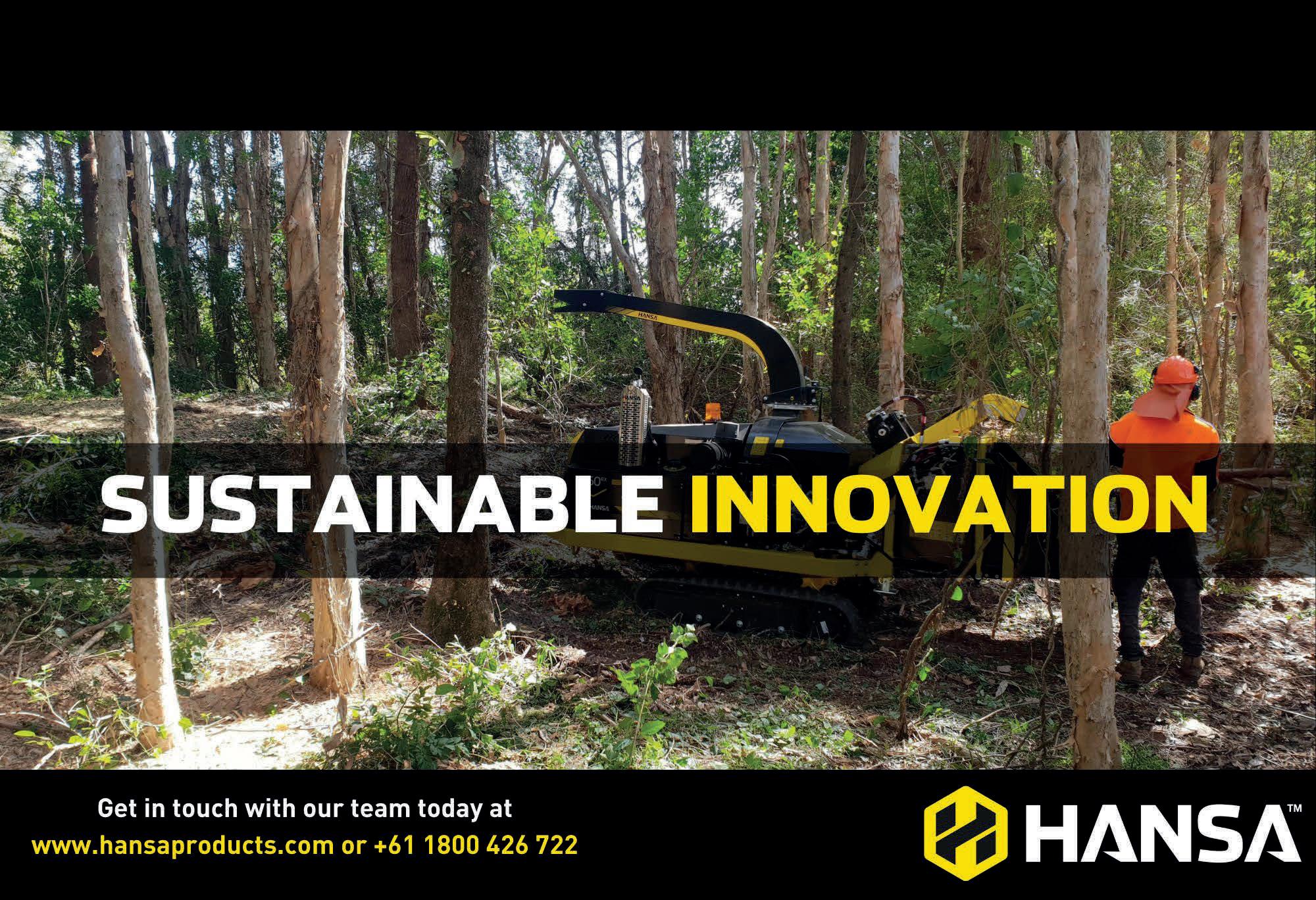
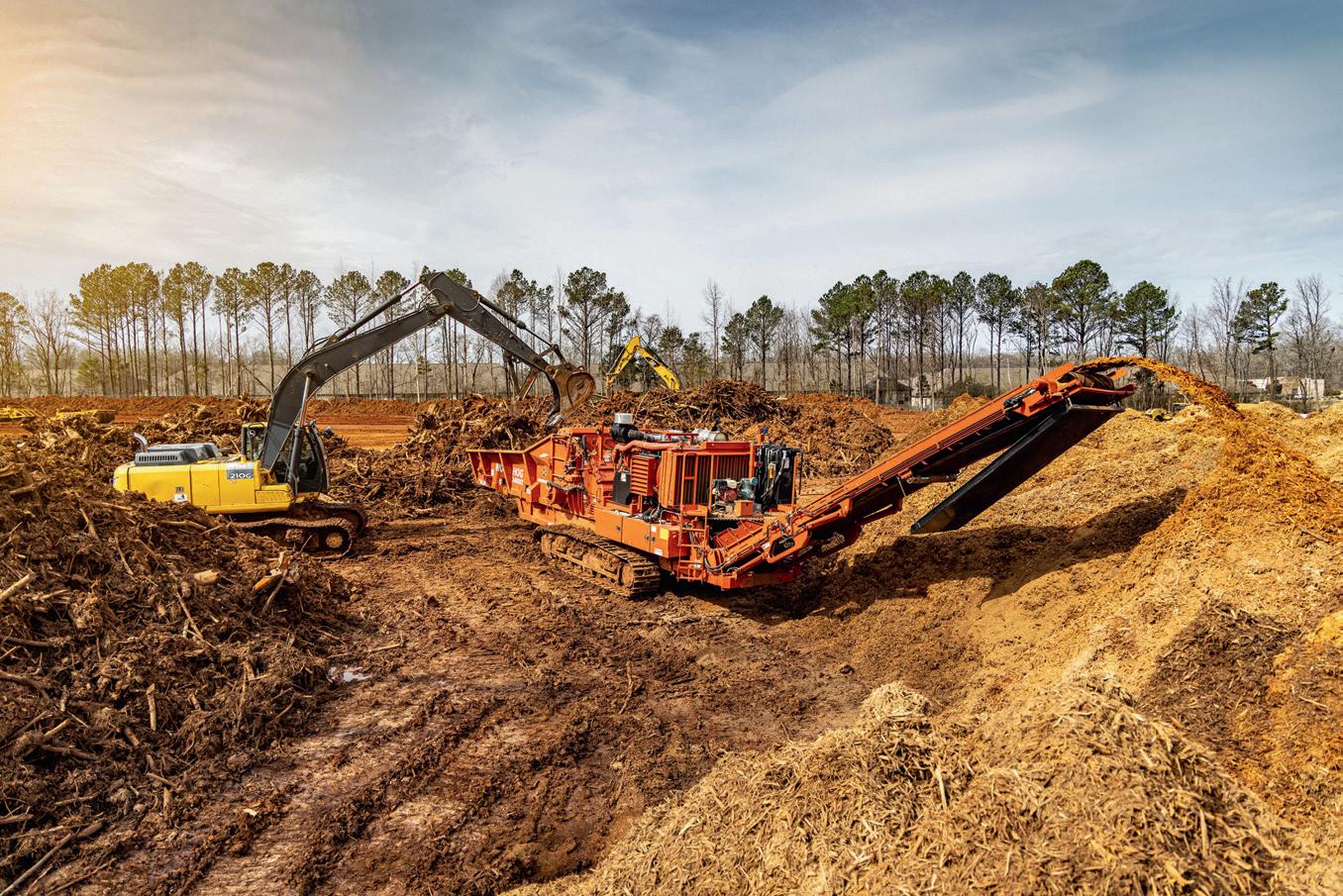
Morbark and Rayco equipment offer complete solutions for vegetation processing and land clearing.
Managing vegetation, whether through routine tree care, largescale land clearing, or biomass fuel production, requires rugged, dependable equipment designed to maximise productivity and safety. Morbark, along with its affiliate Rayco, offers a full line of industrial and tree-care machinery that helps customers efficiently process wood, brush, and stumps while turning organic debris into valuable end products.
For arborists, municipalities, and contractors, Morbark brush chippers are essential tools for day-to-day tree care. These machines are built to handle everything from small residential jobs to heavy-duty commercial clearing. With powerful infeed systems and reliable chip throwers, Morbark brush chippers reduce bulky limbs and branches into manageable chips that are easy to haul, recycle, or repurpose as mulch. Compact and manoeuvrable models serve residential crews, while larger towable or track units provide the power and versatility required for demanding clearing projects.
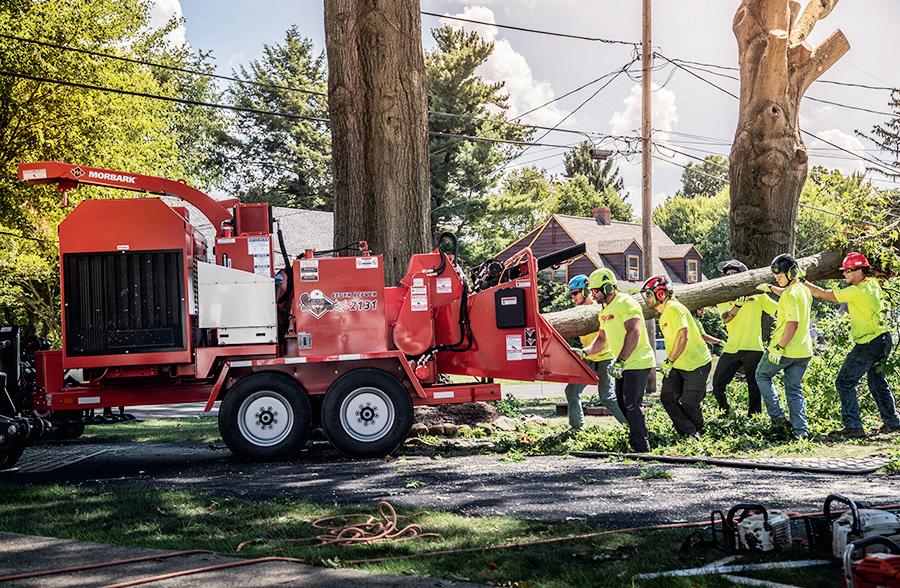
When the scale of work increases, Morbark horizontal grinders are the solution for transforming large volumes of wood waste into usable products.
Designed for green-waste recycling facilities, land-clearing operations, and mulch producers, these grinders efficiently process logs, brush, and
other woody debris. Operators benefit from consistent, high-quality output, whether producing mulch, boiler fuel, or biomass feedstock. With innovative features that reduce maintenance downtime and maximise throughput, Morbark horizontal grinders provide unmatched performance in even the toughest applications.
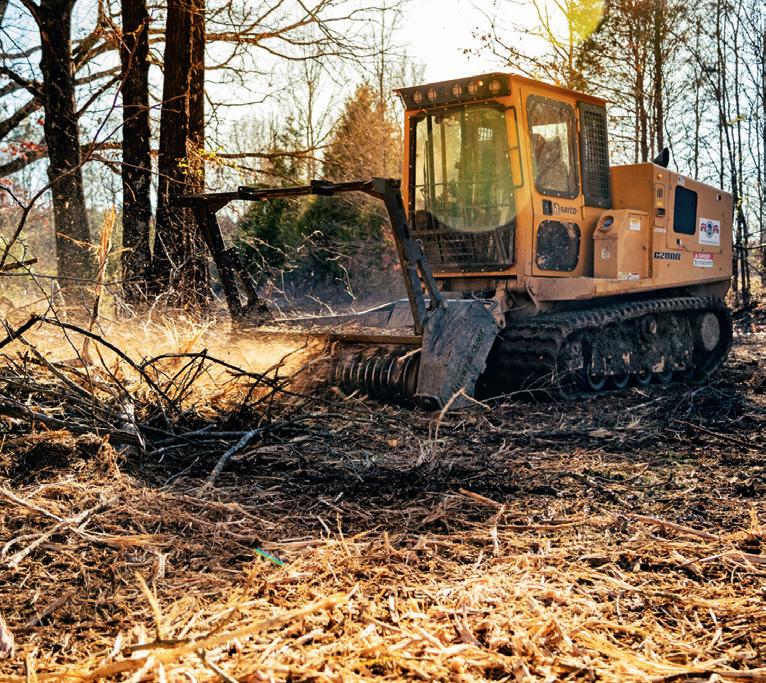
Completing the land-clearing process requires addressing stumps and dense brush. Rayco stump grinders are built to
efficiently remove stumps of all sizes, from backyard jobs to commercialscale projects. Their designs emphasise operator safety, visibility, and ease of use, enabling faster job completion.
In addition, Rayco forestry mulchers provide powerful solutions for brush clearing and vegetation management. These mulchers effectively grind brush and small trees into mulch, leaving cleared land ready for use. They are especially valuable for right-of-way maintenance, wildfire prevention, and habitat restoration projects where ground-level clearing is essential.
What sets Morbark and Rayco apart is their ability to offer a complete suite of vegetation-management equipment. From initial tree felling and brush chipping to grinding, mulching, and stump removal, customers can find purpose-built machines tailored to their needs. By providing innovative, durable, and efficient equipment solutions, Morbark and Rayco empower customers across industries – tree care, land clearing, recycling, and biomass production – to process vegetation safely, sustainably, and profitably. Together, they deliver the tools necessary to turn challenges into opportunities amid growing demand for land management and renewable resources.
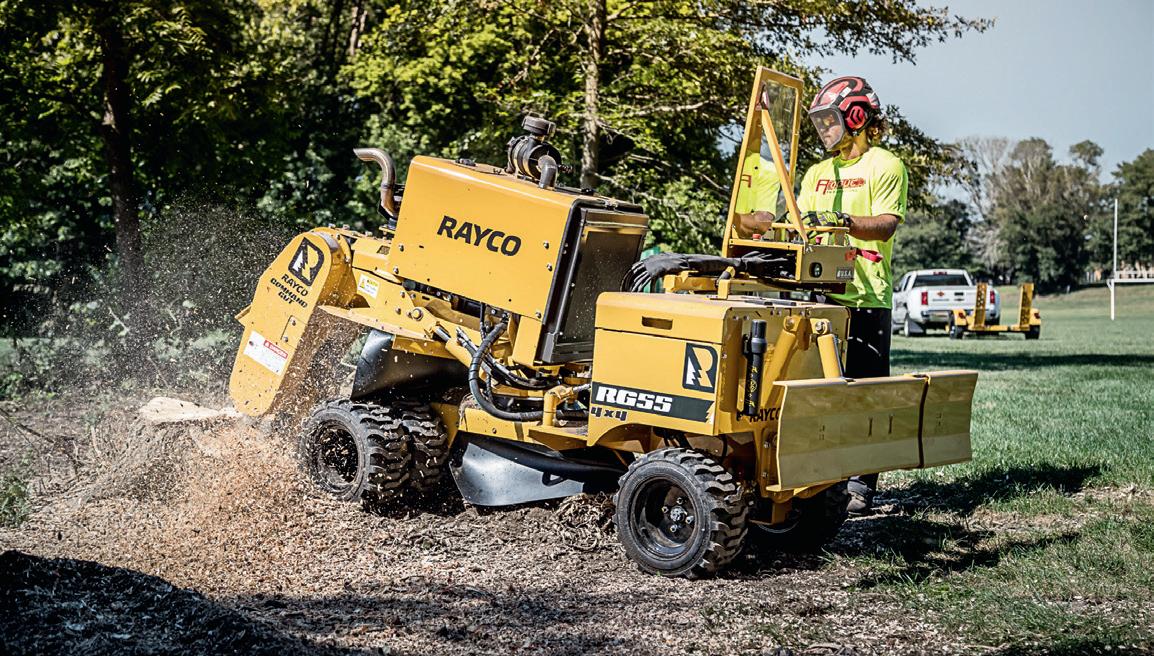
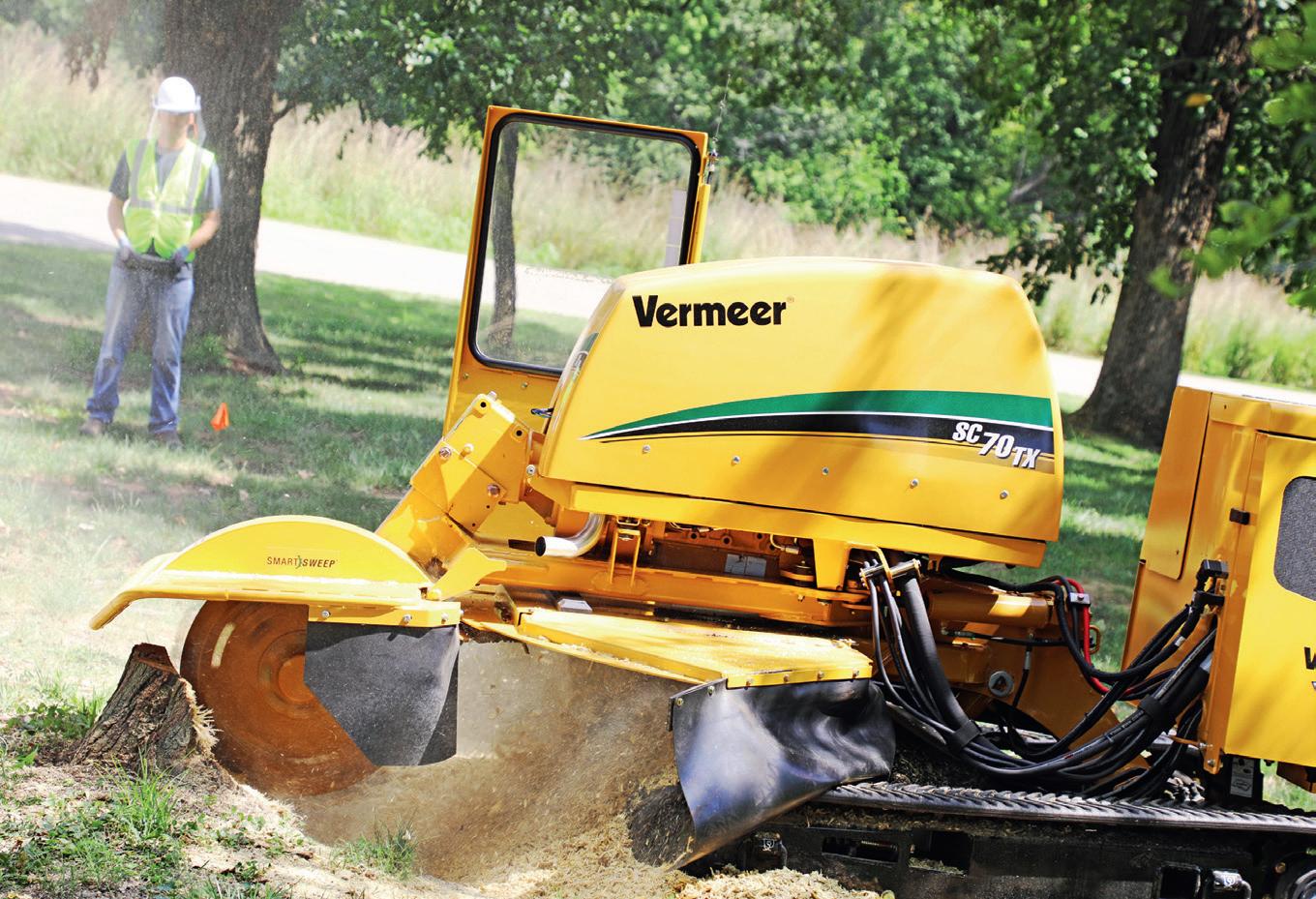
When it’s time to hand over a sizable wedge of cash for a new machine, a buyer wants reassurance on a few things. One is the machine being capable of doing the work required. Another is support from the manufacturer which will ensure the machine’s viability. GDE Mulching Services found what it was looking for with Vermeer and the SC70TX Stump Grinder.
The Vermeer SC70TX is a wellthought-out, robust stump cutter. It’s a narrow 129.5cm wide when it’s ready to transport, its diesel punches out a hefty 67 horsepower, and it runs a 23" cutting wheel. Safety features are top notch, and an optional remote control allows working in hard-to-access areas ßwhile the operator is sited in a safe position to monitor and control the machine. A 30-tooth cutter wheel spins at 880rpm and, overall, it’s ideally sized for a wide range of both commercial and residential work.
Graham
Dewitt, owner and Managing Director of GDE Mulching Services
in Brisbane’s south, has many years of experience with different types of machines. While he expected the Vermeer to be a good candidate for his next purchase, the decision wasn’t a foregone conclusion.
Shopped around
“I’m a bit of a veteran,” said the goodhumoured Dewitt.
“I’ve owned a fair bit of Vermeer gear over the years – around 20 chippers and at least a dozen stump grinders.”
But things moved on and Graham, an arborist by profession, sold the arbor business and went into land clearing
– roadsides, estates and so forth – and recently had a job come up where, mathematically, it made sense to buy a stump grinder rather than hire one.
Graham is currently running a sizable fleet of heavy machinery, including an excavator and horizontal grinders, so he phoned some suppliers and requested a demo of suitable stump grinders. He found most suppliers weren’t keen on the idea.
“I told them if they brought one up, and it did what they said it would do, I’d buy it on the spot,” he said. “The standard response was, ‘Oh, we’re not doing that’.”
After a few years away from the Vermeer arbor equipment, Graham decided to give the company a try.
Vermeer was happy to accept the challenge.
“I told them the same as the others,” he explained to The Australian Arbor Age. “If it does what you say it will do, I’ll buy it.”
The SC70TX must’ve delivered on the promise, because Graham went ahead with the purchase and has been running the Vermeer for around four months.
How has he found the support from Vermeer itself?
“We had a couple of little teething issues,” said the Queenslander, “and they were straight out to the site and fixed them up. They’ve been really good. No problem.”
The machine itself has won Graham over as well.
“Its power, size and, so far, reliability have been excellent,” he said. “Being on tracks, having a remote control
An optional remote control allows working in hard-to-access areas.
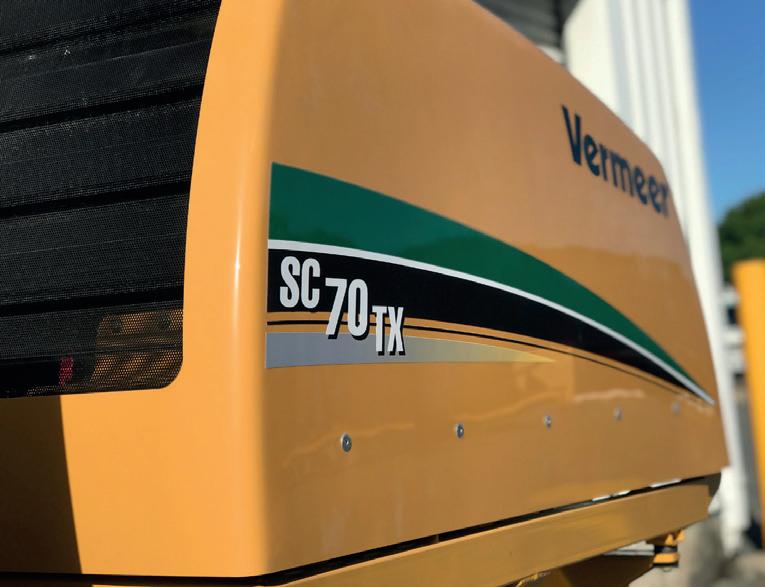
available…you can stand a few metres away, or even 10 metres away, and grind on to your heart’s content in safety.”
While the SC70TX is clearly fulfilling GDE Mulching Services’ needs, Graham is firm in his assertion it was Vermeer’s service which secured his custom over similarly
rated machinery from other brands.
“The reason I went back to Vermeer is how helpful the staff were in getting the deal done, and so far, four months into ownership, the after-sales service has been good.”
Discover the whole range on VermeerAustralia.com.au.
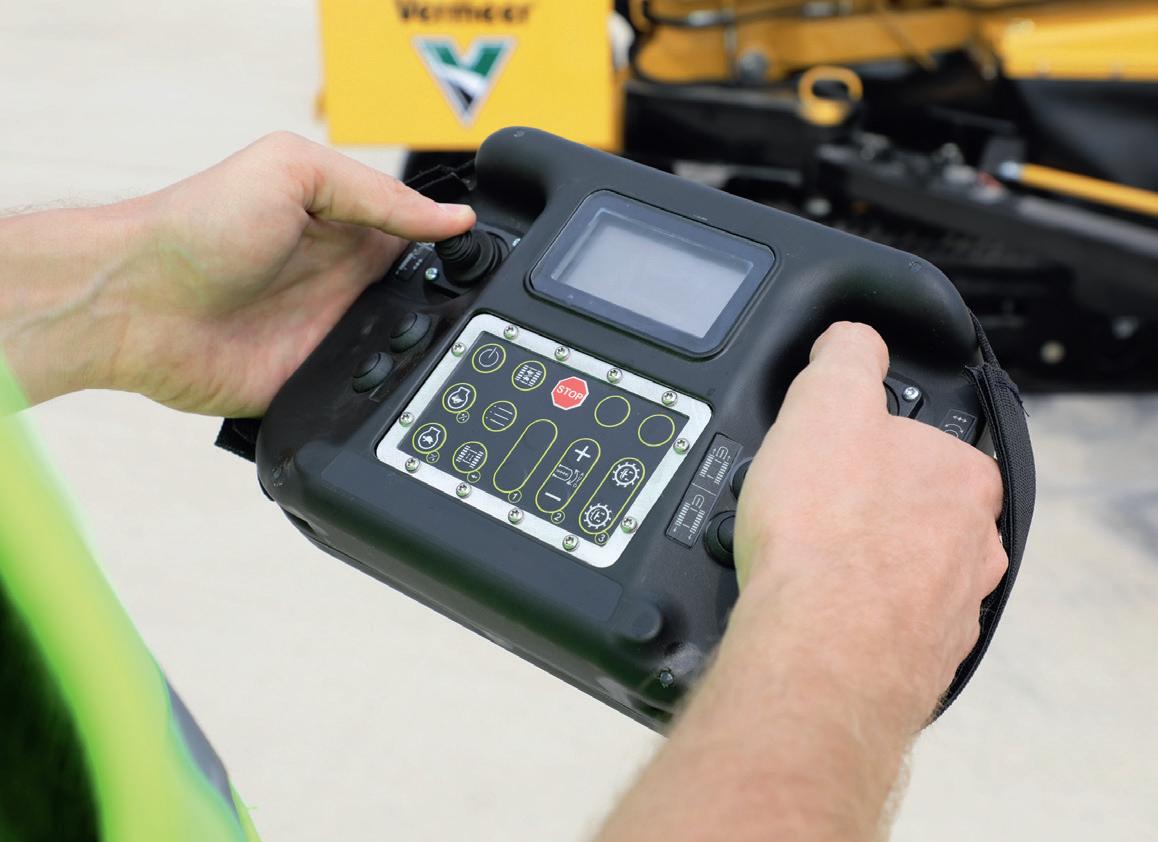
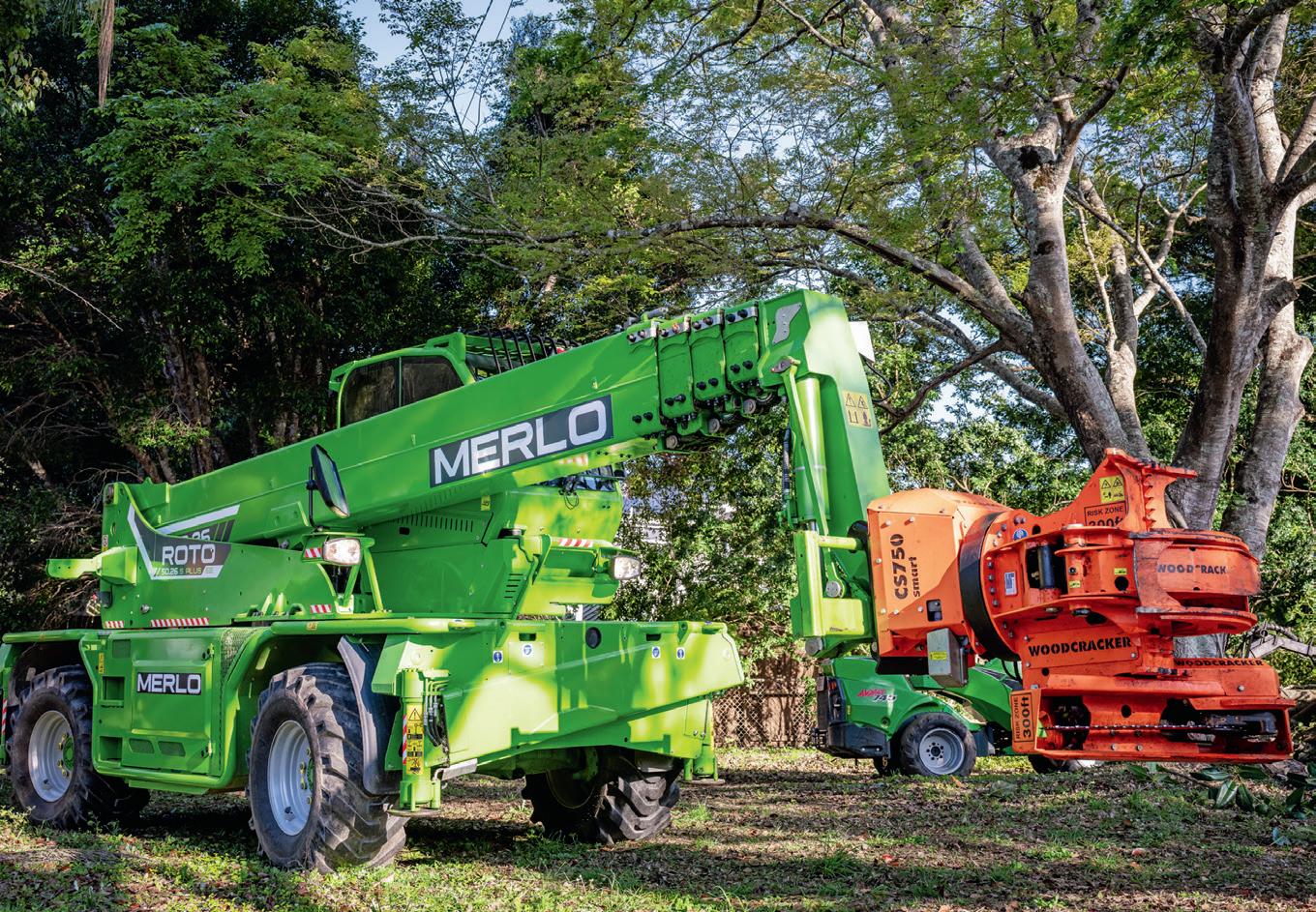
Queensland’s Bush and Beach Tree Services has moved to a Merlo telehandler and Westtech Woodcracker CS750 Smart grapple saw. The company is convinced it’s the way of the future.
The hinterland to the west of Queensland’s Sunshine Coast sounds like an idyllic location for an arbor business. The scenery is magnificent and the potential for tree work is just as good.
But for a successful and hardworking arbor outfit, the area possibly has a drawback or two.
“Being one hour inland from the coast has its disadvantages,” said Luke Maher, who, along with partner Arna, owns and operates Bush and Beach Tree Services. “With competition from employers on the coast it can be difficult to get groundies and climbers to travel out here for work.”
Luke and Arna are both arborists. Luke
is Level 3 and Arna Level 5, and Bush and Beach Tree Services offers a wide range of services to clients throughout the Sunshine Coast, Noosa and Gympie. Typically, Bush and Beach will tackle all types of tree work, stump removal, storm clean-up and a much more. Recently, Luke’s been looking for a way to cope with a common problem.
After climbing for 20 years or more, he’s looking for a way to deal with a common climbing problem.
“Like any climber who’s been doing it so long, the body has started to play up,” he told The Australian Arbor Age. I don’t recover as well as I used to.
“The weekends aren’t long enough anymore,” he said with a chuckle.”
It wasn’t just himself Luke was thinking of. He has a loyal group of employees and he wanted to ensure they were looked after as well.
“We have an ageing crew and we want to keep them employed,” he said. “The industry’s always hard, there’s no doubt about it. We’re trying to prolong the working lives of our people.”
With an eye on increasing the effectiveness and longevity of the business and its employees, Luke and Arna did some research, and in April 2025 took delivery of a Merlo Roto 50.26S and Westtech Woodcracker CS750 grapple saw.
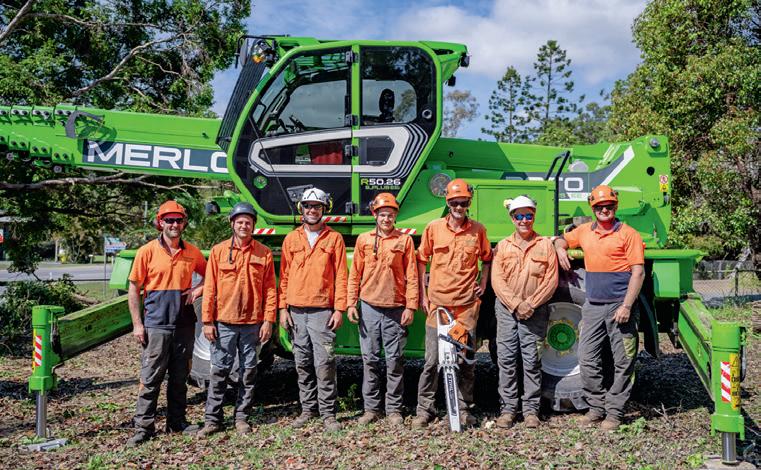
The effect on business and the Bush and Beach personnel has been marked.
“From the safety side of it, there’s a major difference,” said Luke. “We’ve reduced our climbing by about 75 per cent, and it’s reduced the number of staff we need and lot of the heavy lifting they have to do. Things come down gently in a controlled manner with the Merlo and Woodcracker.”
The Australian Arbor Age had a good
look at the Merlo Roto 50.26S and Woodcracker CS750 Smart grapple saw in the August/September 2025 issue. But to jog the memory, or for anyone who may have missed it, the Merlo Roto 50.26S telehandler has a five-tonne maximum load capacity and 26-metre maximum lifting height. It’s ideal for accessing tall trees, elevated worksites, and remote-canopy areas. It’s also compact and agile, built for challenging
The industry’s always hard, there’s no doubt about it. We’re trying to prolong the working lives of our people “ ”
terrain and confined spaces, while state-of-the-art load-management and stability systems ensure operator safety, even when working at full extension. A spacious ROPS/ FOPS-certified cab is equipped with ergonomic controls, and other features include a hydrostatic transmission, reduced fuel consumption, and reliable performance.
The Woodcracker CS750 Smart is
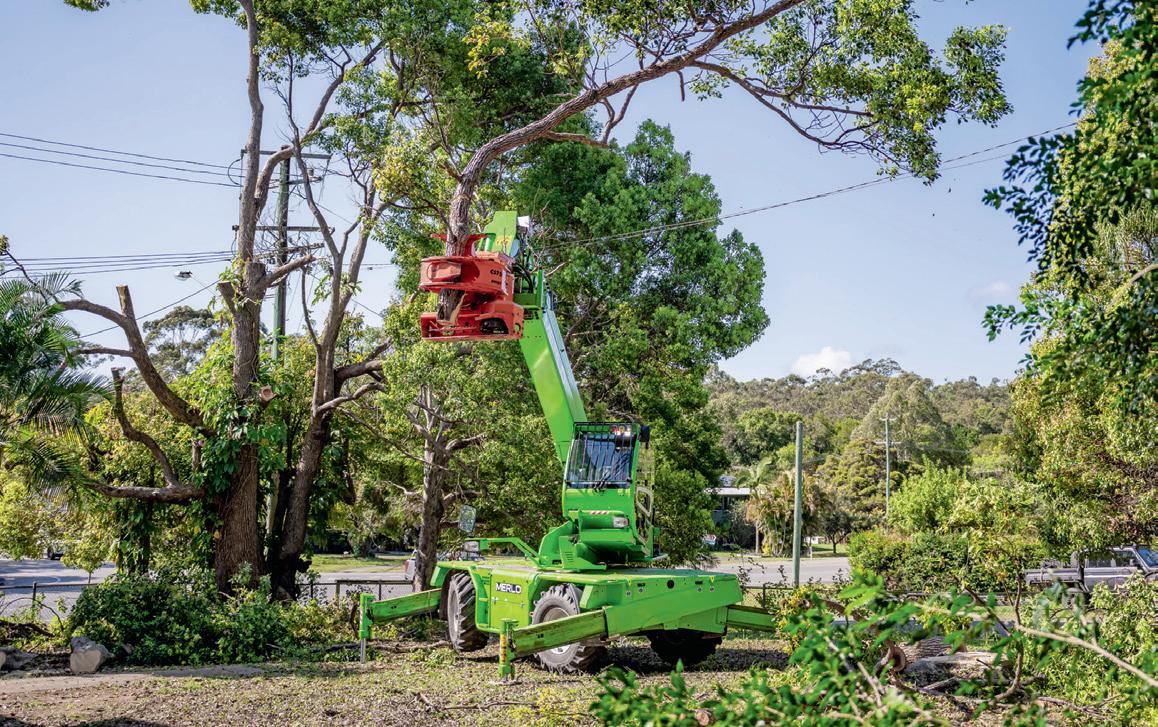
The Woodcracker gets the material clear of the tree and on the ground.
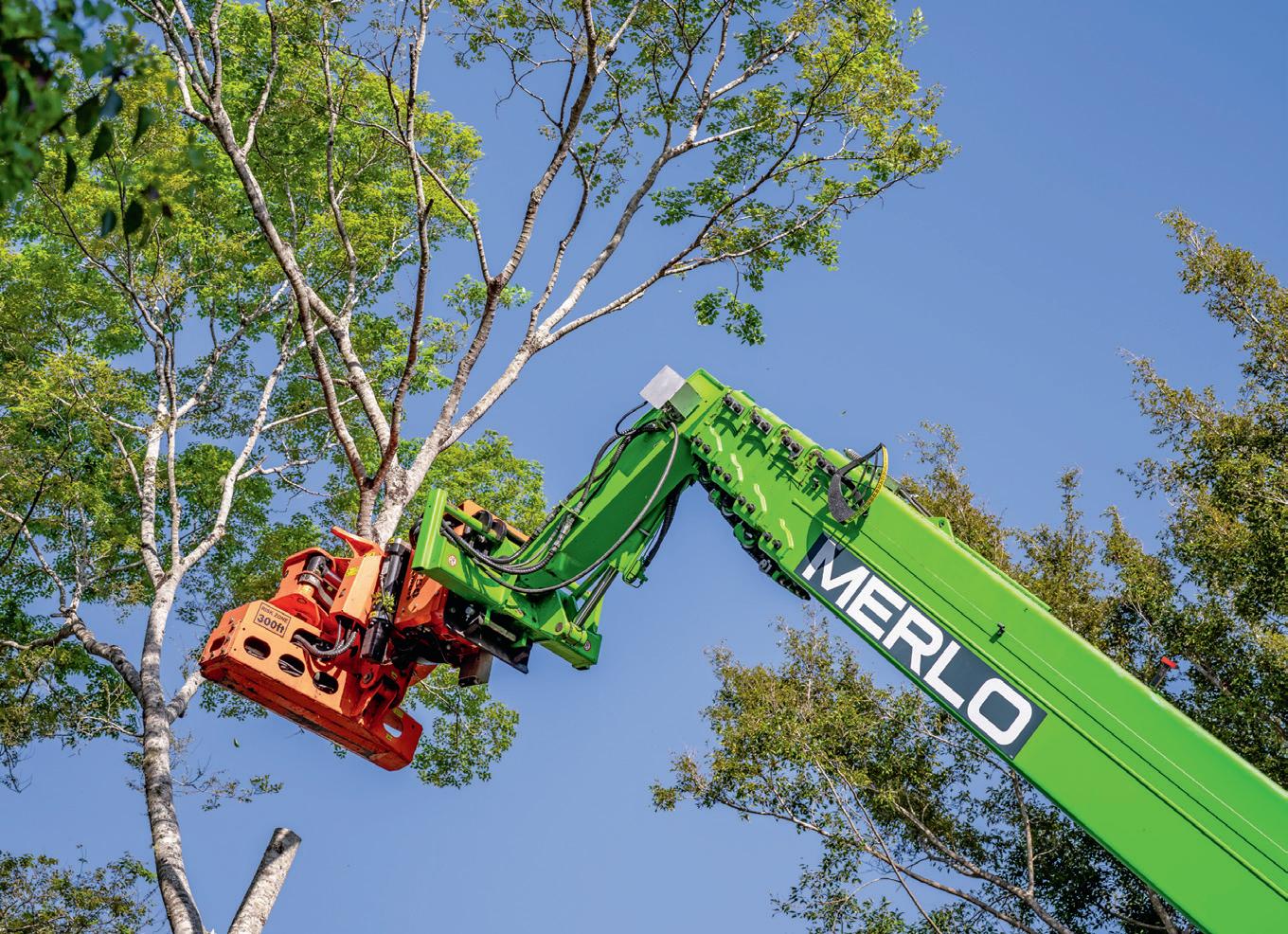
a little trickier to describe because it doesn’t fit neatly into the category of grapple saw or felling saw. It’s a little of both: a robust grapple-saw package that excels in safely taking larger tree sections to the ground, thanks to a combination of strong gripping and rotator holding force.
Housed under the CS750 grapple is an advanced Hultdins saw unit with automatic chain tensioning, greasetype chain lubrication and a 75cmdiameter maximum cut capacity.
It’s designed for tasks where site access and drop-zone space permit cutting larger and heavier tree sections. The Woodcracker gets the material clear of the tree and on the ground where it can be further processed.
An easy transition
Luke has plenty of experience operating heavy machinery and found the transition to the Merlo and Woodcracker not too challenging.
“I have my civil tickets for excavators and other machinery, and I can certainly operate most things,” he said. “The
Merlo/Woodcracker combo seemed a little daunting to start with, but it just needed hours in the seat. Now we’ve learned the machine, our productivity in tree removals has probably quadrupled.
“We’ve done some very big days, and the machinery doesn’t complain after six hours of hard work. It can still do another two hours of removals, where for a climber, six or seven hours of big removals is quite taxing.”
Luke pointed out the operator can make a huge difference to a machine’s overall performance, and Bush and Beach Tree Services has an ace up its sleeve.
“I can drive it and operate the Merlo,” said Luke. “I’m steady with it.”
Then, with a glint in his eye, he went on to say, “But Arna’s 21-year-old son, Kalani, is gifted when it comes to machines, and he’s exceptional on this machine.”
Luke and Arna didn’t take the acquisition of the Merlo and Woodcracker lightly. It was a big financial commitment, but
Luke found the mathematics made sense.
“It’s certainly not something everyone can just race out and buy,” he said. “But when we calculated what we’d be paying for a good contract climber for a week, and compared that to the repayments on the Merlo and Woodcracker, there’s not a great deal of difference. This way, at the end of the financing term, we end up owning a substantial asset.”
Luke and Arna bought the Merlo and Woodcracker from EEA Group. EEA went to Rey Kell at Forest Centre to import and supply the Woodcracker, and Luke and Arna couldn’t be happier with the service during and since the purchase.
“Both companies have been fantastic,” said Luke.
“Ben at EEA Group probably calls once a week or once a fortnight just to touch base and see how things are going and if there’s anything we need.
“The Woodcracker came from Forest Centre, and that’s how we got to know Rey Kell.
“I’d had a bit to do with Rey through friends in the forestry game as well, and he provides them with all their saw heads and other equipment, so I knew he had a very high reputation. Since we’ve taken on the Woodcracker, we talk regularly. He’s prompt and he’s straight down the line.
“The whole process has been fantastic.”
Luke’s convinced he and Arna have made a sensible and cost-effective move for Bush and Beach Tree Services, but they also believe they’re just the first of many arbor businesses that will follow in years to come.
“It’s the new way of tree handling for the future,” said Luke with some conviction.
“We’re one of the early adopters in Australia, but I can see in a few years these Merlo/Woodcracker combinations are going to be a common sight.
“Once people see what they’re capable of and the speed they work at, there’s going to be a lot more of them getting about.”




The Australian Arbor Age magazine headed north to The Sunshine State for the Queensland Arboricultural Association’s freestyle climbing competition. It was well worth the trip.

As long as the climber was deemed to be acting safely they were free to adopt whatever style they felt worked best.
As the sun rose over the Mount Tamborine showground on the last weekend of July a hardy group of climbers made their way to the work tree and sign-on area manned by staff and volunteers from the Queensland Arboricultural Association (QAA).
It was the day of the freestyle climbing comp, and while it wasn’t exactly gloomy weather, there was no need for a touch of the ol’ slip, slop, slap either. It was overcast with rain threatened for later in the day.
As a sizable crane from Davo’s Crane Hire was eased into position and bells were hung, competitors went through sign-on and briefing and the stage was set.
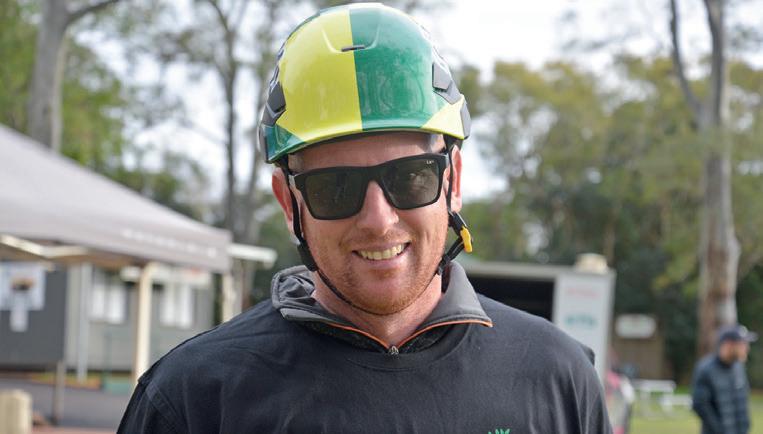
The tree was the same one used for the state championship earlier in the year, and under the guidance of QAA president Jamie Boston, the indefatigable secretary Bec Dalton, and a contingent of volunteers and helpers, things got underway. The climber began attaching his or her harness to the crane to be lifted safely but swiftly to the predetermined start station.
From there the climber was timed to strike the bells hung at various vantage points around the tree as is seen in competitions everywhere.
Ah. But this was a freestyle event.
With some of the more rigorous parameters of a ‘normal’ climbing event relaxed, as long as the climber was deemed to be acting safely they were free to adopt whatever style they felt would have the bells rung in the shortest possible time.
And there sure were some interesting styles.
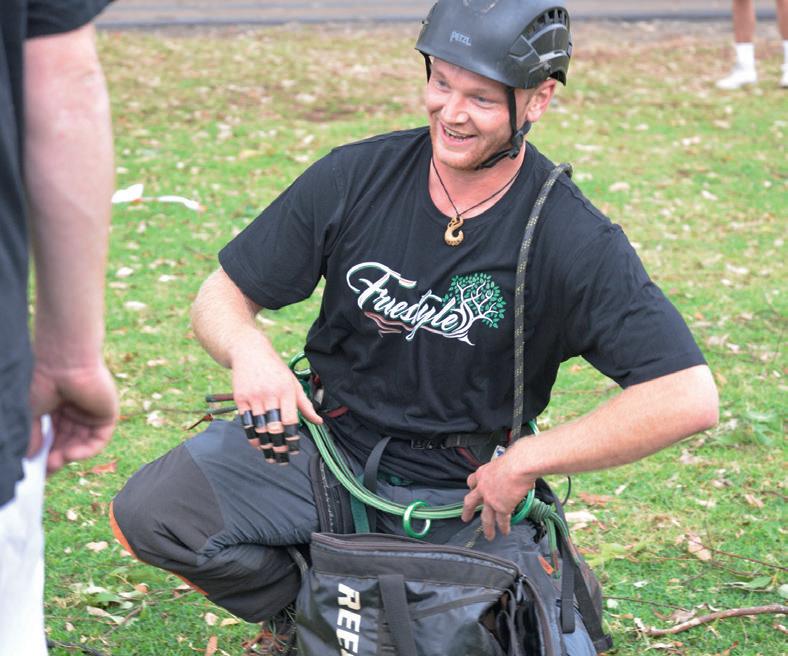
When you choose the BVR Brush Chippers from Morbark, LLC, you’re not just investing in a machine — you’re investing in decades of innovation, quality, and craftsmanship. These chippers are designed to stand the test of time and make your toughest jobs easier and more profitable.
Don’t settle for less. Choose the chipping power of the BVR Brush Chippers and experience the difference that Morbark’s legendary performance can bring to your business.
Unlock Powerful Performance with the BVR Line of Wood Chippers from Morbark.
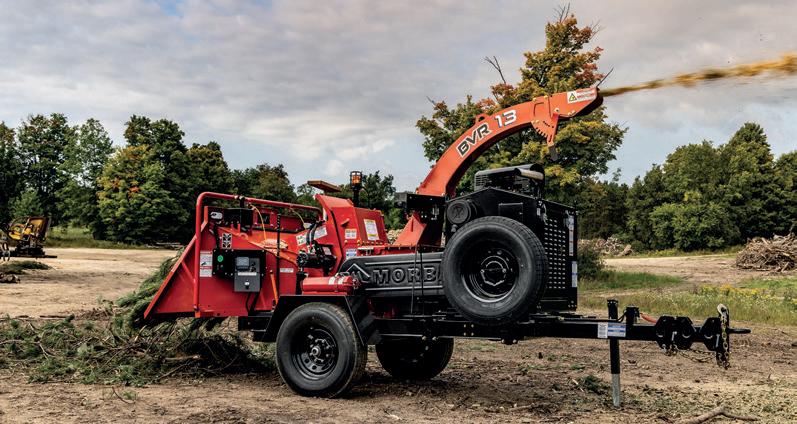
When you choose a BVR Wood Chippers, you’re not just investing in a machine — you’re investing in decades of innovation, quality, and craftsmanship. These chippers are designed to stand the test of time and make your toughest jobs easier and more profitable. Don’t settle for less. Choose the chipping power of BVR Wood Chippers and experience the difference that Morbark’s legendary performance can bring to your business. To find a Dealer in your neck of the woods, go to https://dealers.morbark.com
Monitor Industries - Australia
Ph: +61 1800 025 024
www.monitor.net.au
Stevens Group - New Zealand
Ph: +64 09 275 0443
www.stevensgroup.co.nz
To learn more about the complete line of BVR Wood Chippers, scan the QR Code with your mobile camera
®
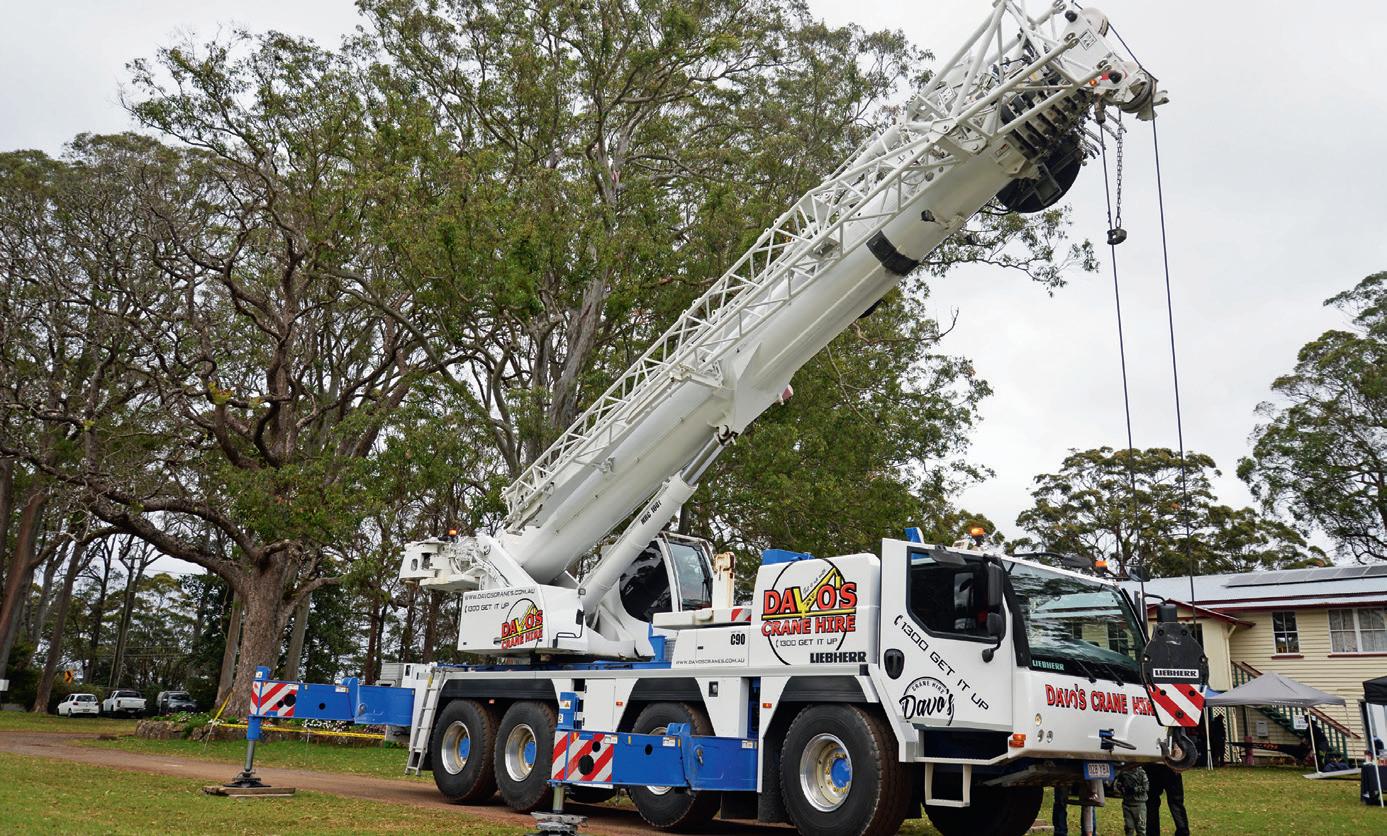
highlight of
Ella was a novice and a clear favourite with the crowd. She worked her way around the bells with the occasional slip or miscalculation and the cheering and support grew louder and more strident as her climb progressed. Then, as she approached the bell nearest the spectators, the support began to swell, until, at full stretch, the young climber lunged out to headbutt the target bell.
The place went crazy with people jumping and hallooing and bellowing their support. Ella-Beth’s grin must’ve been clearly visible from at least as far
away as Brisbane as she worked her way around the remaining bells.
Another huge roar of approval went to Eban Weaver-Wampl. In his first-ever comp Eban climbed his way to the semifinals.
Although the support for Ella-Beth was strong and very vocal, one of the most overwhelming impressions of the whole event was the incredible camaraderie among the climbers. Everyone cheered and boosted everyone else, whether it was their nearest competitor or someone they’d only just met, and climbers awaiting their turn helped

those before them stow ropes and pack away. That resulted in the pace of the competition being nearly as fast as the climbers in the tree.
That was a good thing, because with organisers gazing anxiously at the Bureau of Meteorology website on their phones, it was obvious there was some rough weather headed toward Mt Tamborine.
Thanks to swift and decisive action from the organiser, and a determination not to allow the event to be interrupted, the competition was completed in time.
Not by much, for sure, but in time enough. Nobody had to miss a climb and no one had to climb in conditions where safety had been compromised.
As the first raindrops began to patter down on awnings and gazebos, the results were tallied and winners announced.
It was a well-run day with incredible support from and for everyone, and The Australian Arbor Age felt privileged to be on hand to enjoy the experience. It was the second QAA climbing competition we’ve attended this year, and they’ve both been brilliant. We’re looking forward to a big year spectating at QAA events in 2026.
Any discussion which includes female climbers in Australia is very likely to include Jess Hamer. Jess is a strong competitor and popular personality at events both locally and internationally.
Just as we were tidying up this issue and uploading it to the printer the results from the Queensland Tree Climbing Championship were gazetted showing yet another victory for female climber Jess Hamer.
The Australian Arbor Age had grabbed Jess for a quick catch up between climbs and found the Queenslander, as always, cheerful and inspirational.
Jess’ career started in horticulture, and while she enjoyed that line of work, there was one aspect of the industry that caught her attention.
“I started off in gardens,” she said. “Then I thought it’d be cool to learn about trees. I started studying trees and really enjoyed doing that, so then I went full time into tree care.
“I’ve been doing climbing work for 10 years now.”
Despite her obvious climbing success, Jess believes good fortune has played its part in her progression in arboriculture.
“I’ve been pretty fortunate,” she said.
“I’ve had a lot of experiences, positive and negative, and I’ve had a lot of good people around me to get me through it all.
“I do have my Level 5 now and I’ve had it for quite a long time. I did my Cert 3 then my Cert 5 straight after.
“I’m enjoying doing both. It’s another new experience for me.”
Jess’ win at the Queensland state championships was hot on the heels of a victory at the QAA freestyle event a few weeks earlier. Jess had not only won the freestyle event, but was among the most vocal and supportive in what was already an enthusiastic crowd.
We wondered what someone who climbed competitively at an international level enjoyed so much about freestyle climbing.
“I like to look at freetsyle as a

‘fun’ kind of comp, she said. “It’s no-pressure training, that kind of thing, and there are very few rules.
“Obviously we stay safe – we’re professionals. But even with the safety front of mind it’s good fun, swing-around-and-smash-somebells climbing.”
While Jess is an experienced, professional arboriculturalist, she’s continually growing and evolving. Right now she’s looking forward to the next phase of life, which includes
Inspirational and international climbing competitor Jess
a move into more consulting work.
“I’ve only just started doing consulting work in the past couple of months to start dialling back on the contract climbing,” she said. “I’m giving the body a bit of a break, and my partner and I have started trying for a baby, so I’m safeguarding myself with some consulting work.”
What about the future? Does Jess expect to continue working with and caring for trees?
“Absolutely,” she beamed. “I wouldn’t know what else to do or where else to go.”
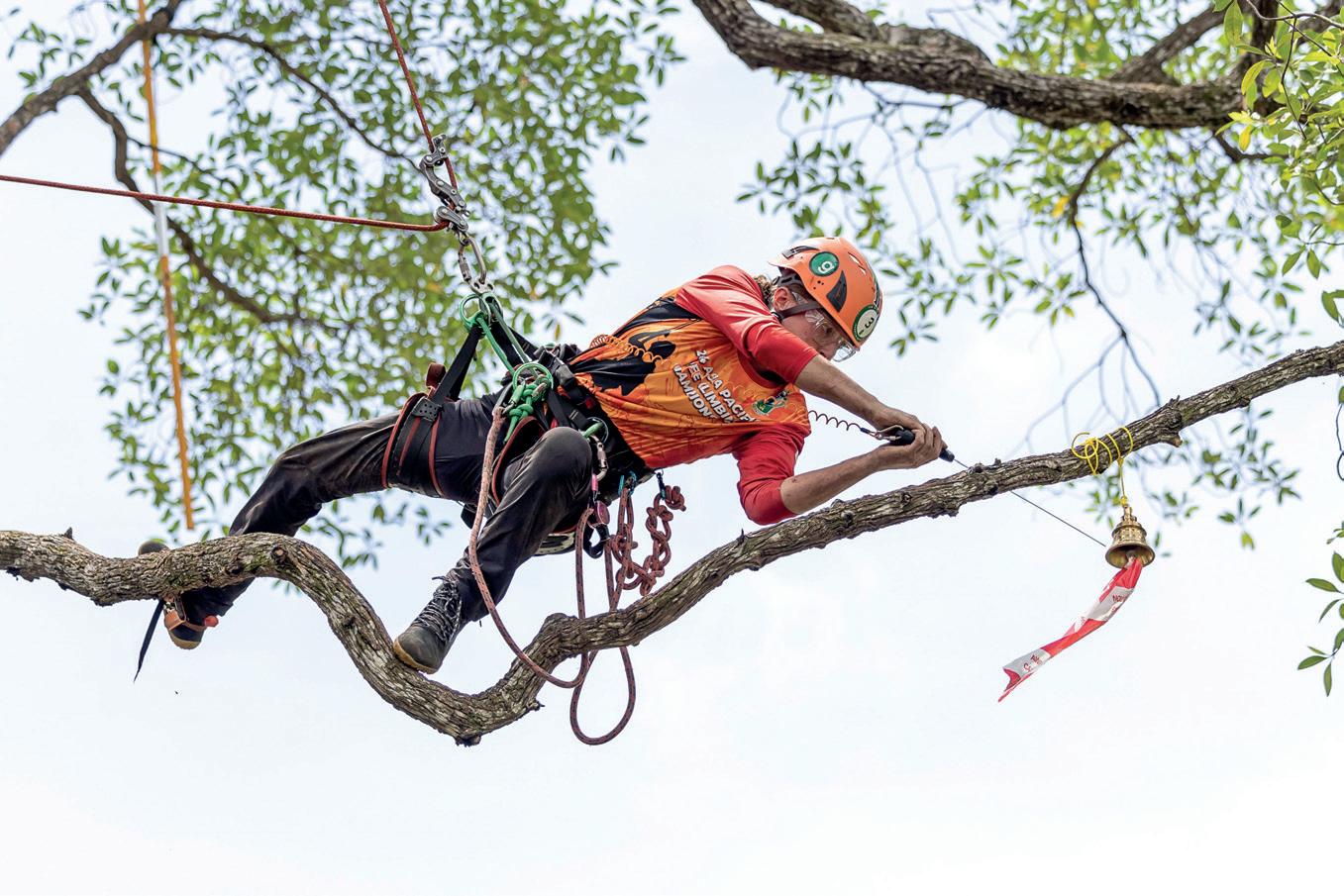
A good result at the recent Asia Pacific Tree Climbing Championships earned Isobel Watson a place at the International Tree Climbing Championship in New Zealand. Nobody was more surprised than Izzy herself.
Ididn’t realise I’d qualified for the Worlds straight away,” the irrepressible Isobel – Izzy – told The Australian Arbor Age. “Steph Dryfhout from New Zealand, an amazing climber and an amazing person, finished in front of me in Masters at the Asia Pacifics. Everyone was congratulating me for getting into the Worlds, and I was like, ‘No, no. Steph won’. And they said, “She’s returning champion. You qualify because she’s already got her Worlds’ ticket.”
“I was like, ‘Oh’.
Grounded
A Level 3 arborist with an adventurous spirit and the most pleasant kind of outgoing personality, Izzy studied arboriculture and began her career in England, where, at that time, it wasn’t always easy being a female tree-care professional.
After two years of college, a keen young Izzy went searching for work, and wasn’t ready to take ‘No,’ for an answer.
“When I started in England there was

a fair bit of misogyny. It was accepted that ‘girls don’t climb’. I was kept on the ground for the best part of two years of my career, and I really struggled to get any work. I’d email people and phone and text...I was persistent.”
Despite the effort and searching, there
wasn’t a lot of work sent Izzy’s way, and the work she did find kept her on the ground.
“My climbing was actually put back by a good two years, even though I had my qualifications and tickets,” she lilted with the tiniest trace of an English accent.
When I was training in England I was so against competition climbing. I don’t know why “ ”
Izzy’s determination to climb saw her subcontracting to other arborists, mostly smaller outfits with, as she described it: “…one-man bands who had a six-inch chipper and a Land Rover Defender type set up”. Some of the business owners preferred to stay on the ground and that gave Izzy the climbing opportunities she was after, allowing her to upskill until she became the lead climber of several small companies.
“That was literally how I learned,” smiled the English ex-pat.
After three years of climbing in England, Izzy packed up and flew to Australia. Unfortunately, it was 2020, and unknown to Izzy – and everyone else – COVID was about to hit.
“I did a year here,” she recalled thoughtfully. “I did my first lot of crane work, climbed between 50m and 70m Mountain Ash which was three times the height of anything I’d climbed before, and at the end of 2020 my visa was running out and the COVID situation meant it was a very unsure time.
“I went back to England and carried on contracting there, and for 2021 just moved around the country.”
In 2022 Izzy worked her way around America, Switzerland, Germany and other parts of Europe before heading back to Australia and, just three days after landing, fronted her first climbing competition.
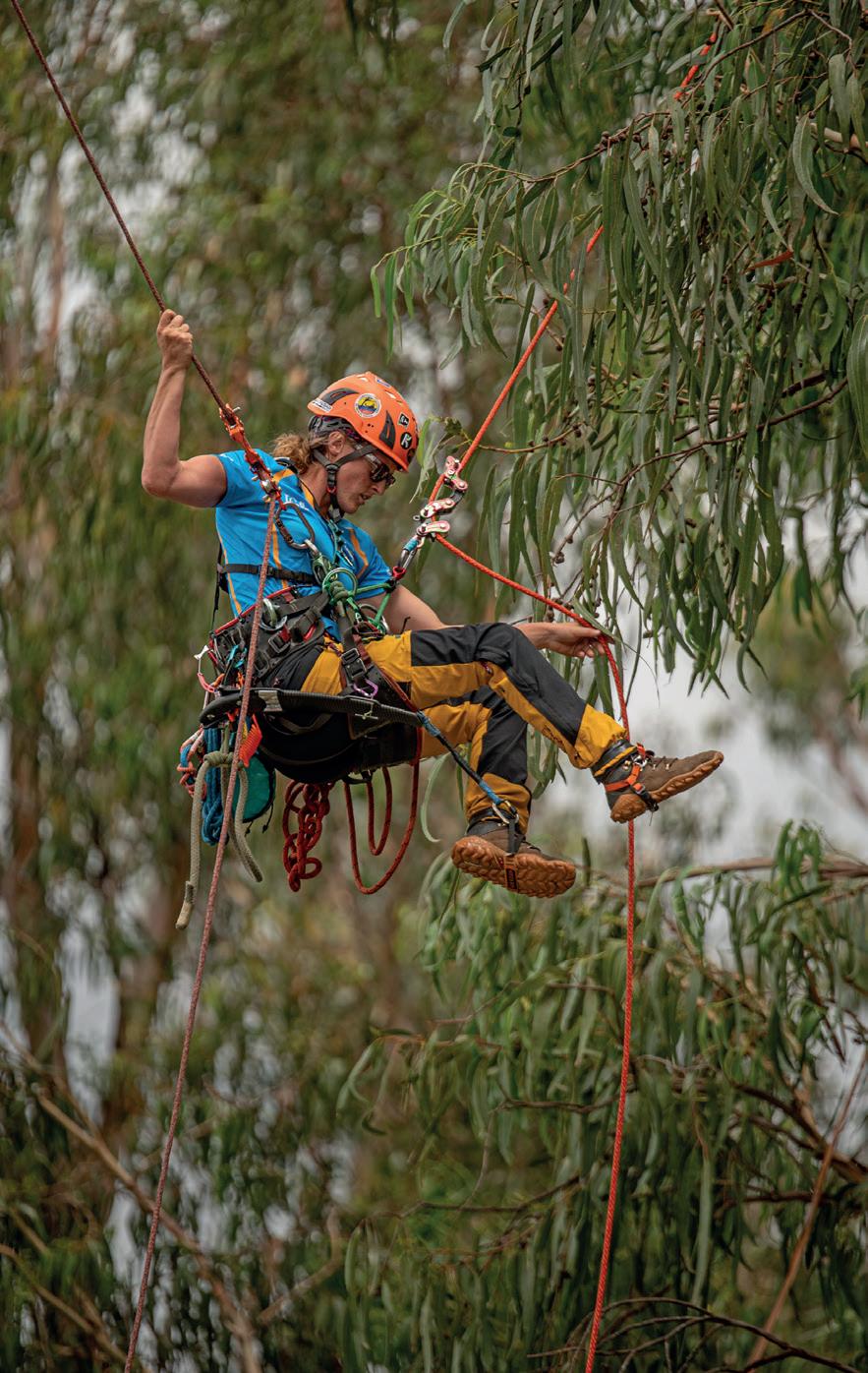
Izzy’s future holds a vista of exciting possibilities. Image: Cameron Rogers
“I had jet lag,” chuckled the now Victorian-based arborist. “I had no idea about comp climbing. I’d never even looked at the rules. It’s very different to work climbing.
“One of my friends, Beaver, who’s a big part of team Australia – coach, moral support, bag carrier and more – just signed me up for this competition. I somehow came second in the Masters and I’ve just kept competing since.”
While climbing was Izzy’s work goal for many years, competition climbing hadn’t figured much in her aspirations.
“It’s funny,” she mused. “When I was training in England I had no interest in competition climbing. I don’t know why. I was quite narrow-minded. Even though I have a passion for the industry, it’s my job and I preferred to have other hobbies outside of my work.
In 2022 Izzy worked her way around America, Switzerland, Germany and other parts of Europe before heading back to Australia. Image: Dan Dass
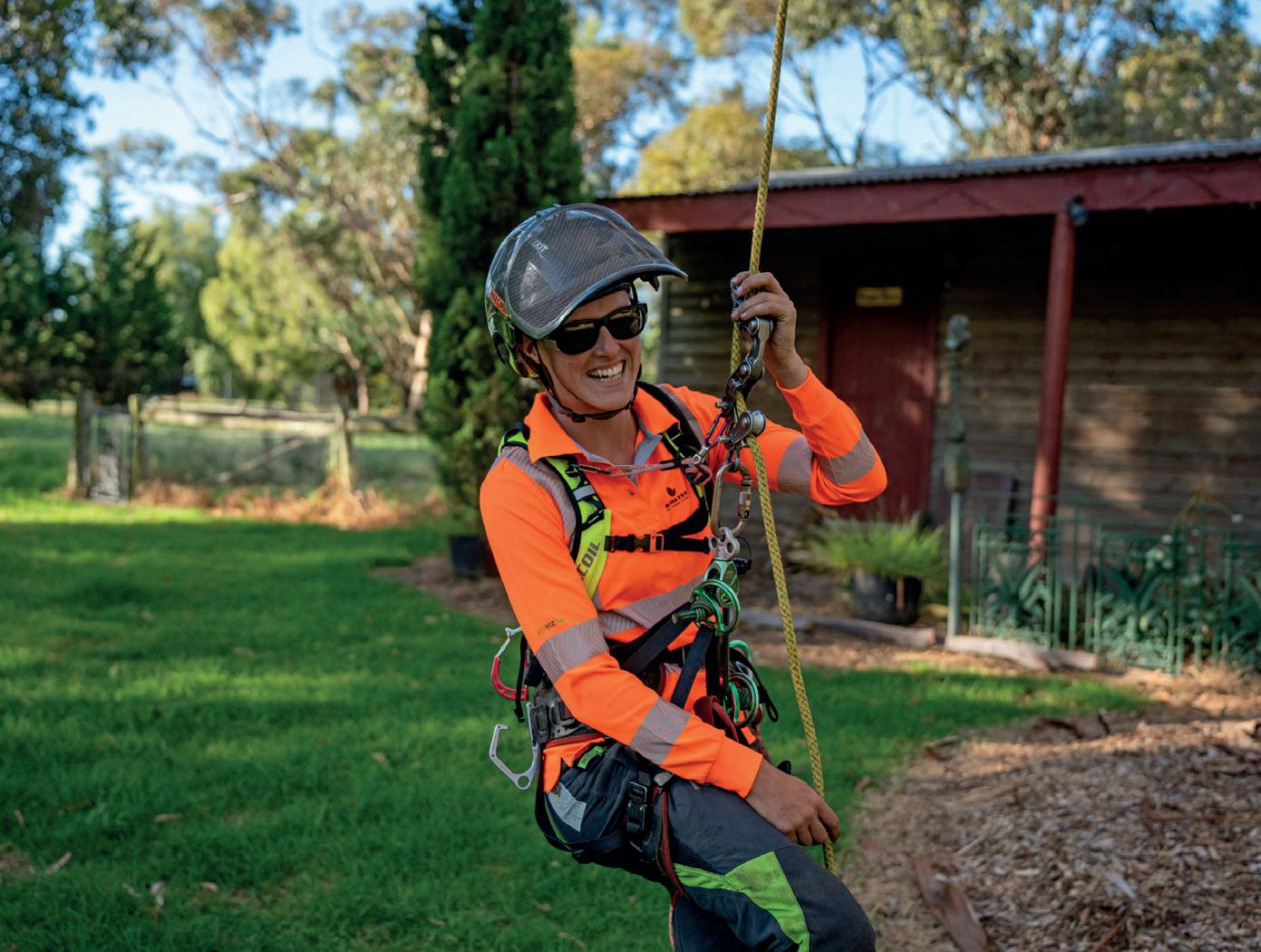
“I didn’t want to be climbing trees seven days a week.
“I did fire breathing and horse riding back home,” she casually revealed. “My cup was half full with different hobbies. But since I’ve been in Australia I haven’t been able to travel because of my visa sponsorship, so it’s become more about trees for me now.
“I wouldn’t say I’m all about comp climbing. I climb five days a week at work, and I’ve been doing it for 10 years. In terms of training, I do it all at work, because I’m already there. I have my gear out, I have to climb trees anyway because that’s what I’m being paid to do, so I integrate the training into that.”
Currently working for McLeod Trees in Mordiallic, and looking forward to permanent residency in 2027, Izzy’s now bubbling over at the thought of the ITCC – ‘the Worlds’ – but it’s not the
I’m really lucky to be climbing with the world’s best climbers – which I never thought I’d do – and to be put in the same bracket as them is just a bit surreal to me. “ ”
be all and end all for anyone with Izzy’s bold vision. Her future is still very much a vista of exciting possibilities.
“It honestly depends how this Worlds competition goes for me,” she said with a thoughtful look.
“I’m really lucky to be climbing with the world’s best climbers – which I never thought I’d do – and to be put in the same bracket as them is just a bit surreal to me. I don’t believe it. I think that’s a massive kick for me to actually really get my head down and start training. There’ll be 30 to 40 women at that competition from all over the world, and if I get through to
the Masters I think that’ll really shoot my confidence up, and I’ll keep going until hopefully I can get top spot.
“If I don’t do too well at the worlds, I can either use that as motivation to train harder, or I could keep bumbling along and enjoying the atmosphere and social side of it, keeping it stress free.
“And in terms of my work climbing career, I’m hoping, at some point in the future, I can go back to travelling and contracting.
“Eventually I’ll slow down, but in the short term it’ll really depend how I go in this year’s Worlds.
The National Industry Awards, hosted annually by Arboriculture Australia, are the highest honour in the arbor profession. More than trophies, they symbolise peer recognition, celebrate excellence, and encourage higher standards across the arboriculture industry.
Arboriculture Australia (Arb Aus), the peak national body representing the industry, relies on the passion and expertise of professionals and volunteers. The National Industry Awards not only recognise individual and organisational achievement but also serve as a reminder of the power of giving back to the profession. Volunteering, whether through local organisations, field days, competitions, or mentoring, enriches the arboriculture community and strengthens the industry for future generations.
That’s why Arb Aus encourages everyone to start thinking now about nominations for the 2026 National Industry Awards, to be presented at the gala dinner of the National Arboriculture Conference in Hobart, 12–14 April, 2026.
Nominating a peer, colleague, or organisation is one of the most meaningful ways to celebrate their contribution. It shines a light on often unseen hard work and motivates others to follow the example. Categories include advocacy, diversity and inclusion, and invaluable volunteer service, ensuring plenty of scope to acknowledge the many amazing things people are achieving in the arbor industry.
Nominations are now open via the Arboriculture Australia website. The process is simple:
• visit trees.org.au (navigate to News & Events > Awards)
• select the award category
• provide details about the nominee and their contribution
• submit the entry online before the closing date.
Taking a few minutes to nominate helps strengthen the profession and ensure outstanding achievements within the arbor community receive the recognition they deserve.
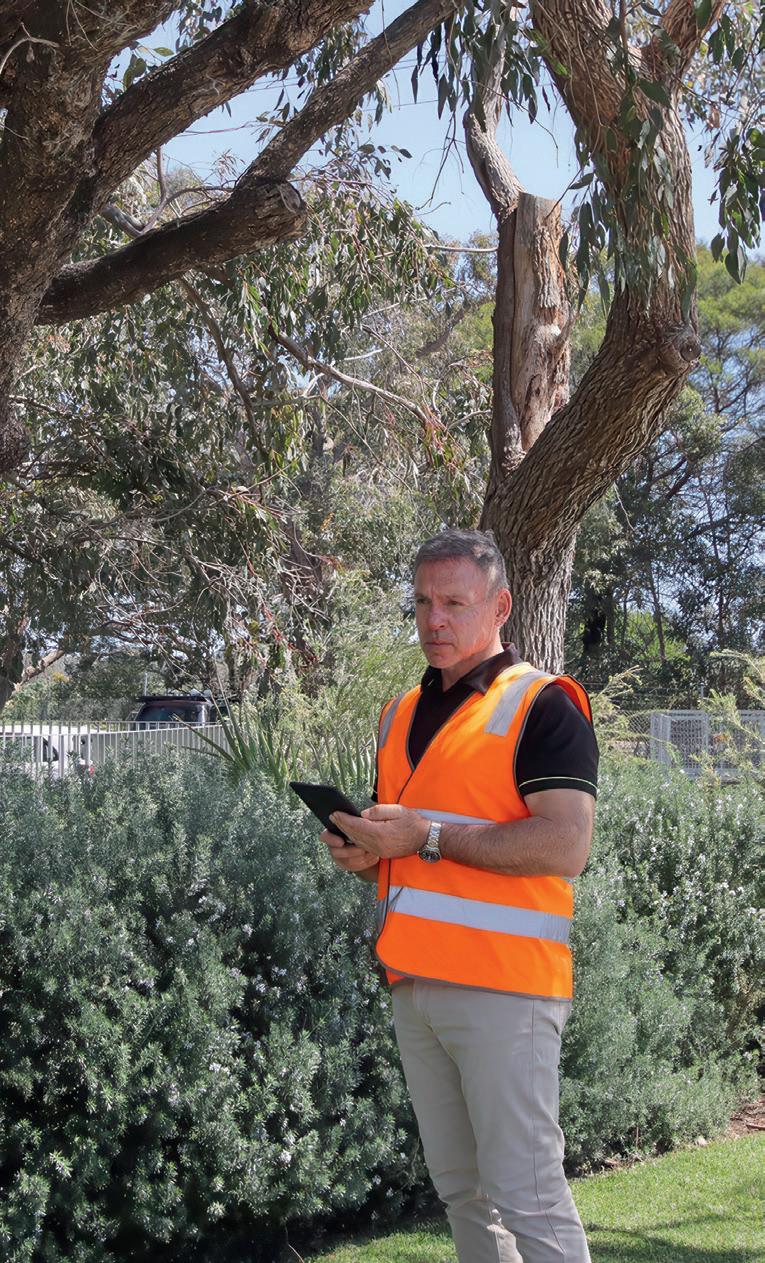

At the 2025 National Arboriculture Conference gala dinner held at the National Arboretum in Canberra, three outstanding individuals were recognised for their remarkable contributions.
Dave Crispin received the Arboriculture Advocacy Award, presented to an individual or business that has contributed to raising awareness and understanding of issues in the arboriculture industry.
“It’s not often I’m lost for words, but this was one of those occasions,” said Dave. “Advocacy is championing something you truly believe in. I truly believe in our association, ArbWest, the arboriculture industry and what we stand for.
“ArbWest has achieved several positive outcomes these past few years, including managing to turn our arboricultural traineeship into an apprenticeship, so those who finish the three years achieve a trade qualification.
“Working closely with local governments to help combat Polyphagous Shot Hole Borer (PSHB) and running a two-day seminar at the prestigious WACA ground for over 100 delegates were just a couple of the projects we’ve tackled. This award speaks to all the hard work our committee has put in. I was fortunate
enough to have my name put forward.”
The award recognised Dave’s outstanding influence on the arboriculture community through his work with community groups, his advocacy for urban canopy cover, and his inspiring role at school career
events. His most significant contribution, however, has been his research into the devastating PSHB (Euwallacea fornicatus) and his leadership in working with the Department of Primary Industries to combat the pest in Western Australia.
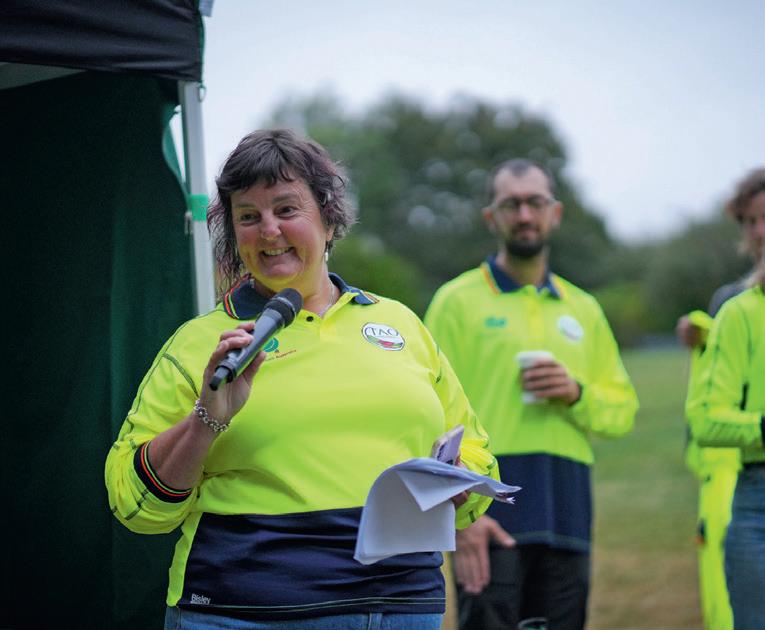

As Vice Chair of the Tasmanian Arboricultural Organisation (TAO), Rach Denholm, recipient of the Invaluable Volunteer Service Award, has been a driving force since 2018, leading events such as the Annual Tree Climbing Competition and Arb Field Day. Her advocacy for professionalism, inclusivity, and mental-health awareness in arboriculture has made a lasting impact.
“It’s a huge recognition of the work volunteers do across the country and the work I’ve done in Tasmania,” Rach said.
“Why do I bother to volunteer when I already have a business to run and a busy life?
“Because there are so many people calling themselves arborists without adequate training and it’s important to support the people who are working professionally.”
Rach also spoke about an issue close to her heart. “The suicide rate in Australia is too high, especially among men, and this is a male-dominated industry. I want
to support bringing people together to network, have fun and talk about mental health. Suicide happens when people feel disconnected, lose hope, and lose their connection to the community, and of course there are many other issues like finances and job satisfaction. That’s why it’s so important for everyone in our industry to feel connected and included.”
The Diversity and Inclusion Award is presented to an individual or business that has championed diversity and inclusion in the arboriculture industry and contributed to positive change.
Tyla Bickley played a leading role in organising the 2024 Women’s Climbing Workshop, which empowered female arborists across Australia. Her award recognised the event’s success in building skills, confidence, and networks, while also celebrating her ongoing dedication to diversity in the industry.
From securing sponsors to managing logistics and coordinating trainers and attendees, Tyla’s dedication ensured the event’s success. The workshop empowered female climbers by providing them with the confidence, skills, and support to take their abilities to the next level. Seven participants went on to compete in the local ACT Tree Climbing Competition, and the 2025 Australian Tree Climbing Championship boasted a record number of female entrants.
Tyla said, “I feel very honoured. Being the one to receive this award feels like evidence of all the hard work some very inspiring women have done in the past couple of decades for the Australian arboriculture industry. It’s their mentorship and dedication to building community that enabled me to begin, and see through, an apprenticeship three years ago. Hosting the Women in Arb climbing workshop last year was a reflection of how impactful their support has been for me.”
The next National Arboriculture Conference will take place in Hobart, Tasmania, 12 - 14 April, 2026. The National Industry Award winners will be announced at the gala dinner on Monday.
This premier industry event is themed ‘Enhancing Tree Biomechanics and Effective Canopy Management’ and will feature international and local presenters, networking opportunities, the ATCC, the New Arborist of the Year event, tree tours and, of course, the celebration of the 2026 Award winners.
Attending industry conferences and events is one of the most valuable investments arborists can make in their professional growth. These gatherings provide access to the latest research, techniques, and innovations shaping arboriculture. Just as importantly, they bring people together, creating space for networking, collaboration, and the sharing of ideas across regions and specialties.
Mark your calendar and visit the Arboriculture Australia website (trees.org.au) to register for the 2026 conference and start preparing your nomination for the 2026 National Industry Awards.
The TTIA’s Brian Beecroft underlines some important points regarding ‘employee choice about casual employment’ and the Right to Disconnect which now apply.
As of August 26, 2024, the statutory Right to Disconnect and the casual ‘employee choice pathway’ apply. Image: Pinklife/stock.adobe.com
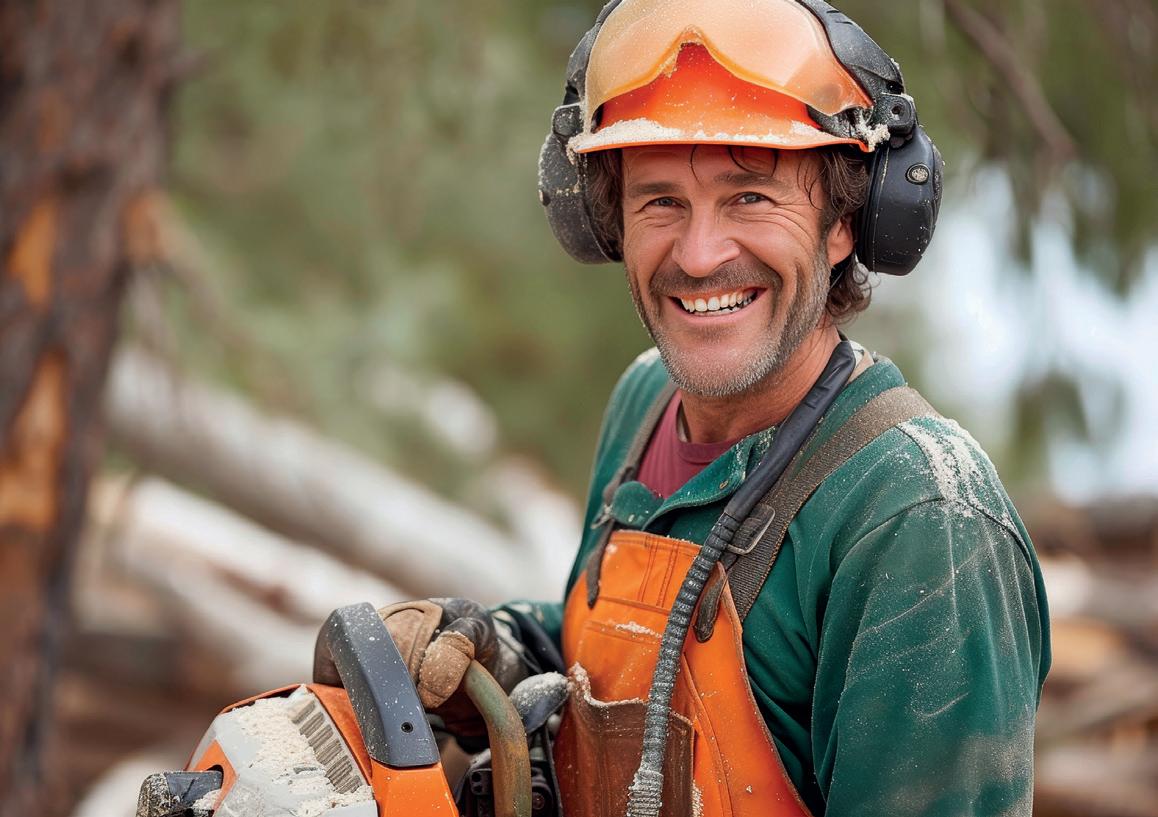
The new Right to Disconnect and changes to casual conversion introduced as part of the Fair Work Legislation Amendment (Closing Loopholes No.2) Act 2024 (the Loopholes No. 2 Act) started applying to employers other than small businesses from August 26, 2024.
As of August 26, 2025, the statutory Right to Disconnect and the casual ‘employee choice pathway’ (dealing with conversion from casual to full time or part-time employment) apply to small-business employers and their employees. A recap of these entitlements and obligations is provided as follows:
• casual conversion provisions previously in the NES have now been replaced with the new ‘employee choice about casual employment’ provisions.
• Casual employees who have worked with their small-business employer for 12 months, and who believe their employment relationship no longer meets the (new) definition of ‘casual employee’ in the Fair Work Act may give their employer written notice that they choose to become full-time or part-time. If the employer receives this notice from an employee, the employer must first consult with the employee and then provide them a
written response either accepting or rejecting the notification within 21 days.
An employer may choose not to accept the notification if:
• having regard to the (new) definition of casual employment and the employee’s current employment relationship with the employer, the employee still meets the requirements of that definition.
• there are fair and reasonable operational grounds for not accepting it – such as that it would require substantial changes to the way work is organised or that substantial changes to the employee’s terms
and conditions would be reasonably necessary to ensure compliance with full-time or part-time provisions in the applicable Fair Work instrument.
• accepting the notification would result in the employer not complying with a recruitment or selection process required by or under a law of the Commonwealth or a state or a territory.
If the employer doesn’t accept the notification, the written response is required to specify the reasons for the employer’s decision.
If the employer accepts the notification, the written response is required to specify whether the employee is changing to full-time or part-time employment, the hours of work that will apply after the change takes effect, and the day the change takes effect (which will by default the first full pay period after the employer’s response is given unless the employer and employee agree to another day).
An employee cannot give their employer written notification to convert to full-time or part-time employment if they have already received a
If there’s a dispute between an employer and employee about the Right to Disconnect, a party may refer the dispute to the FWC. Image: Fokasu Art/stock.adobe.com
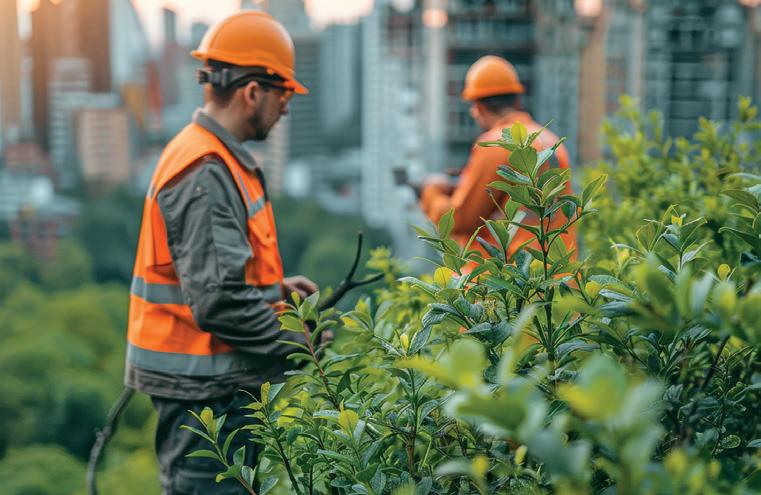
response from the employer rejecting a notification within the previous six months.
The ‘employee choice about casual employment’ provisions do not:
• require an employee to change to fulltime or part-time employment
• permit an employer to require an
While the Right to Disconnect provides an employee the right to refuse afterhours contact, it doesn’t make unlawful an employer’s contact or attempted contact. Image: Centric/stock.adobe.com
employee to change to full-time or part-time employment
• require an employer to increase the hours of work of an employee who gives a notification to change to fulltime or part-time employment.
If there is a dispute between the employer and an employee who has provided a notification and attempts to resolve the dispute at the workplace
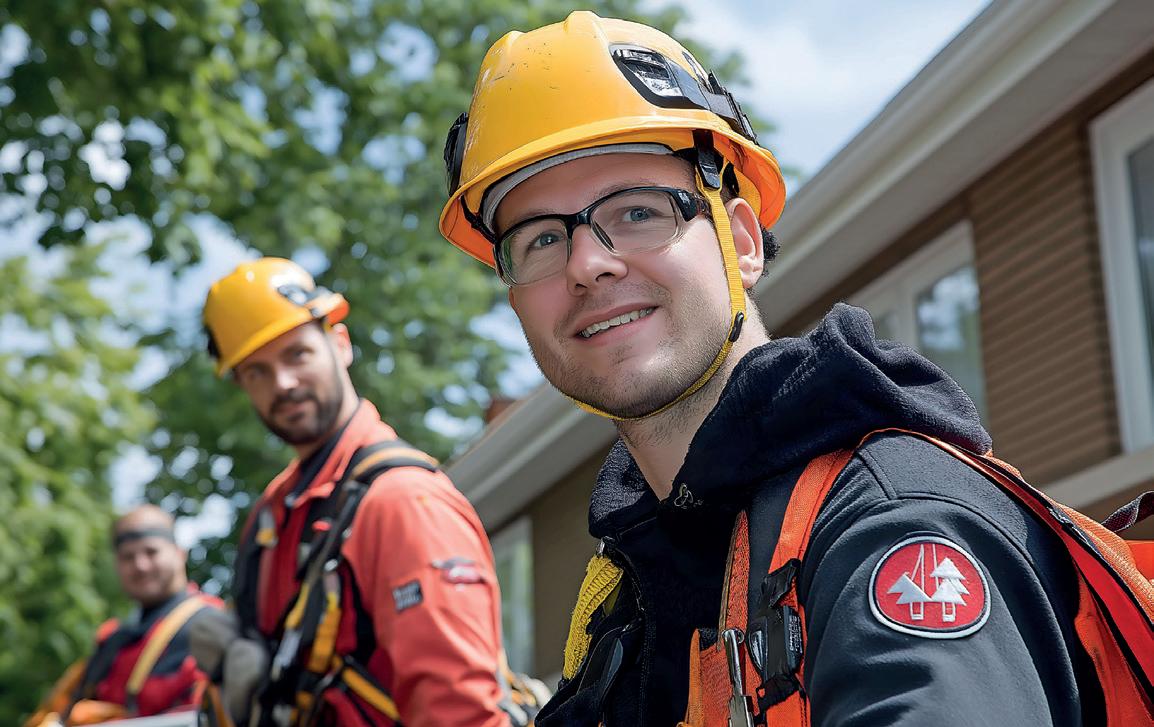
An employee’s role will need to be considered, along with personal circumstances. Image: rh2010/stock.adobe.com
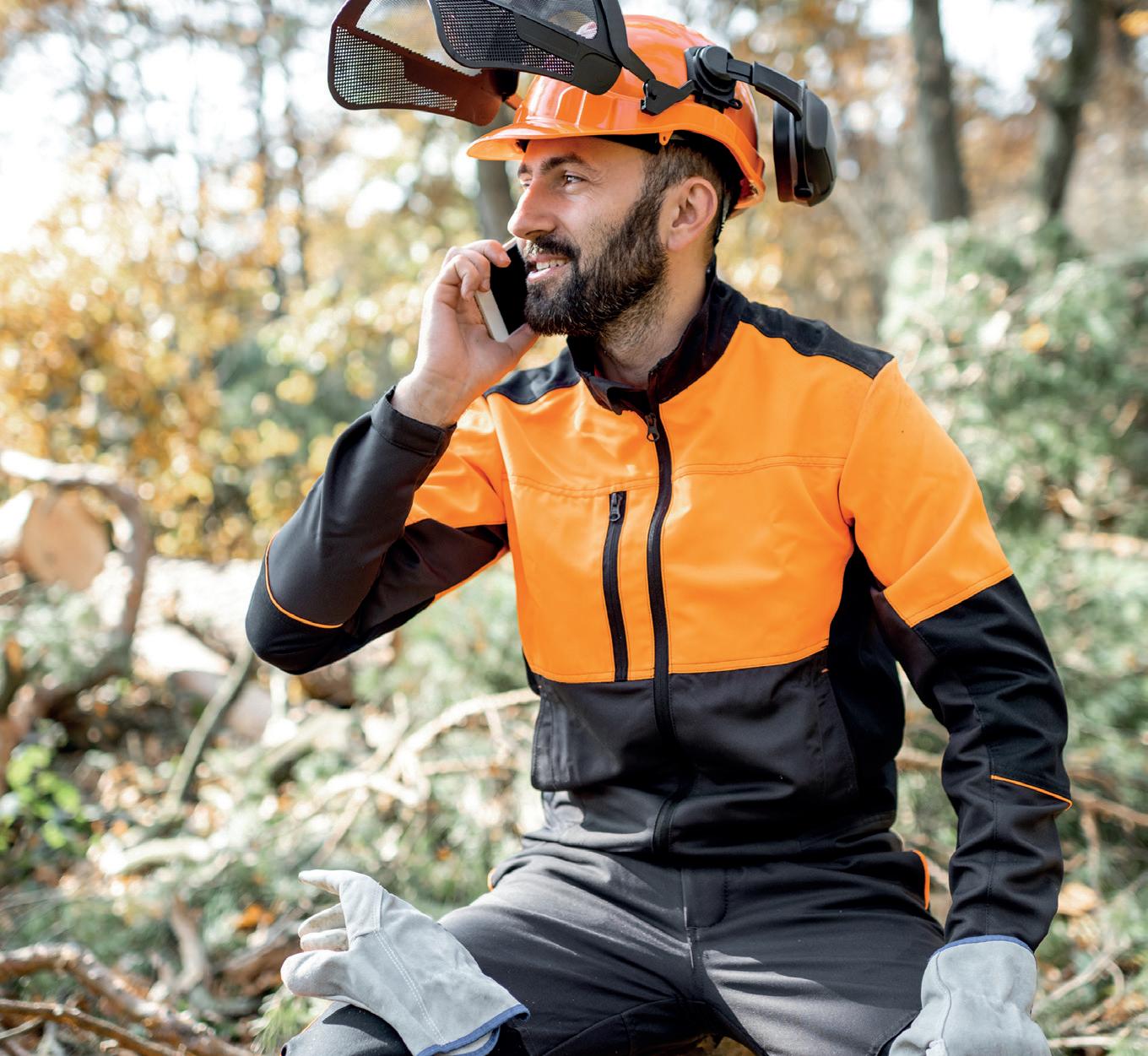
level have occurred but have been unsuccessful, a party may refer the dispute to the Fair Work Commission (FWC). Where the FWC has resolved a dispute about a notification, the employee cannot, within the next six months, provide their employer with another notification.
An employer must not do any of the following in an attempt to avoid any right or obligation under the ‘employee choice about casual employment’ provisions:
• reduce or vary an employee’s hours of work
• change the employee’s pattern of work
• terminate an employee’s employment.
The Right to Disconnect includes the following:
• an employee may refuse to monitor, read or respond to contact, or attempted contact, from an employer outside of the employee’s working hours, unless the refusal is unreasonable
• an employee may refuse to monitor, read or respond to contact, or attempted contact, from a third party if the contact or attempted contact relates to their work and is outside of the employee’s working hours unless the refusal is unreasonable.
In determining whether a refusal as noted above is unreasonable, the following are to be taken into account:
• the reason for the contact or attempted contact
• how the contact or attempted contact is made and the level of disruption the contact or attempted contact causes the employee
• the extent to which the employee is compensated (including nonmonetarily) to remain available to perform work during the period in which the contact or attempted contact is made; or for working additional hours outside of the
employee’s ordinary hours of work. The nature of the employee’s role and the employee’s level of responsibility should also be considered, as should the employee’s personal circumstances (including family or caring responsibilities).
While Right to Disconnect provides an employee the right to refuse to monitor, read or respond to contact or attempted contact, it does not make unlawful an employer’s contact or attempted contact of an employee (unless such contact or attempted contact occurs in breach of an order by the FWC).
Modern awards now also contain Right to Disconnect clauses. Some modern awards include clarification about circumstances in which an employer is not prevented from requiring an employee to monitor, read or respond to contact or attempted contact, such as (depending on the modern award) when the employee is being paid standing by time.
If there is a dispute between the employer and an employee about the Right to Disconnect and attempts to resolve the dispute at the workplace level have occurred but have been unsuccessful, a party may refer the dispute to the FWC. The FWC can make orders in resolution of a dispute where either or both of the following apply:
• an employee has unreasonably refused to monitor, read or respond to contact or attempted contact and
there is a risk the employee will continue to do so;
• an employee’s refusal to monitor, read or respond to contact or attempted contact is not unreasonable and there is a risk that the employer will take disciplinary or other action against the employee because of the employer’s belief that the refusal is unreasonable, or will continue to require the employee to monitor, read or respond to contact or attempted contact despite the employee’s continued refusal. Such orders can include:
• preventing an employee from continuing to unreasonably refuse to monitor, read or respond to contact or attempted contact
• preventing the employer from taking disciplinary action against an employee where it arises from the employee’s not unreasonable refusal to monitor, read or respond to contact or attempted contact
• preventing the employer from continuing to require the employee to monitor, read or respond to contact or attempted contact where their refusal had not been unreasonable.
TTIA will deal with these issues in upcoming IR Briefings, which will be held in various states in October and November. Dates and venues can be accessed by contacting the association on (02) 9264 0011 or by emailing ttia@ ttia.asn.au.
The employer must first consult with the employee and then provide them a written response “ ”

Brian

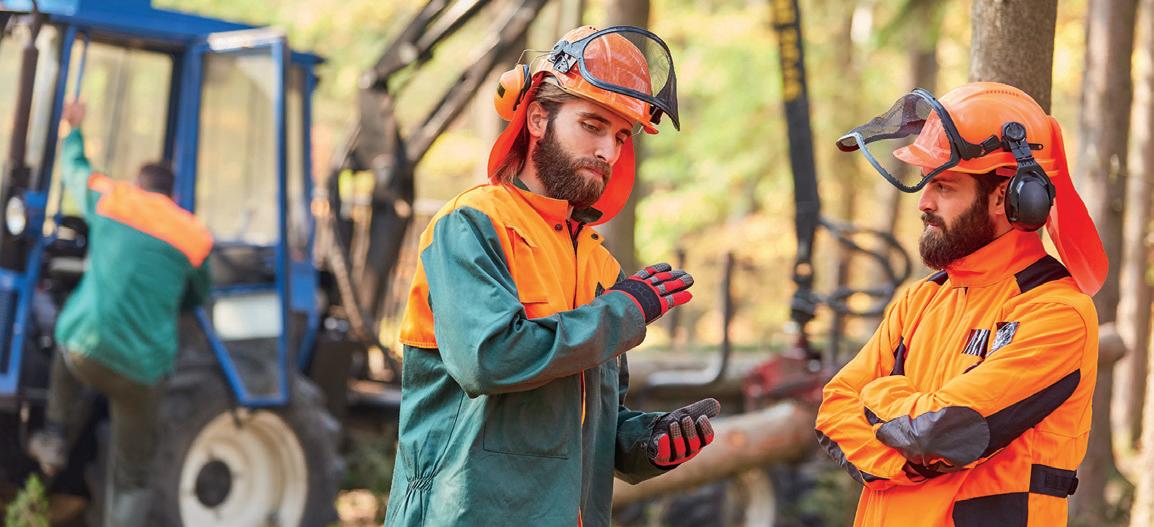
There’s a lot to report from the offices of the TCAA this issue.
The achievement of now having apprenticeships for Cert 3 arborists in NSW is a big one, and TCAA Treasurer and Compliance Officer Dan McArdle was instrumental in meeting with ITAB NSW officers to make this a reality.
Apprentices will be indentured for 36 months, and apprenticeships were gazetted on August 15, 2025. All accredited training before that date will have to merge with the scheme, including TAFE training, which will be automatically transferred.
The apprenticeship award will have support from government as it equalises with other trades. Current courses should be renewed, and the next round of tabled assessments will provide an opportunity to streamline and them and address any difficulties.
You can expect the TCAA executive to have input on the process.
The TCAA has also facilitated the Visual Tree Risk Assessment (vTRA) qualification to be fully utilised as part of licensed membership. The TCAA has negotiated a licenced agreement contract with Bill Sullivan at MS Contracting, who developed The Matrix vTRA, to supply the contract and training material. For members not currently using this method, conversion can begin as early as November.
The vTRA system is the only Australian-created risk assessment system, utilised and practised within local government councils, government schools, colleges, hospitals, universities, villages, and of course, the coroner’s court. vTRA has my backing as an industry senior for being a relevant, repeatable assessment tool that provides valid recommendations. It’s the only method that ties into the AS/NZS ISO 31000 Risk Management – Principle and Guidelines document to provide governance for risk reduction or aversion.
All other assessment methods appear to state this but not review it within their assessment.
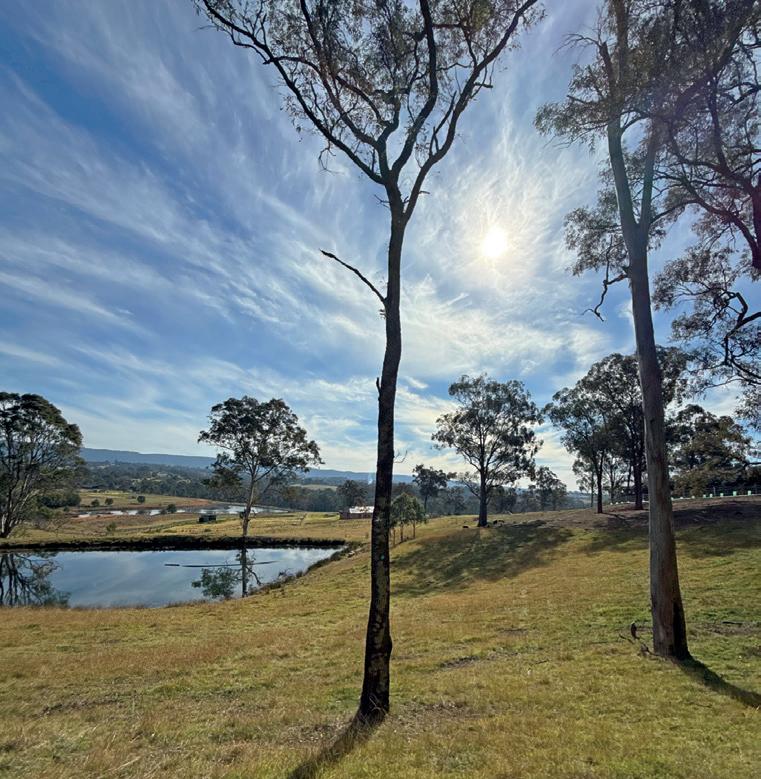

TCAA members have also been presented with Arboristry in Australia, a compendium of articles written by myself and senior arborists to assist AQF 5 arborists. Topics run from the role of the arborist, TCAA past presidents, ethics, philosophy and on to arboricultural tests. The book was four years in the making, and researching the topics has increased experience within the TCAA cohort.
The TCAA would like to share and discuss any of the topics covered on these pages. If your interest is piqued you can email admin@tcaa.com.au with any questions or points of view.
With the AGM out of the way, the team’s new leaders should be welcomed, including Greg Major from TREX Media and Julian Parry from Arbor Pride. Other board members are Murray Bolan of Bolan’s Trees and Jeff Hunt of Prompt Trees Services. Carson Smith of Smith Chips and Stumps is vice-president, with Dan McArdle of McArdle & Sons Arboricultural Services as treasurer and compliance officer, Bruce Smith TCAA secretary from The Tree Surgeon at Orange and myself, Jim McArdle, president for another term.
In addition to these initiatives, the association’s current executive is visiting AQF 3 arborists at TAFEs to assist in

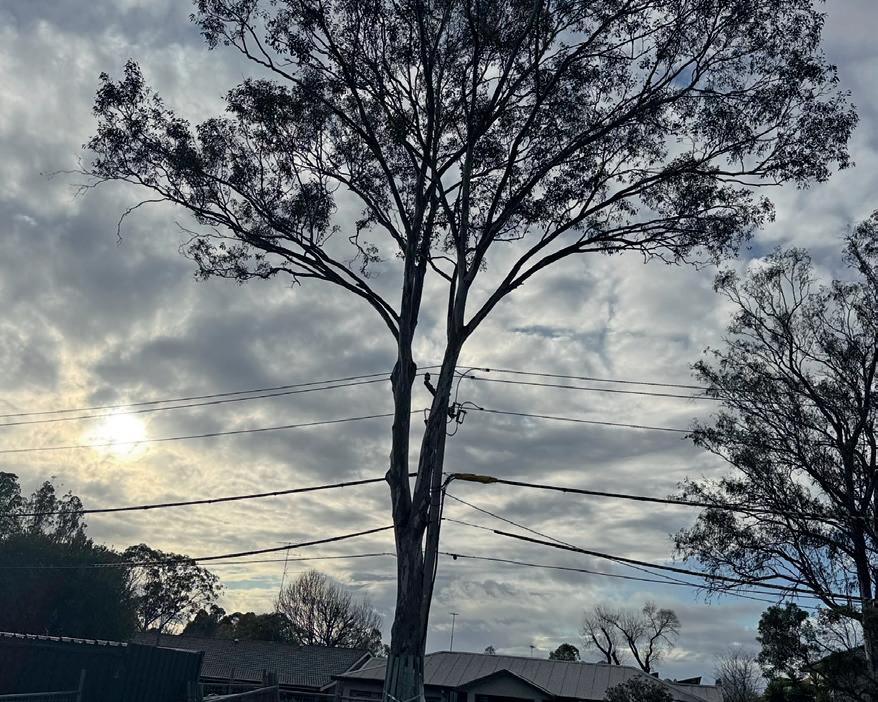
standardising the profile of leading hands in their professional settings. Carson Smith is assisting at Richmond, with David Hendy, Greg Major and Wayne Hooper at Ryde. This will assist apprentices in the new industry role.
The TCAA executive will support the industry vision, ‘A tree is known by its fruit’, which encompasses the business of working within arboristry. A good business produces quality green careers and quality processes. In the TCAA, the profile of a successful arborist business comes from the business’s identity and from training, education, knowledge, and of course, safety, experience and trust.
When a team of like-minded arborists gets together there’s always:
• camaraderie with the current program
• networking and sharing ideas
• canvassing
• all the wonderful stories that make you laugh or cry (of course).
The industry has lost a wonderful arborist in Aaron Erbacher after his short battle with cancer. We should all reach out to Aaron’s family and offer our thoughts and condolences.
Please, look after your health.
With regard to developments in Better Industry Practices (BIPs), we’re very grateful to last year’s committee for representing the TCAA at departmental,
mayoral and ministerial meetings.
Dan McArdle sat through numerous meetings with SafeWork Australia on the Code of Practice, ITAB, Industry Skills Council, and Skills Insight. He deserves an Order of Australia medal –or a Skippy badge. Carson Smith sat in departmental meetings and with the current facilitators. Murray Bolan met the two mayors and wrote on illegal land clearing and tree removal to the Honourable Chris Mins MP.
Murray Bolan is probably the longestserving member and was at the inauguration of the TCAA those many years ago. He’s also done a Hamish and Andy stint which is very cool. (Well done, Muz). Jeff Hunt, an avid manager and surfer, leads a balanced life from which we can all learn.
The TCAA vision is tied in with caring for the greenscape and monitoring and spending time in arboristry. Arborists are closely aligned with horticulturalists, but we’re specialised. We aren’t construction workers, and we shouldn’t accept being classed and legislated as such. We’re arborists, and we must guide our teams to learn best industry practices.
My father often said a new employee always made the boss work harder, but an old employee makes the boss work smarter. The TCAA will bring further help to the AQF 3 to AQF 5 transition with a mentorship program of six weeks scheduled to start in early January 2026. Employers doing AQF 5 will be supported within the program, and those with an interest should let the association know by emailing admin@tcaa.com.au.
Get $150 back for planting a native tree in your own backyard.
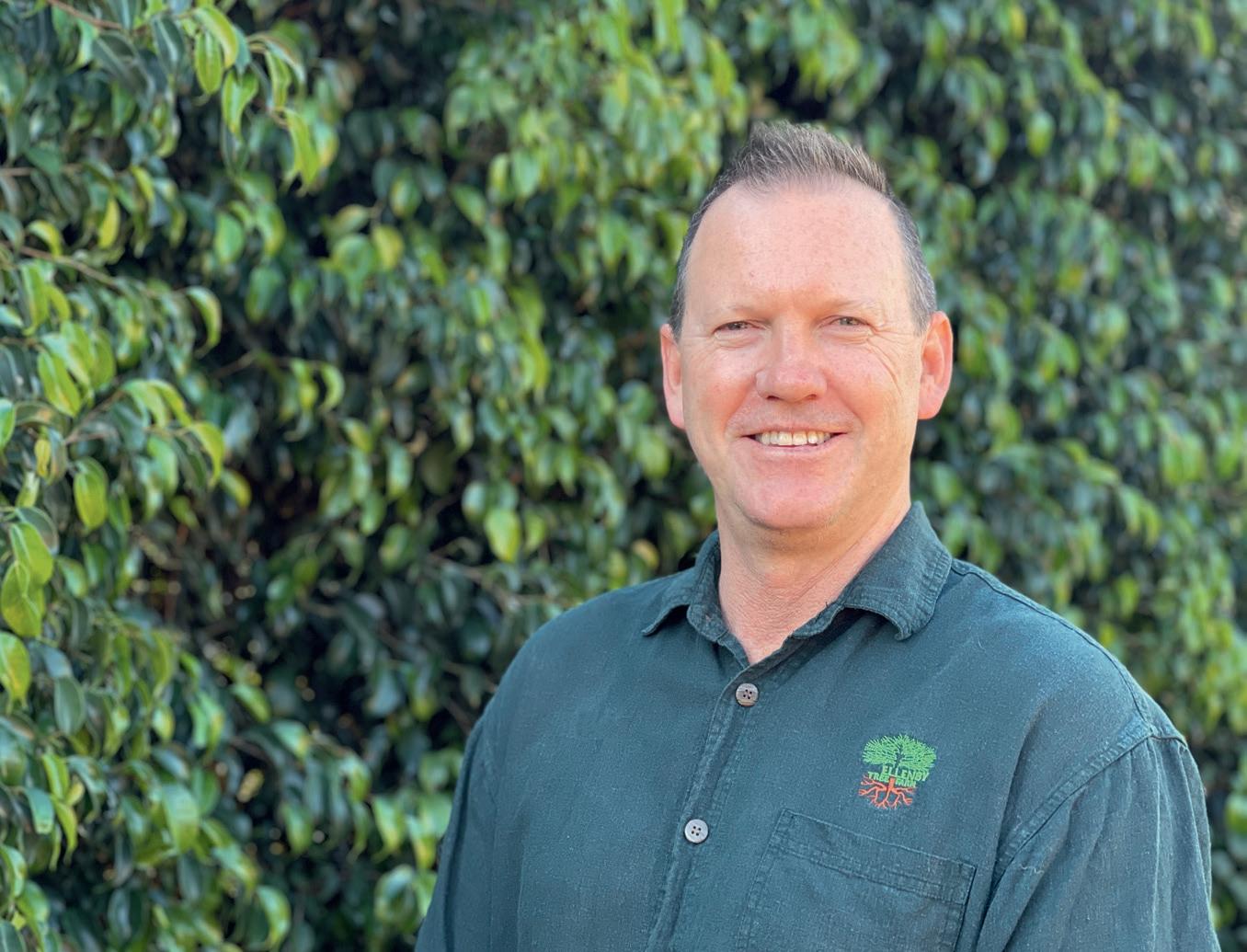
The WA Government has recently launched a residential rebate initiative aimed at encouraging the planting of native trees by Western Australians. An annual allocation of 10,000 rebates is available, each valued at $150 per WA resident.
ArbWest asked Craig Woodroffe, General Manager at Ellenby Tree Farm, what this meant for the state.
“The TREEBATE initiative is a fantastic opportunity for Western Australia,” he said. “It really helps shine a light on the importance of our urban tree canopy, which has been steadily declining, particularly in residential areas.
“One of the key benefits is the increased public awareness around this issue. Many people don’t realise how much canopy we’ve lost in recent years, especially in our suburbs. TREEBATE encourages residents to take action where it’s most needed – right in their own backyards.
“It also supports more climateresilient planting as it focuses on native
Australian tree species that are naturally suited to WA conditions. That’s a smart, sustainable move for the long term.”
What native trees does Ellenby Tree Farm offer, and which are the most
popular among customers?
Craig explained: “At Ellenby Tree Farm, we grow over 200 different species and cultivars of Australian native trees, with sizes ranging from one metre to 10 metres. There’s something for almost every landscape and garden size.”
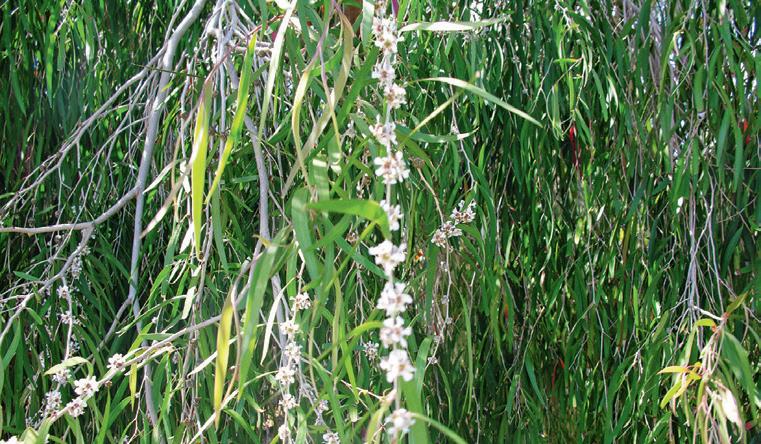
Some of the most popular varieties at the tree farm include:
• the iconic WA Peppermint tree (Agonis flexuosa)
• Corymbia ficifolia – known for its striking red and orange flowering gums
• Brachychiton cultivars, such as the Flame Tree and Bottle Tree, which are both visually stunning and hardy.
“These trees not only enhance the beauty of residential gardens but also contribute meaningfully to the broader goal of increasing urban canopy cover,” said Craig.
Here’s how you take advantage of the offer:
• buy an eligible native tree from a WA nursery (like Ellenby)
• plant it in your garden, then
• claim your rebate via the ServiceWA app.
Just keep your receipt and a photo of the plant label.
Rebates are funded as part of the $16.9 million Urban Canopy Growth Package, with a goal of planting one million native trees by 2035 and reaching 30 per cent urban canopy cover in Perth by 2040.
To learn more, go to wa.gov.au and use the ‘What can we do for you today’ panel to search for ‘treebate#’, or get in touch with ArbWest at arbwest.com.au


Another
In July, the Queensland Arboricultural Association (QAA) hosted its annual freestyle climbing competition, Freestyle 2025, at the Mt Tamborine Showgrounds. The event drew arborists and tree-care professionals from across Queensland and northern NSW, offering a day of highenergy competition, camaraderie, and community pride.
Unlike traditional climbing events, freestyle competition challenges participants to balance speed, technical precision, and creativity. The Mt Tamborine course was purpose-built to test adaptability, showcasing the artistry and athleticism that define arboriculture at its best.
The top five competitors delivered an outstanding display of skill, with just seconds separating their times. Ryan Robinson took first place with a lightningfast 01:20.94, followed closely by Shay Williams with 01:24.56. Ryan Roberts secured third at 01:45.37, with Nathanael Parlane in fourth on 01:50.29, and Rory Haydock completing the top five at 02:04.75.
The Spirit of the Competition was shared between Jess Hamer and Mata Jonassen, who both embodied the supportive, encouraging, and inclusive values at the heart of the QAA.
The amateur division was a highlight of the day, revealing the promising talent emerging in the next generation of arborists. Eban Weaver-Wampl, competing in his first event, impressed by advancing to the semi-finals. He was joined by Ben Draper and Brayden Hughes, who each demonstrated determination and potential for future success.
The competition also celebrated the achievements of female climbers. Jess Hamer and Ella-Beth Bonney brought grit and skill to the course, underscoring the importance of diversity in strengthening the industry’s future.
The success of Freestyle 2025 was made possible through the dedication of sponsors, volunteers, and organisers. The QAA extends sincere thanks to its major event sponsor, Vermeer, whose continued support ensures these industry-defining events can thrive. Gratitude also goes to
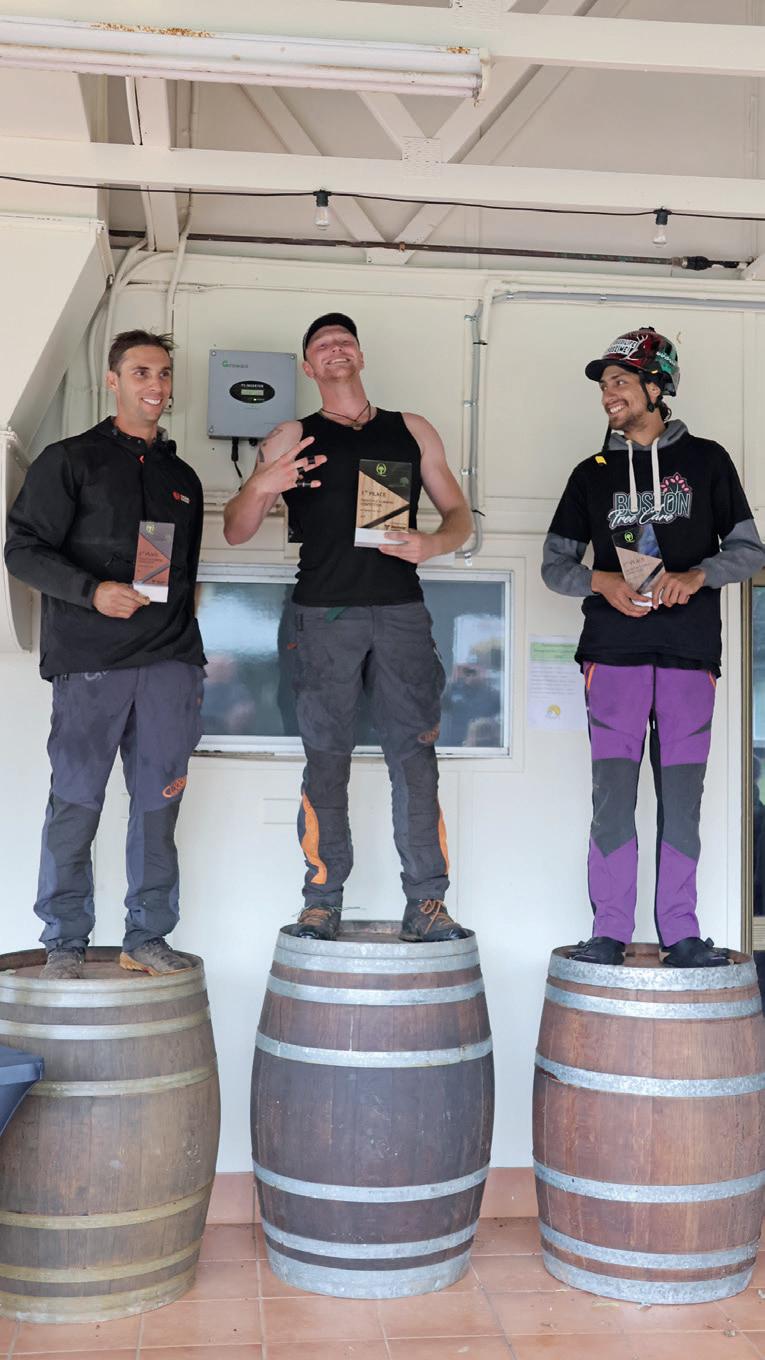
trade sponsors Davos Cranes, Shockload Bags, and Stihl Shop Nambour for their vital contributions.
Behind the scenes, countless volunteers ensured the day ran seamlessly. Special acknowledgement goes to timekeepers Adam Cozzitorto, Tim Scott, and Jack Farrell for their precision, and to Jamie and Terry Boston for their tireless work in course preparation. Zane Wedding, who travelled to support the event, played an invaluable role in both building the course and delivering live commentary alongside Jamie Boston.
For those unable to attend, the highlights are available on the QAA YouTube channel, featuring a new commentary format with Zane and Jamie that captures the energy and atmosphere of the day.
With Freestyle 2025 complete, the QAA continues its mission to lead the arboricultural industry through education, advocacy, and professional development. Upcoming opportunities include workshops in QTRA, TRAQ, and PlanIT Geo, designed to strengthen technical knowledge and advance best practice across the sector.
Since 1992, the QAA has remained dedicated to preserving, protecting, maintaining, and enhancing the environmental and recreational value of trees while supporting the professionals who care for them. Events like Freestyle 2025 are more than competitions. They’re celebrations of skill, community, and the values that bind the industry together.
To every competitor, sponsor, volunteer, and supporter who contributed to the success of Freestyle 2025, the QAA offers its sincere thanks. The association looks forward to welcoming the community again at the next event, continuing to grow an industry defined by professionalism, passion, and pride.
Freestyle competition challenges participants to balance speed, technical precision, and creativity. Image: TF
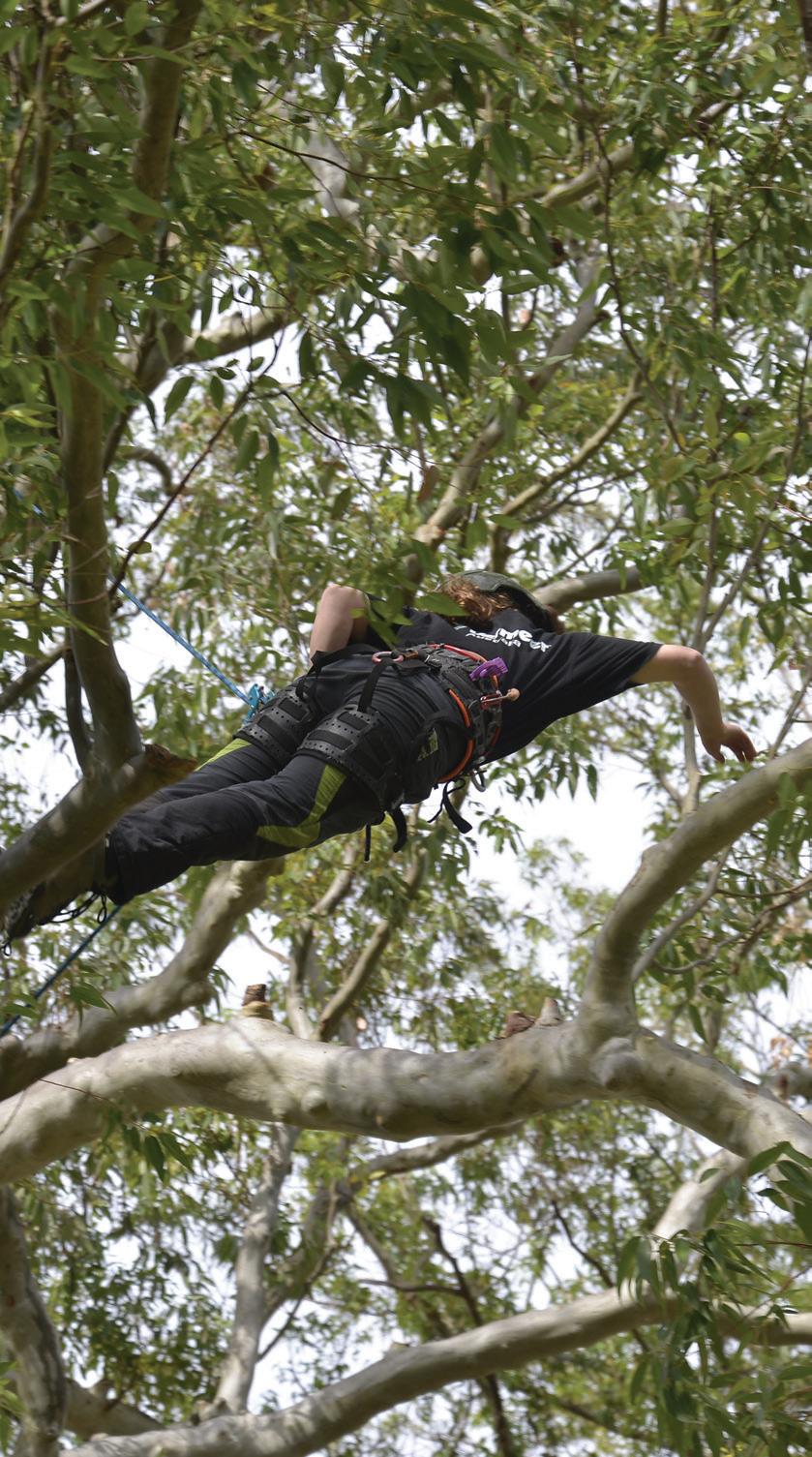
As part of the QAA’s ongoing commitment to highlight members of the QAA Approved Register, this issue features Independent Arboricultural Services (Approved Contractor).
• Business name? Independent Arboricultural Services and Arb Supplies.
• Years of operation? Commenced in 2007.
• Business philosophy? To provide a prompt, insured, independent arborist reporting and consulting service to the
The course was purposebuilt to test adaptability, showcasing artistry and athleticism. Image: TF
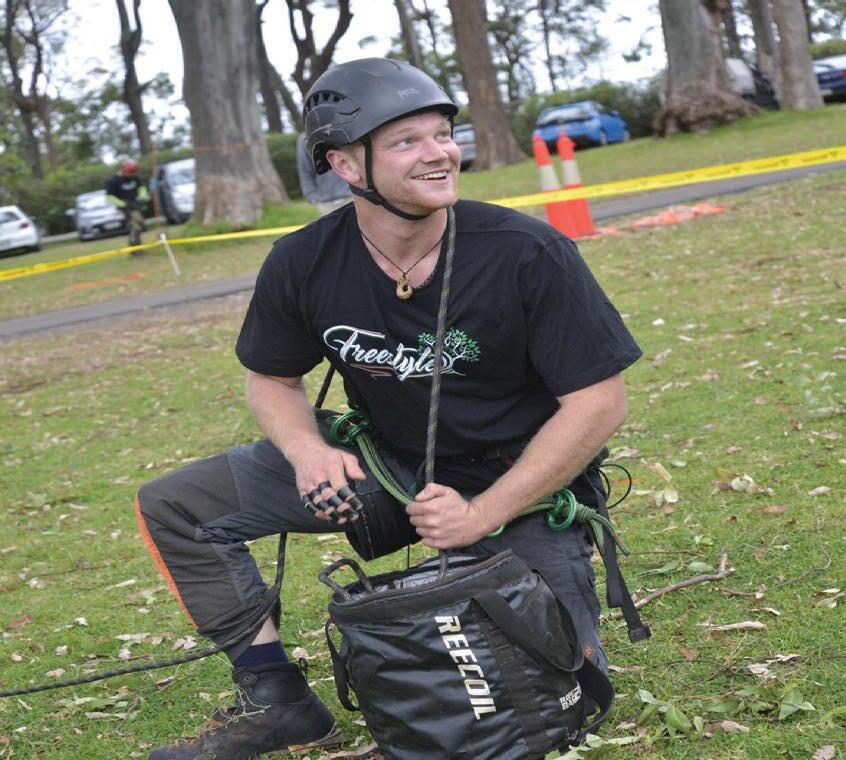


private, corporate and government sectors, with qualified arborists providing reports and advice to meet customers’ requirements.
• Yellow or green? Green.
• Passion that motivates you in business? We thrive on finding solutions for our customers and seeing our staff develop and grow within the arboricultural industry.
• What would you like the general public to better understand about the industry? Ongoing education into the role and benefits of trees.
• What would you like the state government to better understand about the industry? The significant size of the industry and the benefits it brings to the community, and
the need for further training and development of people working in the industry.
• If you could magically change the industry overnight, how would that look? We’d see the continual development of the industry, standards, safety, and increased understanding of the role and benefits of trees.
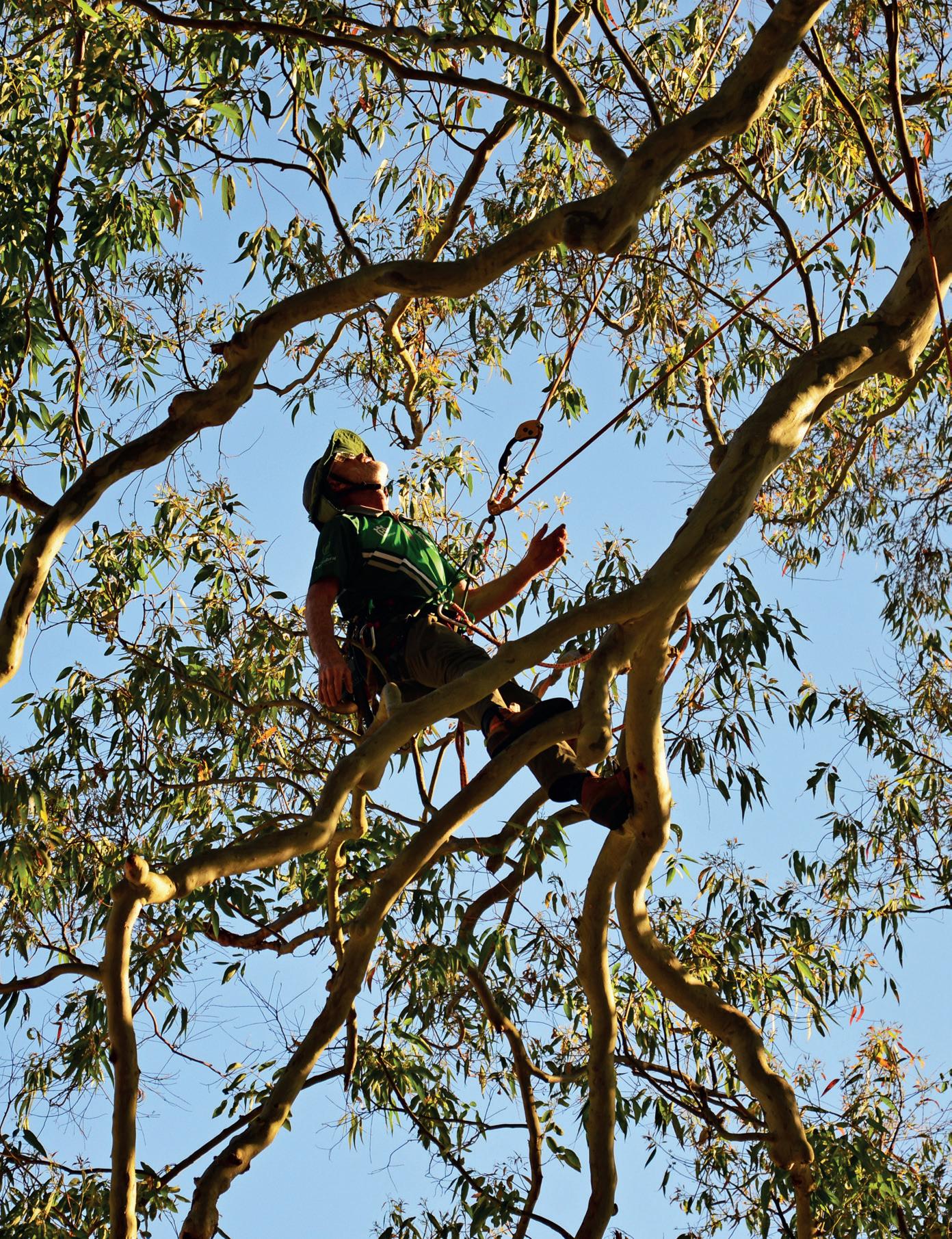


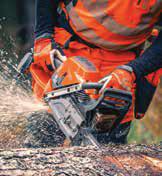


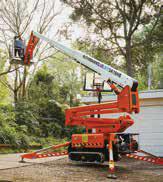
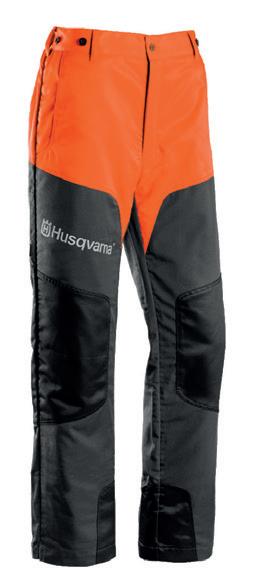


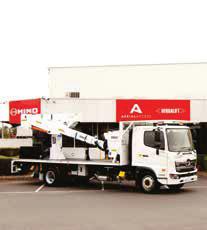





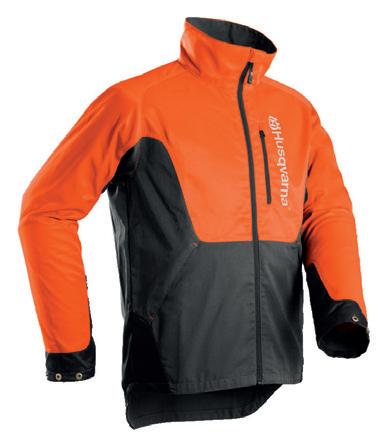





Just as a well-fitted harness ensures safety up a tree, the right advice keeps you financially safe when life does not go to plan.
Image: Iryna/stock.adobe.com
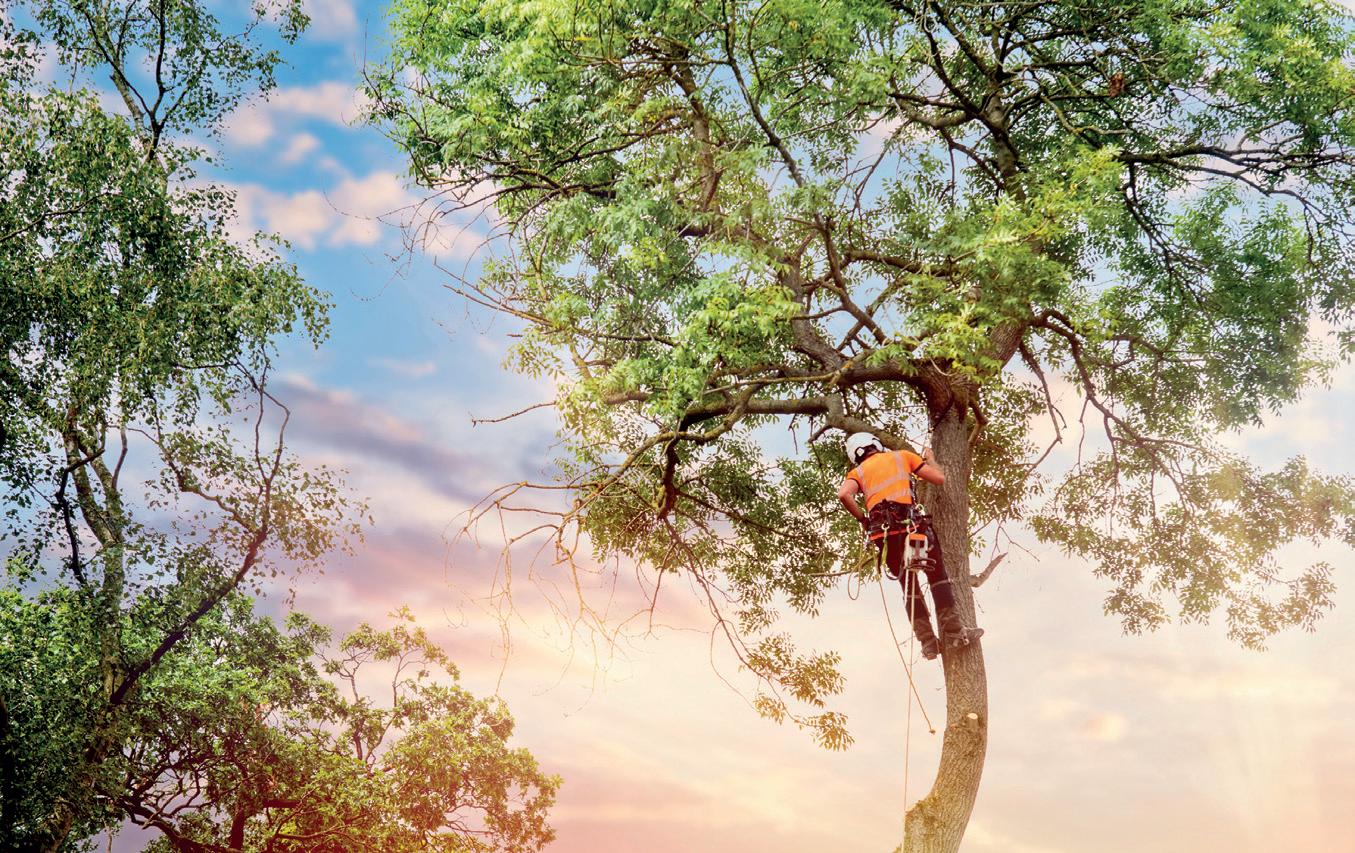
Being an arborist is rewarding work, but it also comes with risk. Days are spent climbing trees, working at heights, and using machinery. Just as you would never work without a harness or helmet, it’s equally important to think about your financial safety net. That is where the right advice makes all the difference.
Advice is not about picking a product off the shelf. Surety Life starts by asking the important questions:
• Why is your income important?
• Who relies on it?
• What would happen if it suddenly stopped?
Surety Life maps your income and expenses to understand what money would be needed for everyday living costs, mortgage repayments or rent, and long-term commitments. From there, the company builds a strategy, one that includes what should be protected, for how long, and in what form.
Only once the numbers are clear does Surety Life research policies and compare options. That way, the product serves the plan, not the other way around.
There are often ‘general advice’ warnings in insurance brochures or online. This means the information has not considered your situation and may or may not be right for you.
‘Personal advice’ is different.
As licensed financial planners, Surety Life is legally required to understand your circumstances and recommend strategies tailored to you. Advice is documented, reasoning explained, and you receive protections under the law if something is not right.
To be licensed, financial planners must meet strict education standards, ongoing training requirements, and comply with a
professional code. For you as a client this means:
• Legal protection – clients have access to formal complaint and compensation avenues if advice is inappropriate.
• Quality control – advisers must act in your best interests, not just sell a product.
• Accountability – all recommendations must be backed by documented reasoning.
• Many arborists approach Surety Life needing proof of income protection just to get on site. But compliance is only the beginning. Real advice looks beyond the paperwork and ensures:
• Income protection benefits match your budget and living costs.
• The right payout structures are in place for permanent incapacity or death.
• You and your family know what financial support will be there if life takes a turn.
Case study: Justin and Ruby, arborist family
Justin, a qualified arborist, initially approached Surety Life because he needed an income-protection certificate for work. Like many in his field, he thought insurance was just another compliance requirement.
When he and his partner Ruby sat down, Surety Life asked deeper questions. What would happen if his income stopped? How would they manage the mortgage, school fees, and day-to-day living costs?
The answers revealed a bigger picture: a $550,000 home loan, a $275,000 investment-property loan, two young children, and a lifestyle built on two incomes.
The advice Together a protection strategy was designed that included:
• increasing income protection inside

Being an arborist is rewarding work, but it also comes with risk. Image: kardaska/ stock.adobe.com
super to replace 75 per cent of their salaries
• New Life and TPD cover to clear all debts and secure the children’s future.
• trauma cover for both, plus child trauma cover, to provide funds if serious illness struck.
• using concessional contributions through super to reduce out-of-pocket costs.
Instead of simply ticking a compliance box, Justin and Ruby walked away with a comprehensive plan. They knew their debts would be cleared, their income replaced, and their children protected if life took an unexpected turn. That
PROTECTING THE PEOPLE BEHIND THE PROFESSION
Working as an arborist involves daily exposure to significant risks — from operating at heights and using heavy equipment to providing critical advice and assessments. Yet many professionals in the industry remain underinsured or unaware of the protection available.
At Surety Life, we provide tailored life insurance solutions designed specifically for arborists. Whether you're self-employed or part of a larger team, our expertise ensures your policy meets the needs of your profession and personal circumstances.
We understand the complexities of your work and offer guidance to ensure your financial security — and that of your family or business — is well protected.
Because your life is as important as the work you do.

peace of mind came not from buying a product, but as the result of tailored advice.
The bottom line
Insurance is a tool. Advice is the blueprint that tells you which tools are actually needed, how much, and why.
Just as a well-fitted harness ensures safety up a tree, the right advice keeps you financially safe when life does not go to plan.
To find out more about Surety Life, go to suretylife.com.au, call (03) 7053 0792, or email info@suretylife.com.au.
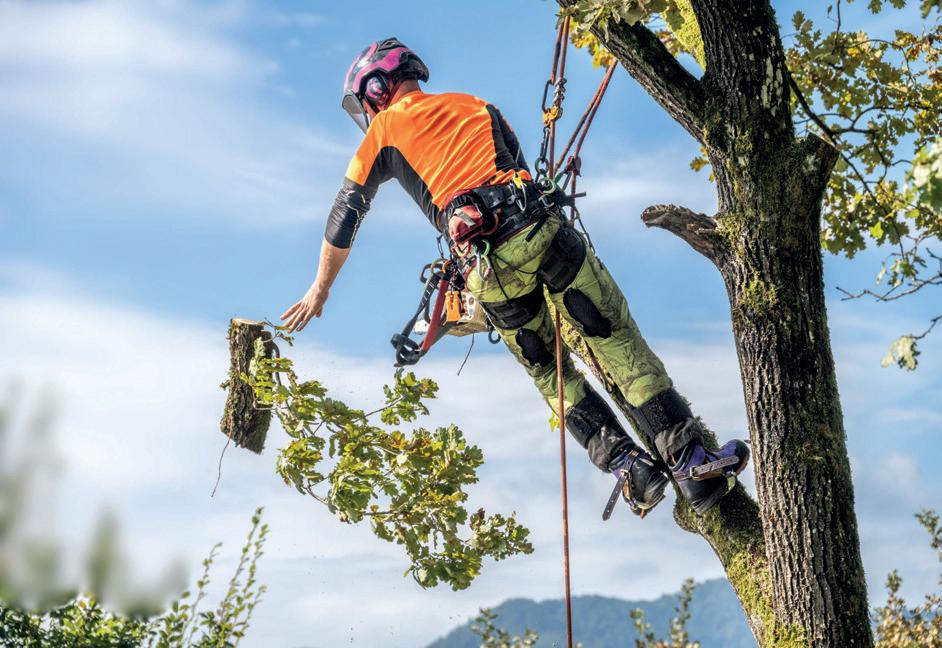

With funding from WIRES National Wildlife Grant Program and Evolution Mining, and support from local landholders and community groups, an initiative set out to restore critical habitat.
In 2023 Burnett Catchment Care Association (BCCA) launched a project in the Upper Burnett region near Monto, Queensland, to support one of Australia’s most threatened arboreal mammals: the hollow-dependent Greater Glider (Petauroides volans).
A central part of the project involved providing immediate denning sites in landscapes where natural hollows were scarce due to historical clearing and the slow rate at which large hollows form.
To address this, BCCA engaged Habitec, specialists in carved-hollow creation, to deliver durable, naturalistic alternative habitats directly into standing trees. Habitec’s carved hollows provide Greater Gliders with secure refuges that mimic the function of old-growth cavities while retaining living habitat structures.
Alongside Habitec’s carved hollows, nest boxes were built locally by the Monto Men’s Shed and installed across grazing properties. The combination of carved hollows and nest boxes offered both short-term and long-term habitat solutions, ensuring a greater range of den sites across the project area.
The project also focused on knowledgesharing. Workshops and field days brought together graziers and ecologists. Community members were able to learn about Greater Glider ecology, the importance of hollow-bearing trees, and practical steps for habitat enhancement. BCCA also established monitoring through iNaturalist to capture and record local sightings, engaging the broader community in ongoing conservation.
The monitoring has already shown strong results. In one of the project’s trees with both carved hollows and nest boxes, the Feathertail Glider, Squirrel Glider, and Common Brushtail Possum have all been recorded actively using the habitats. This demonstrates the immediate value of

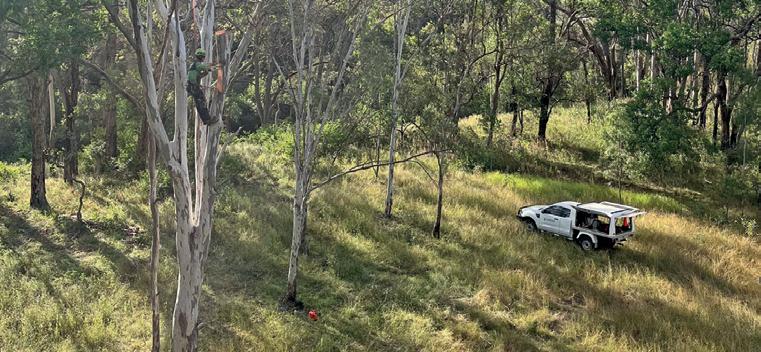
The project continues to be strengthened by the people behind it.

combining these techniques to provide habitats for a diverse range of hollow-dependent fauna.
In addition to these outstanding ecological outcomes, the project continues to be strengthened by the people behind it. Collaboration between dedicated and passionate individuals, from local landholders to community groups and specialist practitioners, has been an invaluable part of the project’s success, underscoring the power of shared commitment in conservation work.
By integrating modern arboricultural techniques, such as hollow carving, with traditional nest-box programs and landholder stewardship, the project has created a strong model for threatened-species recovery. It’s demonstrated how arborists, community groups, and conservation bodies can collaborate to achieve tangible outcomes for hollowdependent fauna.
This case study has highlighted the role of carved hollows in conservation practice. For arborists looking to expand their professional toolkit, the new book Carved Hollow Creation: A Conservation Arborist’s Field Guide is the go-to resource. Packed with step-by-step guidance, proven techniques, and lessons from projects like this one, it’s an essential reference for anyone working to support hollow-dependent wildlife. Order online today at habitec.org.au and take your arboricultural practice to the next level.















ETS and STIHL are leading the way in infrastructure and environmental management.
F or more than 40 years, ETS Infrastructure Management has been a driving force in Australia’s infrastructure and environmental services sector. Proudly Australian owned and operated, the company has built a reputation for innovation, reliability and excellence.
With more than 1100 skilled professionals and 45 depots and offices nationwide, ETS is uniquely positioned to meet the diverse needs of clients and communities across the country. This footprint ensures rapid response times, operational efficiency and consistent service, whether the job is in a bustling city or deep in regional Australia.
ETS’s commitment to excellence extends beyond infrastructure. The safety, wellbeing, and efficiency of its people are central to its success. This philosophy drives ETS to adopt cutting-edge tools and practices that enhance productivity while protecting its workforce.
One of ETS’s most enduring and impactful partnerships is with STIHL, a global leader in outdoor power equipment. This collaboration is more than a supplier relationship. It’s a strategic alliance built on shared values of safety, innovation, and sustainability.
Matt Wallace from ETS reflected on the depth of this relationship: “I remember asking my old man how long ETS has been using STIHL equipment. ‘I reckon it must be nearly 40 years.
“If I still had that first chainsaw today, it’d start on the second pull,” he added with a grin.
“Over those four decades, ETS and STIHL have built an incredible partnership. We’ve witnessed tremendous innovation in its products, from groundbreaking advancements to the latest batterypowered electric chainsaws. The quality has always been unmatched, and the commercial lineup strikes the perfect balance of value and durability that keeps our operations running strong.”
Today, ETS operates with a fleet of more than 500 STIHL tools, chosen

for their ergonomic design, powerful performance, and IPX4 weatherresistant rating. These tools enable ETS teams to work efficiently in Australia’s unpredictable conditions — from scorching heat to sudden downpours — while supporting the company’s environmental goals through batterypowered technology.
In a recent collaboration, ETS and STIHL produced a video series showcasing how their partnership supports safe, efficient, and sustainable work practices in green spaces and tree care.
Key STIHL products featured include:
• STIHL ProCom Ear Defenders –
advanced hearing protection that enables clear communication, even in challenging environments like tree canopies or embankments
• STIHL Connect – a smart fleetmanagement system that tracks tool use, schedules maintenance, and reduces downtime
• STIHL AP Battery Tools – with IPX4 protection, these tools deliver consistent performance in all weather conditions, combining STIHL’s reliability with reduced emissions and noise.
Safety is non-negotiable at ETS. Every decision, from tool selection to work process design, prioritises the wellbeing of its people. STIHL’s range of accessories and personal protective equipment (PPE) plays a vital role in this approach. By equipping teams with the right tools and PPE, ETS ensures tasks are completed efficiently and safely. This not only protects workers in the short term, but supports their long-term health, enabling fulfilling careers.
The ETS/STIHL partnership exemplifies how collaboration between industry leaders can drive positive change. STIHL gains valuable insights into the realworld demands of Australian arborists and green-space managers, informing product development tailored to local challenges.
ETS benefits from early access to cutting-edge equipment and the assurance its teams are equipped with

tools designed for their specific needs. This cycle of innovation and feedback keeps both companies at the forefront of their fields.
The shift to battery-powered tools is central to ETS’s sustainability strategy. STIHL’s AP battery range reduces emissions and noise, making it easier for crews to work in urban environments without disturbing residents.
These tools also reduce reliance on fossil fuels and help lower ETS’s carbon footprint. In an era where sustainability is increasingly important to clients, communities, and regulators, this commitment positions ETS as a forwardthinking leader.
Looking ahead, ETS and STIHL are committed to evolving their
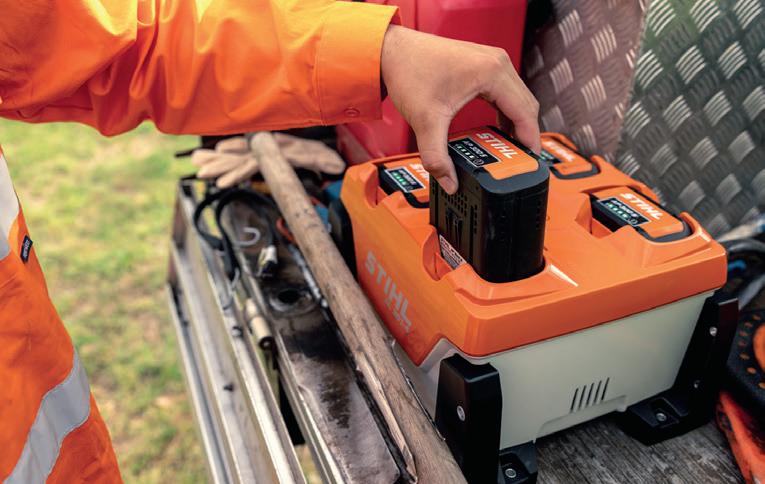
collaboration to meet the changing needs of the green-spaces and treecare industries. This includes exploring new technologies, expanding training programs, and integrating data-driven solutions like STIHL Connect into daily operations.
The goal is to create a safer, more efficient, and more sustainable industry — one where workers are empowered with the best tools and practices, and communities benefit from vibrant, wellmaintained green spaces.
The partnership between ETS and STIHL is a testament to what can be achieved when two industry leaders unite around shared values and a common vision. Together, they’re setting new benchmarks for safety, efficiency, and sustainability in managing Australia’s green spaces.
For ETS, the collaboration continues a legacy of innovation and excellence. For STIHL, it’s an opportunity to refine products that meet the demanding needs of Australian professionals. For the communities they serve, it means greener, safer, and more vibrant public spaces.
To learn more about ETS Infrastructure Management visit ETS.com.au.
To discover how STIHL can provide business solutions, scan the QR code to arrange a demonstration.

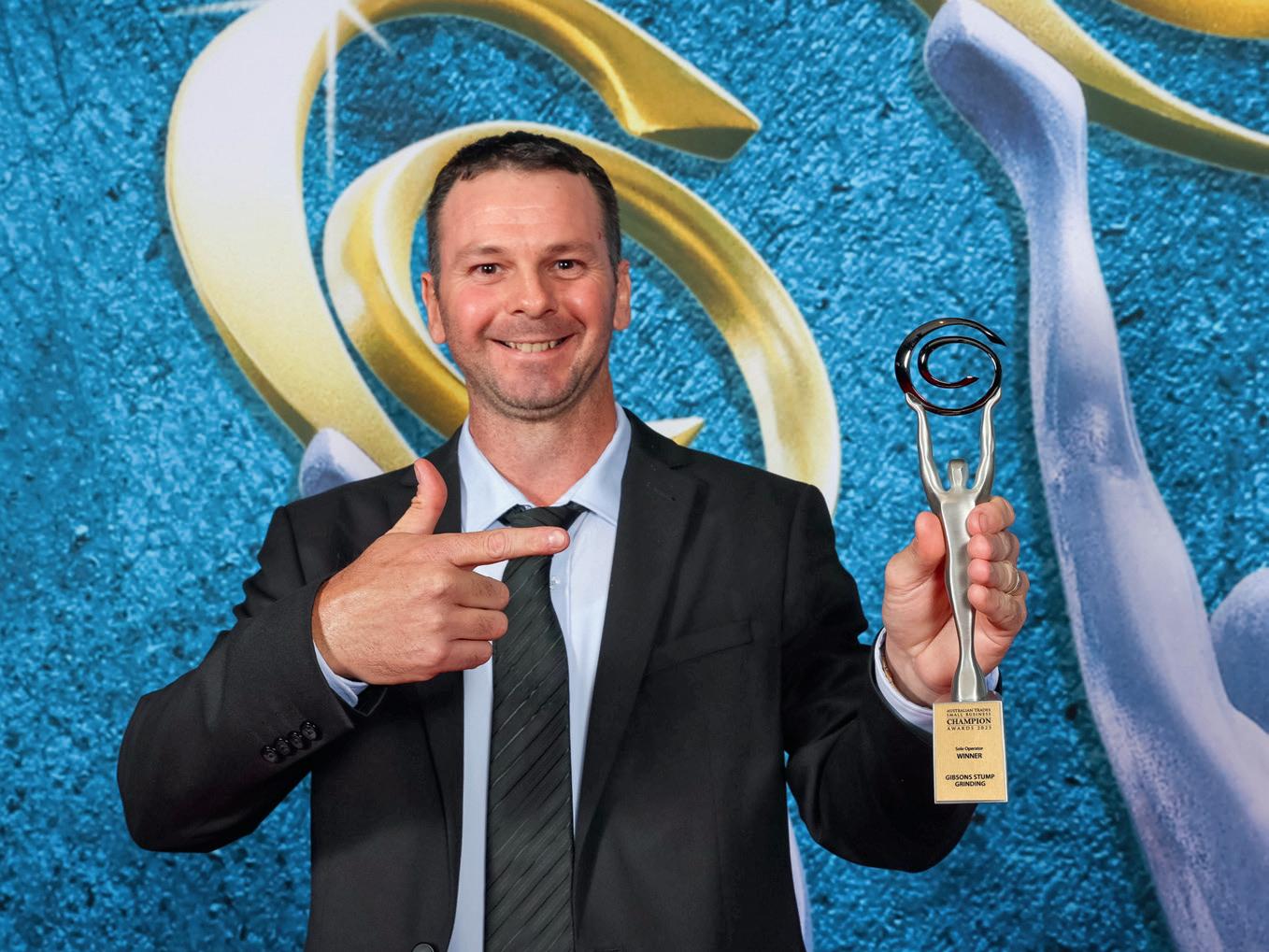
Blake Gibson, owner of Gibsons Stump Grinding, has recently won the Sole Operator category in the 2025 Australian Small Business Champion Awards in Sydney.
Gibsons Stump Grinding was established in April 2021 with the aim of providing professional, reliable, stumpgrinding services throughout North Queensland.
Over the years, the company has worked to raise the standard of stumpremoval services in the region, combining efficiency with a strong focus on customer satisfaction. But owner Blake Gibson’s journey to success hasn’t been without challenges.
“I was diagnosed with Type 1 diabetes in March 2022 at the age of 32,” the cheerful Queenslander told The Australian Arbor Age. “It wasn’t long after I’d started my
business. To be able to balance my health and still achieve this is something I’m really proud of. It’s amazing to think a small stump-grinding business like mine could win this award.
“It’s a great thing for our industry,” he continued. “It shows stump grinding is a recognised and respected trade, and no matter what happens to challenge your faith, you can still run a business and achieve big things.”
Grinding it out
Although it was Blake’s first win, it wasn’t the first time he’d been recognised in the awards. He was a finalist in both 2023 and
2024, but the win this year has made a huge impact.
“This recognition is a huge honour for both myself and my family. It shows that even as a small, locally owned business, we can achieve big things with the support of our community. Living with Type 1 diabetes makes the achievement even more meaningful, and I hope it inspires others managing health challenges to keep chasing their goals,” said Blake.
The climate in far north Queensland makes outdoor work tough under any circumstances, and Blake’s diabetes means it’s even more difficult, but he
hasn’t let it slow him down.
“I do all types of residential work,” he said. “Probably 40 per cent of our work is grinding Golden Cane.
“In summertime the heat and humidity here are absolutely brutal, and once I start sweating it makes the glucose level drop a fair bit, so I have to manage my diabetes while I’m working. It’s not easy to keep the blood sugar level at a happy medium. I have to stop and drink a lot of juice poppers just to get my sugar levels back up.
“Obviously the harder I work the harder that becomes to manage.
“It’s not for the fainthearted, I guess,” he said, with a laugh. “There’s a lot of blood, sweat and tears to get through the day sometimes. But it is what it is, eh? I just keep grinding on.”
The Australian Small Business Champion Awards is the largest program of its kind in Australia, celebrating outstanding businesses across more than 100 industries.
Blake hopes his win will inspire other small-business owners across the country.
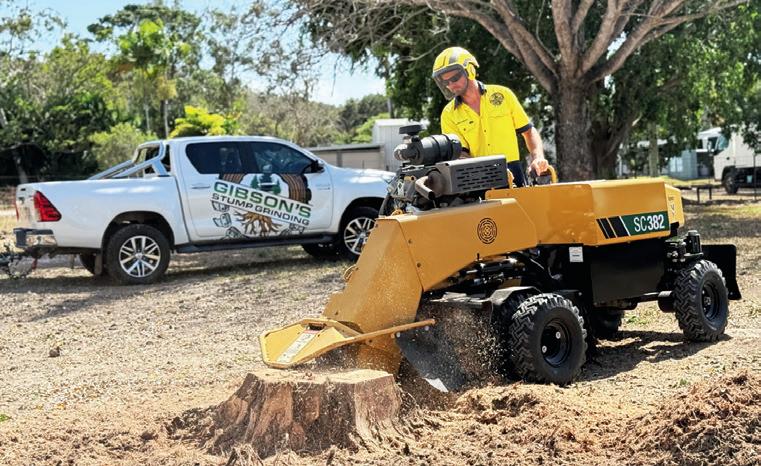
Blake hopes his win will inspire other small-business owners across the country, as well as members of the Type 1 diabetes community, showing that with determination and resilience it’s possible to overcome setbacks and achieve success.
“I love what I do,” said Blake. “I enjoy it.” Maybe next time things aren’t going your way, log on to gibsonsstumpgrinding.com.au. You’ll find a bloke with a wide grin and an inspirational story that might help you tough things out.
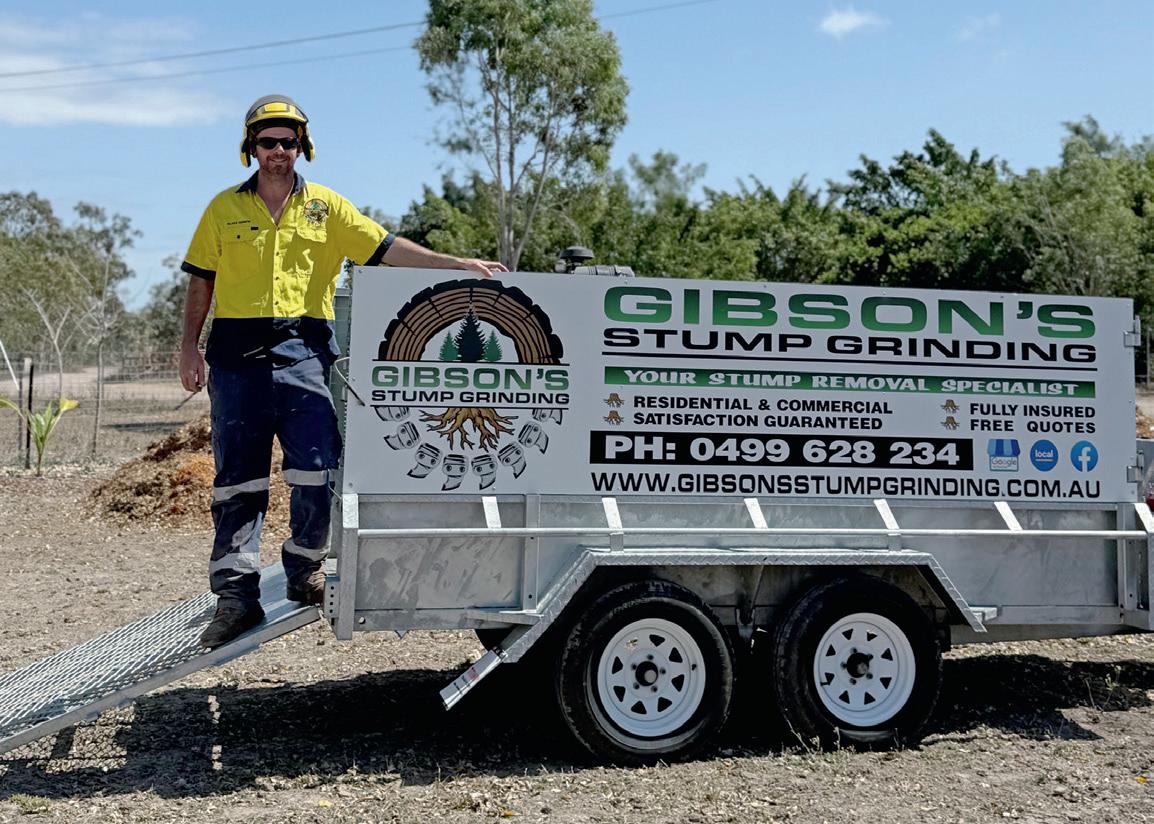
From safer lifting to improved site efficiency, telehandlers are becoming an essential tool in arboriculture. Merlo machines are helping arborists work smarter, safer, and more sustainably.
The arborist industry has always demanded machinery that combines strength, precision, and reliability. From large-scale removals to intricate residential jobs, arborists face the daily challenge of balancing safety, efficiency, and minimal site disturbance. Traditionally, this has meant relying on a mix of cranes, loaders, and manual handling.
But as worksites become tighter and expectations for efficiency and sustainability grow, arborists are beginning to look for a smarter solution. Enter the telehandler, a versatile machine fast becoming a game-changer in tree care. And leading the way in Australia and New Zealand is Merlo, a global name renowned for its innovative and safety-first approach.
Cranes have long been a staple for arborists, but they come with high mobilisation costs, large footprints, and limited adaptability once on site. Loaders and skid steers provide lifting power but often struggle in confined spaces or when precision is required. Manual handling, while sometimes unavoidable, exposes workers to unnecessary risks.
Telehandlers bridge the gap. They offer the lifting capacity of a crane, the manoeuvrability of a loader and the precision of a material handler all in one machine. For arborists, this means one investment can replace multiple pieces of equipment while expanding the scope of what can be achieved safely and efficiently.
Safety is at the heart of every arborist operation, and it’s also at the core of Merlo’s design philosophy. Features such as excellent all-round visibility, advanced load-management systems, stabilisers, and frame-levelling technology ensure operators can work with confidence, even on uneven ground.
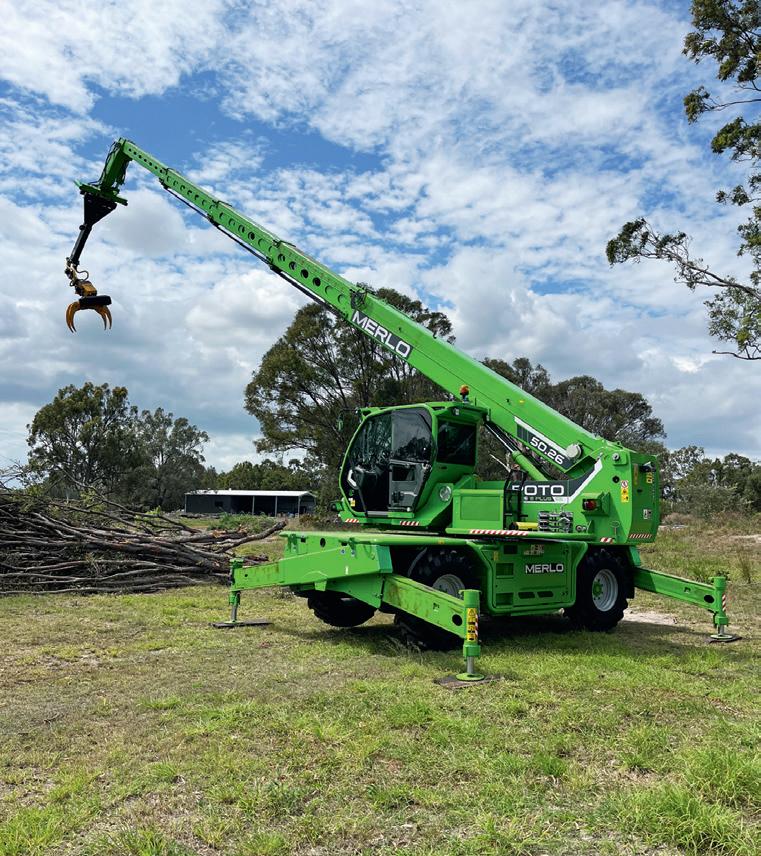
Merlo joystick controls provide fine, responsive movements, enabling operators to handle loads with millimetre precision. This is particularly important in tree care where delicate handling of cut sections or equipment can make the difference between a safe operation and a costly accident.
By reducing the need for ground crew to manually manoeuvre heavy or awkward pieces, telehandlers also minimise the risk of strain and injury, creating safer worksites across the board.
No two jobs are the same in arboriculture. One day might involve dismantling a large gum in a residential street, the next clearing storm damage across a wide block. This variety demands machinery that can adapt quickly, and this is where telehandlers excel.
Compact Merlo models such as the TF27.6 or TF33.7 are designed for tight suburban and residential sites, offering excellent manoeuvrability without compromising on lifting power.
Meanwhile, the ROTO series provides 360° turret rotation, allowing arborists to cover a large work zone without the need to constantly reposition the machine.
With the right attachment, a single telehandler can be a bin rotator, a lifting jib, a grab handler, or even work with tree-specific implements. This versatility not only speeds up workflows but also reduces the need to transport multiple machines to site, saving time, labour and costs.
Sustainability is a growing focus in the tree-care industry. Arborists are under increasing pressure to deliver efficient outcomes while reducing environmental impact. Telehandlers align with this shift.
By consolidating multiple functions into a single machine, telehandlers reduce overall fleet size required on site. This means lower emissions, reduced fuel consumption, and less wear on access routes or sensitive ground. Compared to larger cranes or tracked machinery, telehandlers also minimise surface disturbance, leaving sites cleaner and communities less impacted.

With the right attachment, a single telehandler can be a bin rotator, a lifting jib, a grab handler, or even work with tree-specific implements.
Telehandlers are no longer confined to the construction or agricultural sectors. They’re rapidly proving their value in arboriculture. For businesses looking to improve safety, efficiency, and sustainability, they represent a smart investment with long-term benefits.
With decades of experience and a strong dealer network across
Australia and New Zealand, Merlo is helping arborists embrace this shift. Whether it’s compact machines for suburban sites or high-reach ROTO models for large-scale projects, Merlo telehandlers are purpose-built to elevate arborist operations.
To learn how a telehandler can transform your tree-care business, talk to your local Merlo dealer today.
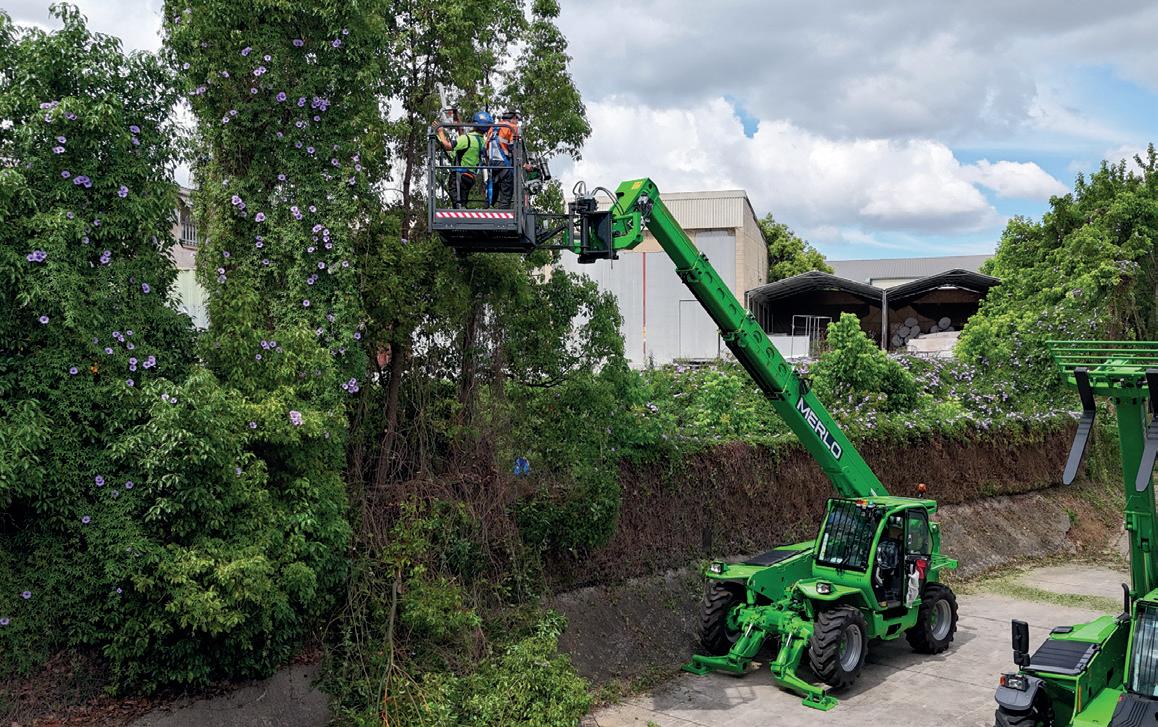

Running a tree business is one of the toughest trades in Australia. The physical work is demanding. But ask any arborist and they’ll tell you the real exhaustion often comes after the ropes are packed away and the chipper is silent. That’s when the paperwork begins.
Launched in 2025 by long-time industry professional Scott Sherwin, Arbor ProAdmin Support is the first dedicated administration service built specifically for arborists.
Unlike generic virtual assistants or outsourced office support, this service is designed around the daily realities of climbing arborists and small-to-medium tree companies. It bridges the gap between what arborists do best – w orking in the trees – and the systems required to keep a business running smoothly.
Scott’s credibility is rooted in more than three decades on the ropes, quoting jobs, and running crews along Australia’s east coast. His career spans roles as a council tree officer, powerline vegetation contracts supervisor, and chainsaw TAE trainer, before settling in Toowoomba. Over 33 years, he’s lived the challenges of balancing business growth with late nights spent chasing council permits, invoicing, or returning client calls.

“I’ve been in the boots of every owner-operator who gets home from a big day only to face hours of admin,” said Scott. “That’s why Arbor ProAdmin exists – to give arborists their evenings back, and to help them focus on billable work.”
Arbor ProAdmin Support covers the full suite of admin needs:
• quoting and client follow-up (including remote quoting via FaceTime and digital site inspections)
• invoicing and debt management to keep cashflow healthy
• scheduling and crew coordination to streamline daily operations
• council paperwork and compliance reporting to remove red tape headaches
• client onboarding and file management, ensuring details are captured correctly
• job system updates across platforms like ServiceM8, Xero, and Google Sheets.
By outsourcing these tasks, arborists can recover between five and 15 hours per week, time that can be redirected into quoting more jobs, supervising crews, or simply spending time with family.
Arbor ProAdmin isn’t just about admin support. It’s about growth. Scott positions the business as a partner for arborists ready to move from surviving to thriving.
The ideal client? The owner-operator with one to three field staff who wants to grow but is drowning in admin.
To find out more call Scott on 0437 293 561.

A new mapping project will provide up-to-date, data on canopy cover across the city of Melbourne. Image:

The More Trees for Melbourne program is helping Victorian families open the door to greener and leafier streets, making suburbs cooler and better to live in.
M inister for the Environment
Steve Dimopoulos and Minister for Planning Sonya Kilkenny have announced new protections for Melbourne’s tree canopy. The announcement also detailed $9.5 million to plant 500,000 more trees across Victoria’s capital.
In addition to the half-a-million trees planted across the city, the new program will deliver half-a-million more trees across Local Government Areas with below-average tree-canopy cover and high heat vulnerability.
Support
To help support the delivery of trees where they are needed most, a new treecanopy mapping project will provide up-
to-date, high-resolution data on urban tree-canopy cover across the city of Melbourne, especially to the west, enabling planning, smarter investment and more effective tracking of progress over time.
There will also be stronger protections for established trees across the state. A planning permit will be required to remove trees taller than five metres on vacant residential lots.
For lots with an existing house or planning approval for a house, a permit will be required for removal of trees within six metres of the front boundary and 4.5 metres from the rear boundary. All permits are to be fast tracked through the current 10-day VicSmart process.
As part of the consultation on the Labor Government’s Plan for Victoria, the community highlighted the importance of green spaces. This feedback has helped shape the plan’s target to deliver 30 per cent tree-canopy cover, with further protections on industrial and commercial land to be introduced at a later date.
The program will be delivered in partnership with local councils and land managers who will be invited to apply for grant funding next year.
Learn more of the More Trees in Melbourne program at environment.vic.gov.au
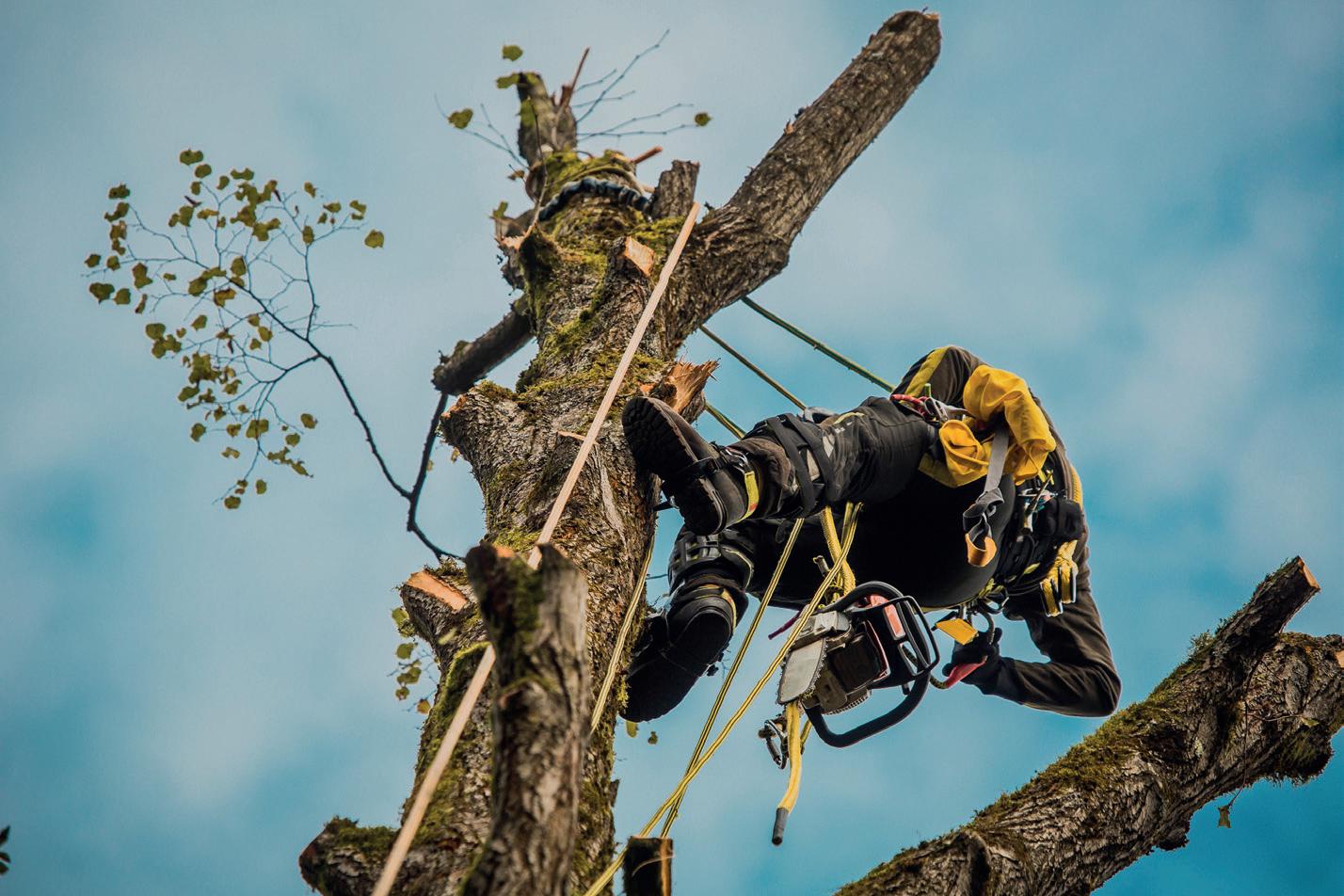
A new digital, purpose-built platform has been launched to help navigate WA’s WHS compliance.
Alan Tait, founder of Taits Consulting and creator of SafetyComply pointed out, “We’ve seen fines ranging from under $100,000 to nearly $1 million handed down in WA over the past year The regulations are over 600 pages long and it’s easy to miss something critical.
“SafetyComply doesn’t replace strong safety leadership or other safety fundamentals, but it does ensure businesses can quickly find, apply and determine their compliance with the regulations.”
Audit-ready
The new software directly addresses the compliance challenge with:
• smart searching to find regulations by keyword or topic
• building digital audits quickly with photo and evidence capture
• ensuring access to the latest regulations
• the ability to complete audits offline for remote sites or where there is no connectivity.
Taiat said the platform effectively enables businesses to reduce administrative burden, demonstrate due diligence, and avoid the risk of costly compliance oversights.
About the system
SafetyComply is a cloud-based compliance platform created in WA by Taits Consulting. It provides instant access to WA’s WHS (Mines) and WHS (General) Regulations 2022, enabling
Build digital audits quickly with photo and evidence capture
faster searches, collaborative audits and real-time updates. The platform helps WHS professionals, contractors, and statutory position holders across WA save time, reduce compliance risk and stay audit-ready.
Learn more at safetycomply.au

A
new study has found poplar trees can naturally adjust a key part of their wood chemistry based on changes in their environment.
The discovery by researchers at the University of Missouri, in collaboration with Oak Ridge National Laboratory and the University of Georgia, found lignin, an abundant natural substance found in almost every plant containing stems, roots and leaves, helps plants stay upright, move water and protect themselves from temperature changes and other environmental factors.
Poplar trees are useful for scientific research because their genome has been fully mapped. This additional knowledge allowed collaborators to discover the chemical makeup of lignin changes based on a tree’s latitude.
The researchers examined 430 wood samples from Populus trichocarpa, a poplar tree species that grows primarily in western North America, from northern California to British Columbia in Canada.
The trees growing in warmer climates produced lignin with a higher ratio of syringyl-to-guaiacyl (S/G), two key chemical building blocks called ‘monomers’, compared with those from colder climates in the higher latitudes and areas of consistently
lower seasonla temperatures.
In addition to the genetic study, the research team used 3D computer modelling to better understand the findings.
“We identified a mutation in an important cell-wall enzyme in poplar trees called ‘laccase’, which was found to control the S/G ratio in this natural population,” Rachel Weber, a senior biochemistry student at the University of Missouri who built the model, said. “So, I was able to utilise a protein structural modelling software called ColabFold to pinpoint the exact location of this mutation within the laccase protein.”
To the team’s surprise, the mutation didn’t show up within the active centre of the protein, suggesting the deposition of lignin in natural settings may be regulated by still uncharacterised signalling pathways.
“This points to a more complex regulation than we initially thought and gives us new clues about how trees adapt and protect themselves,” she said. “This knowledge will help us develop additional hypotheses about how this protein functions and
interacts with the plant’s surrounding environment.”
Looking ahead, the team is now working to genetically engineer poplar trees and soybeans so they can contain more C-lignin, making the biomass of these plants easier to process in nextgeneration biorefineries.
The study, Factors underlying a latitudinal gradient in S/G lignin monomer radio in natural poplar variants, was published in the journal Proceedings of the National Academy of Sciences.
Co-authors are Yen On Chan and Ganesh Panzade at the MU Institute for Data Science and Informatics; Trupti Joshi at the Christopher S. Bond Life Sciences Center and Mizzou’s Department of Biomedical Informatics, Biostatistics and Medical Epidemiology; Jin Zhang, Mengjun Shu, Connor Cooper, Russell Davidson, Jerry Parks, Gerald Tuskan and Wellington Muchero at Oak Ridge National Laboratory; Richard Dixon at the University of North Texas and Pradeep Kumar Prabhakar and Beeanna Urbanowicz at the University of Georgia.

